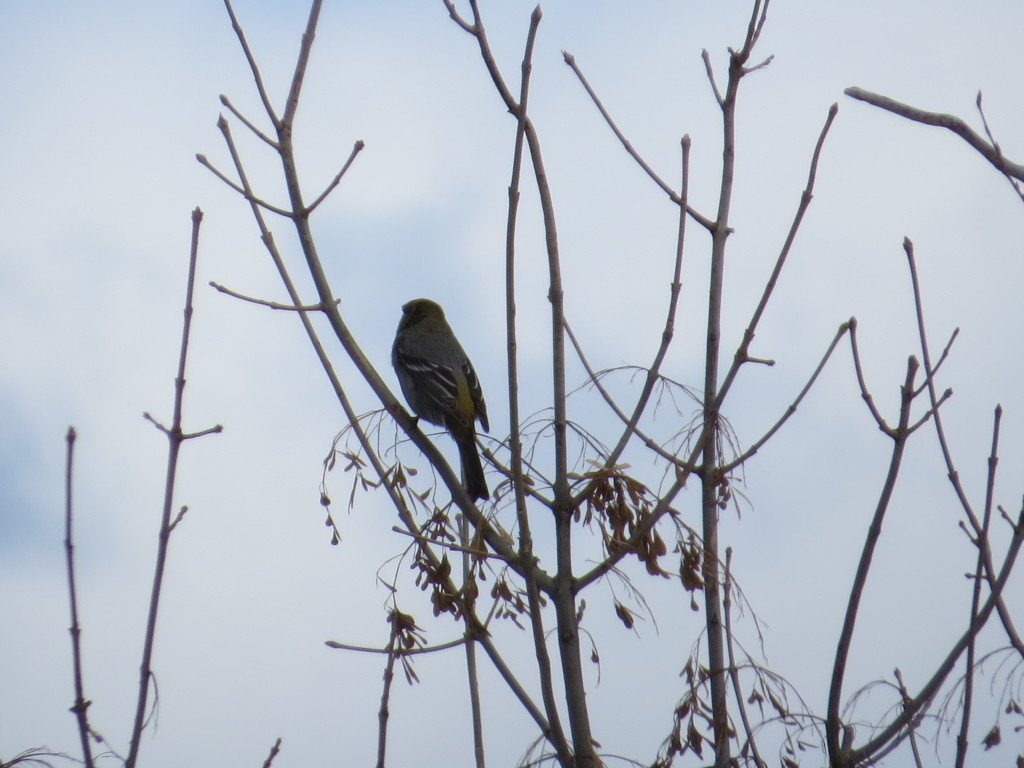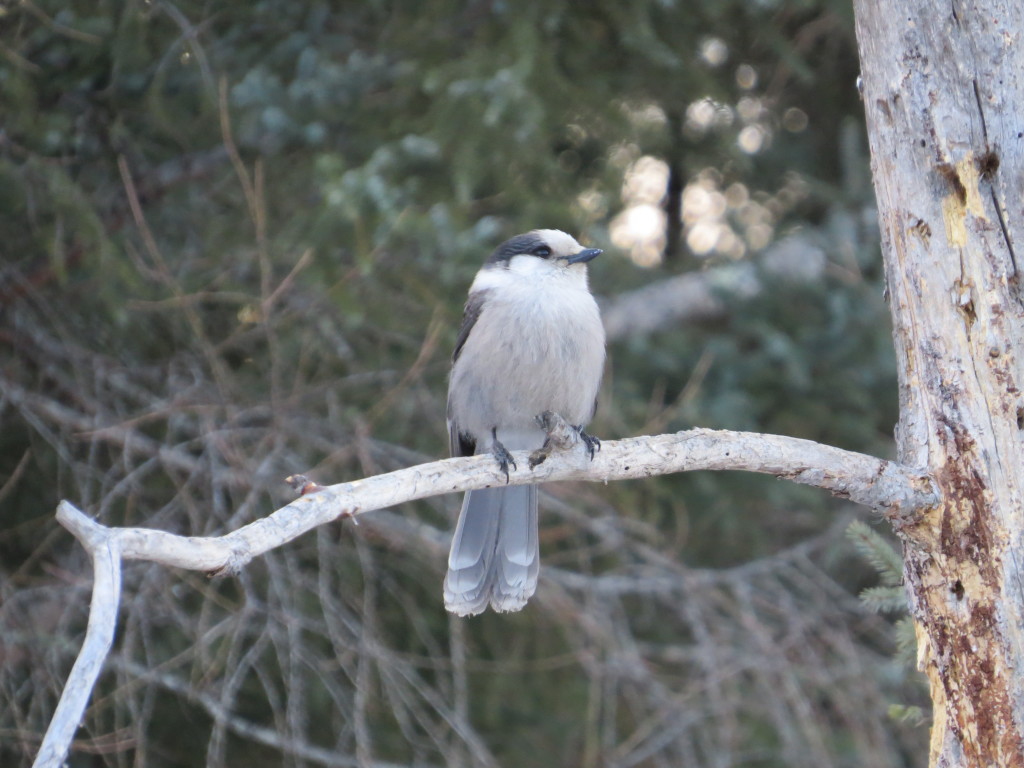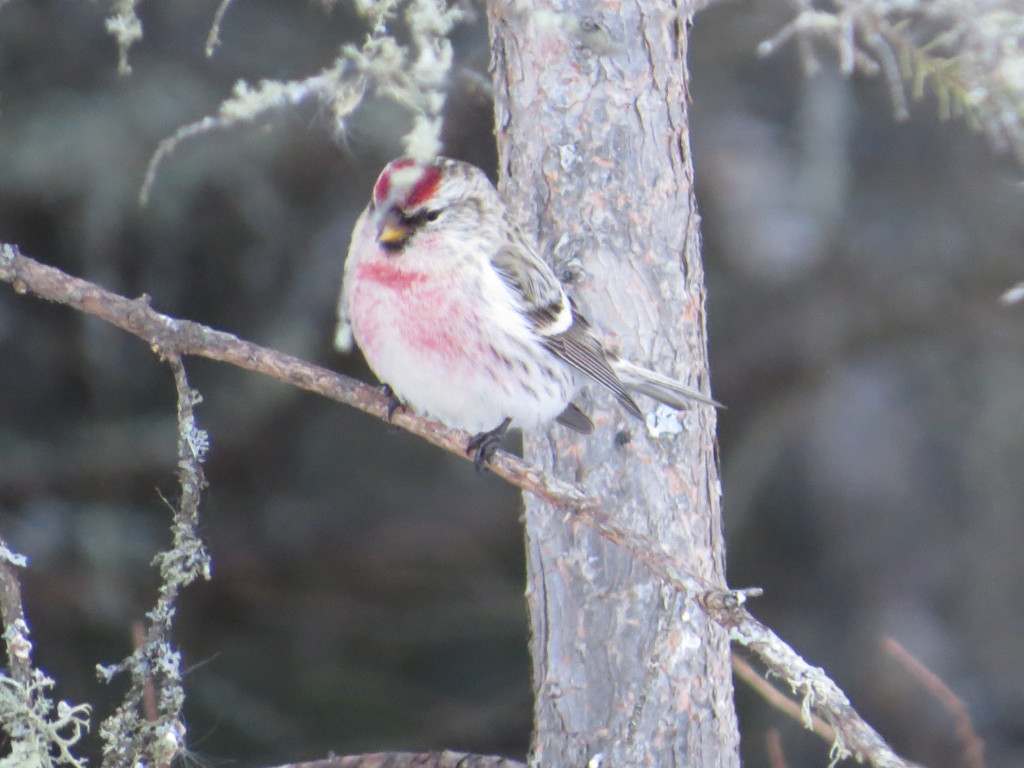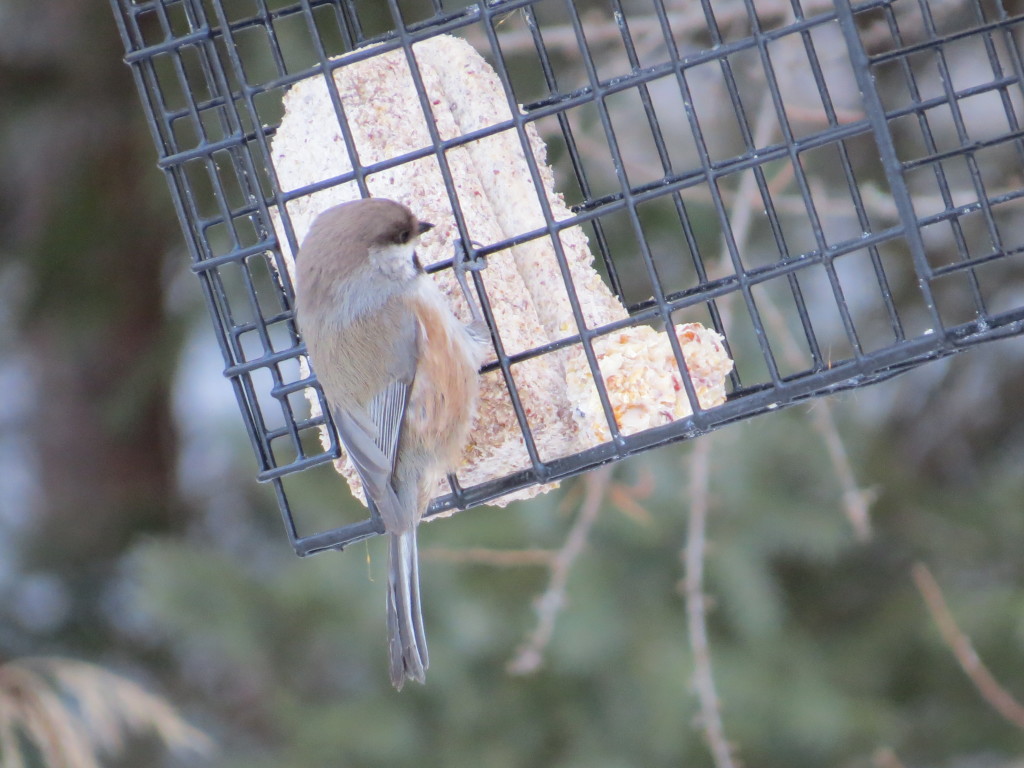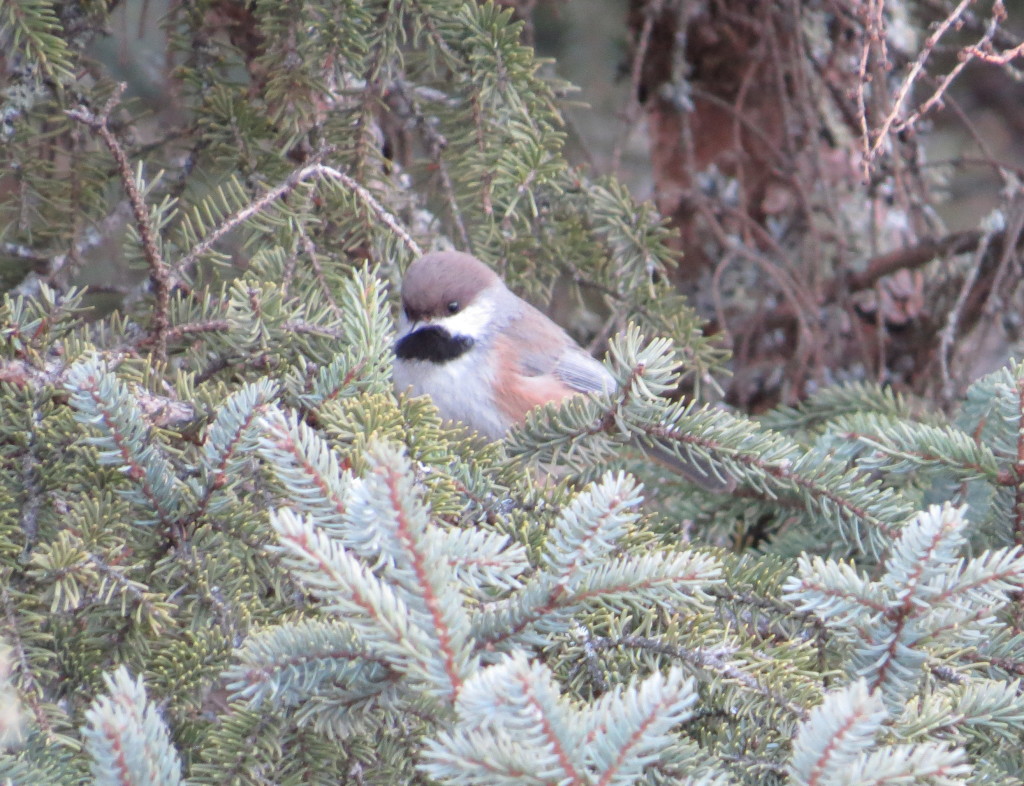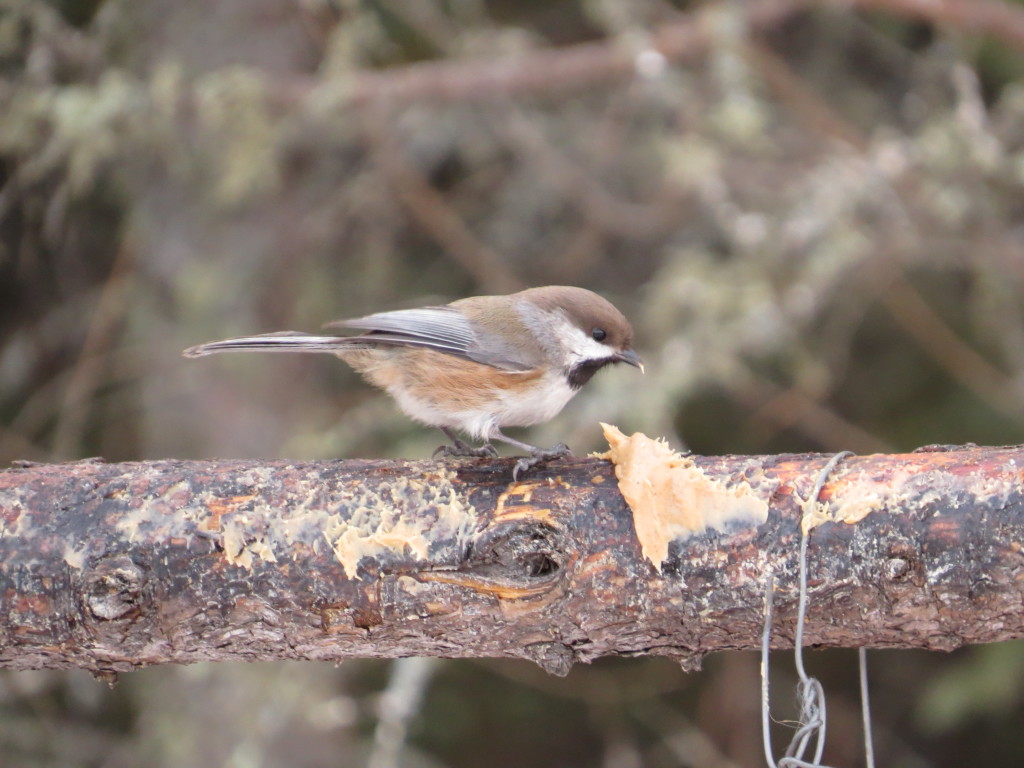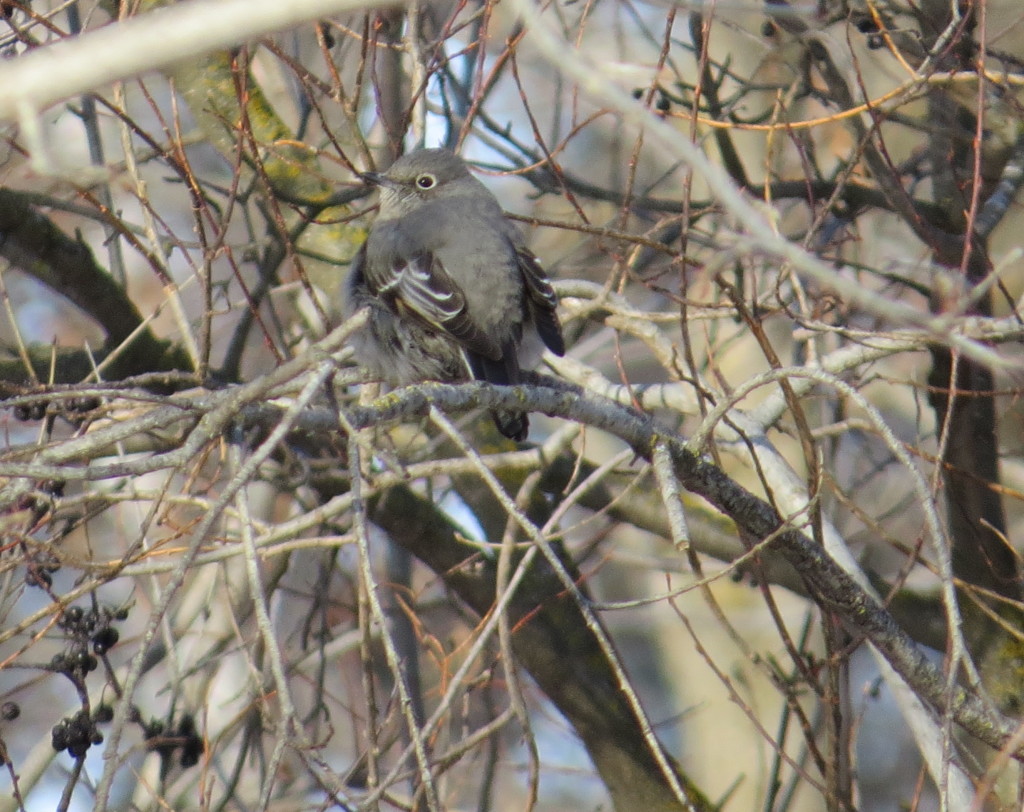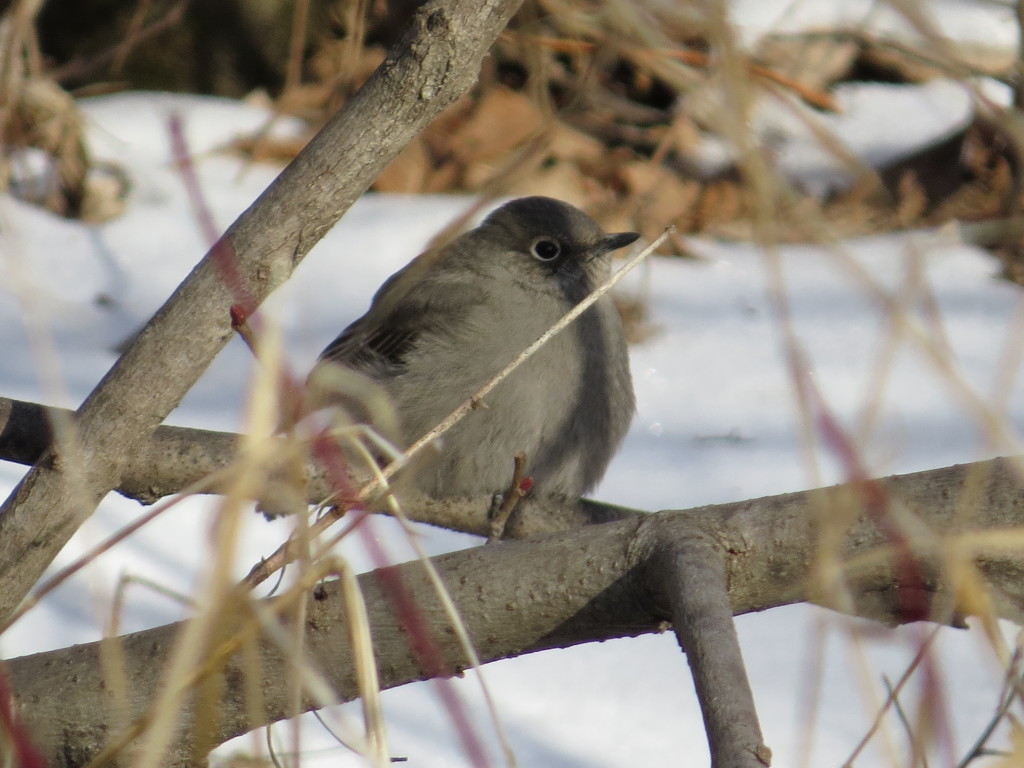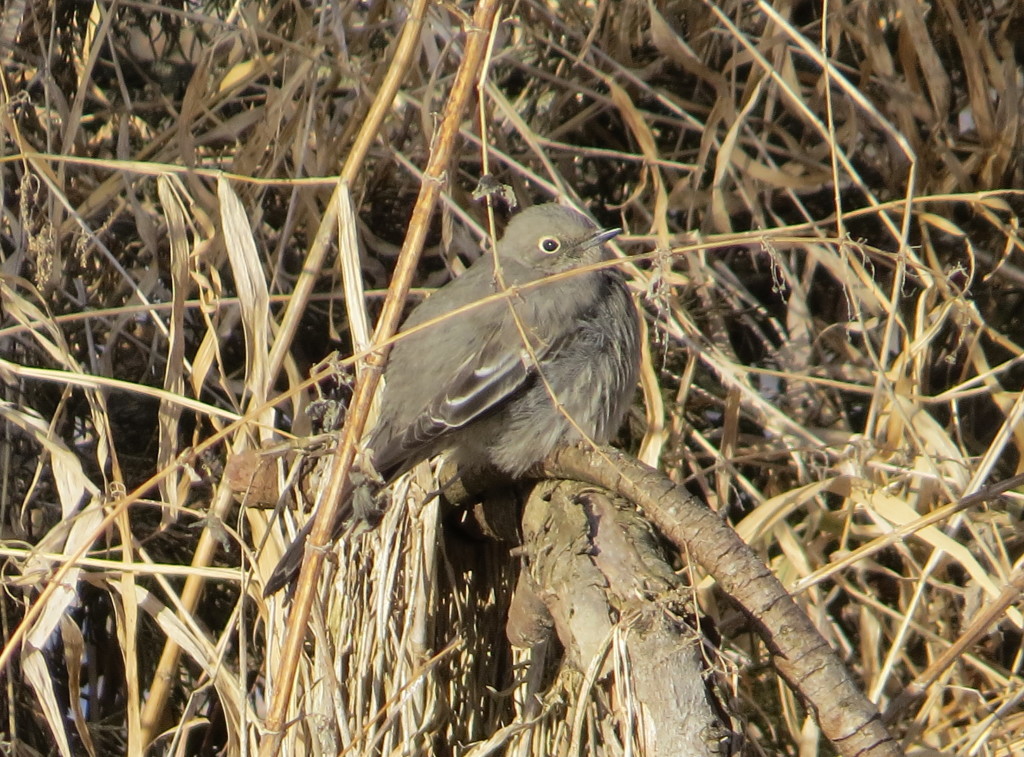I had seen the report and dismissed it quickly. There was no way that a White-eyed Vireo would stick around long enough to chase it. Their presence in Minnesota during migration is ephemeral. Then I got a phone call a couple weeks ago that changed my thinking. Ron Erpelding, a locally-based 87-county lister, calls me whenever something good shows up within a reasonable distance from Willmar. Ron told me that he went to see the Vireo at Flandrau State Park in New Ulm a few days after the initial sighting and that it was singing up a storm. Hmmm. Could it be that this misplaced Vireo was trying to set up a territory for the summer?
The singing White-eyed Vireo was intriguing on its own. The location, though, was what pushed the decision to chase over the edge. New Ulm was only an hour-and-a-half away, but more importantly, it was the city where Melissa and I got our first teaching jobs. This chase would be a family affair and a chance for Melissa and I to revisit a beautiful place we called home for a few years and show the kids our first school, first house, etc. It’s always held a special place in our hearts.
Nestled in the scenic Minnesota River Valley, New Ulm boasts the highest per capita population of German descendents, and it shows. It is a town where the industriousness of its residents is showcased in well-kept, stately brick homes and perfectly landscaped yards (there is no bad part of town), and the love of beer and all things sausage is proclaimed everywhere. It is a town where you can (and I did) roll out the barrel. You name a season, and I’ll name a beer festival for that season. New Ulm is the only place in America, and this is no joke, where schools offer up vats of sauerkraut on hot dog day and the kids pile it on. Life is a continual party in New Ulm, and partying it up just upriver from the famed Schell’s Brewery was a little bird I wanted to see.
After a quick drive-by of the old house, we went straight to Flandrau State Park right in town on the Cottonwood River. There were other birders responding to the call and making the short hike along the river to the spot. One guy, Bill Marengo, was in the parking lot and told us the bird was indeed present this morning. Yes!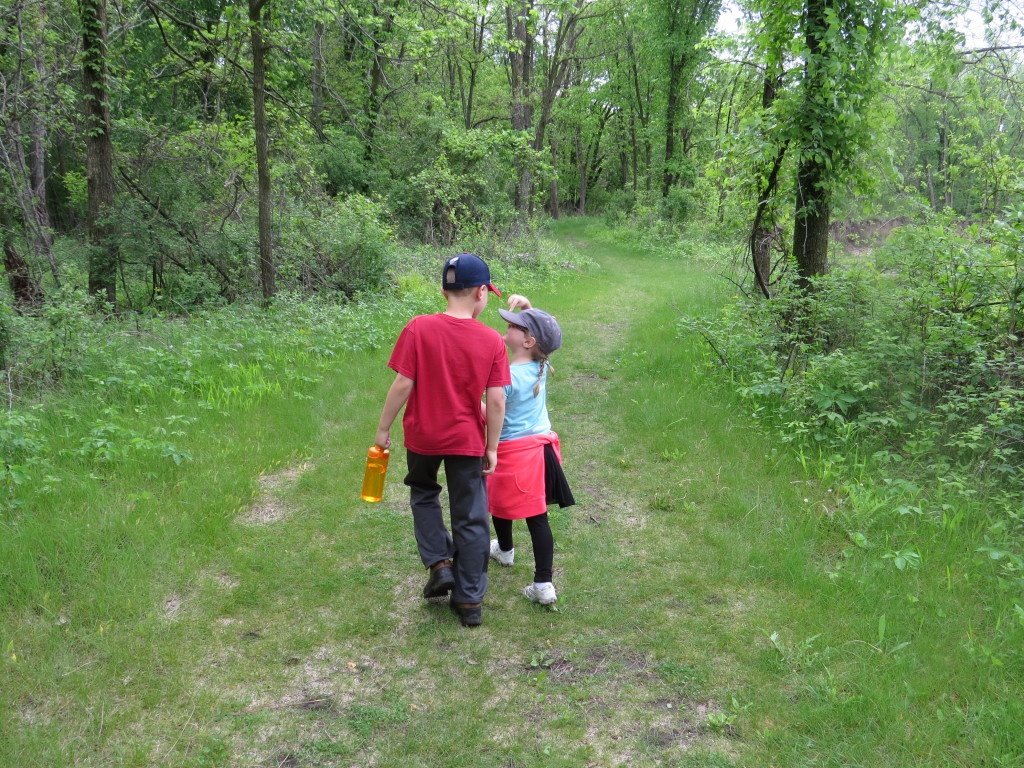 Getting to the scene a few hundred yards down the trail, I heard the bird immediately. Several birders and I strained to locate it. One lady claimed she saw it.
Getting to the scene a few hundred yards down the trail, I heard the bird immediately. Several birders and I strained to locate it. One lady claimed she saw it.
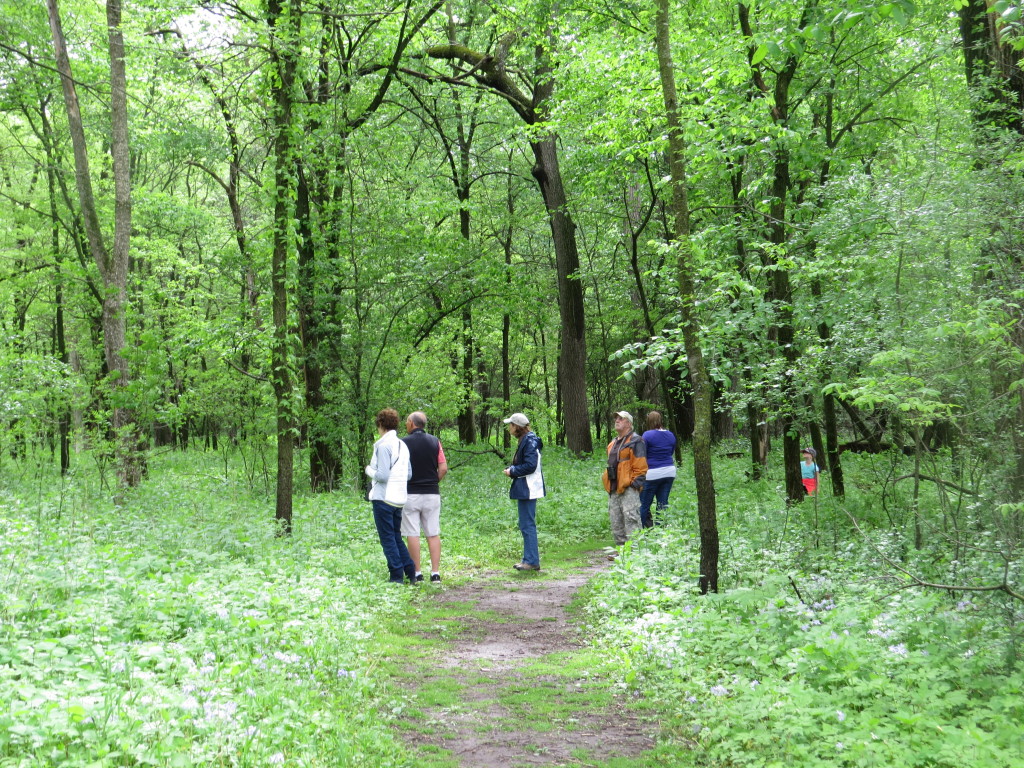
The rest of us didn’t. Then, we weren’t hearing it at all. After an hour or so, I decided to call it quits. You can only stare at the same trees for so long. Hiking back to the parking lot I checked my email and saw an eye-bulging report from the very same Bill Marengo with whom we had just spoken. He had made his way over the waste-water treatment ponds in nearby Sleepy Eye and found gobs of shorebirds–really good shorebirds. The trip went from being a downer to all the sudden being exciting again.
Once we were back at the car at Flandrau, there were some FOY Indigo Buntings to enjoy– a paltry, albeit lovely, consolation prize. The promise of some shorebird lifering was making up for any disappointment over the White-eyed Vireo.
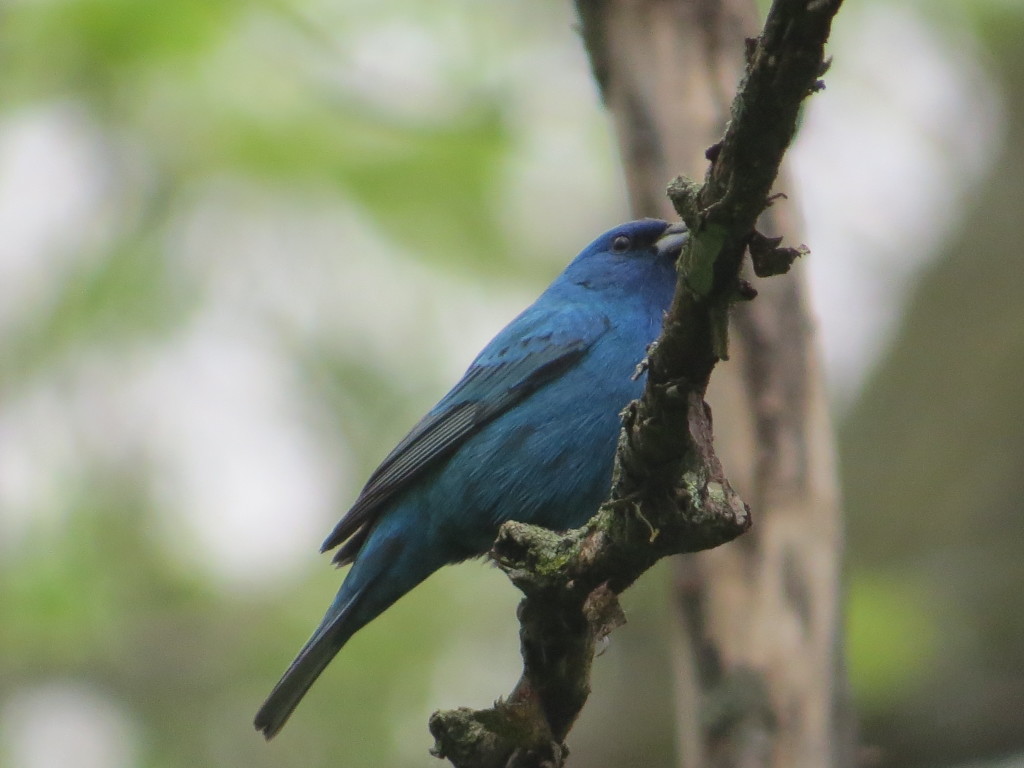 Before we left, I thought I heard the soft bee-buzzzz call of a Blue-winged Warbler. Nah, couldn’t be…
Before we left, I thought I heard the soft bee-buzzzz call of a Blue-winged Warbler. Nah, couldn’t be…
Even with a heard-only White-eyed Vireo and several potential lifers in Sleepy Eye, probably the best find of the day came when we stopped for a hot dog lunch at one of our old haunts, the Kwik Trip. (And yes, there was a huge tub of sauerkraut with the condiments). As we were leaving, who should we run into but our old neighbor and friend, Adam! The next half hour passed quickly as we reminisced, laughed, and caught up with Adam; I didn’t even have the usual anxiety when life birds are on the line.
Eventually we did part company and make the 15-minute drive to Sleepy Eye. Bill wasn’t kidding about the shorebirds. There were two main groups, each in different ponds and close to the entrance.
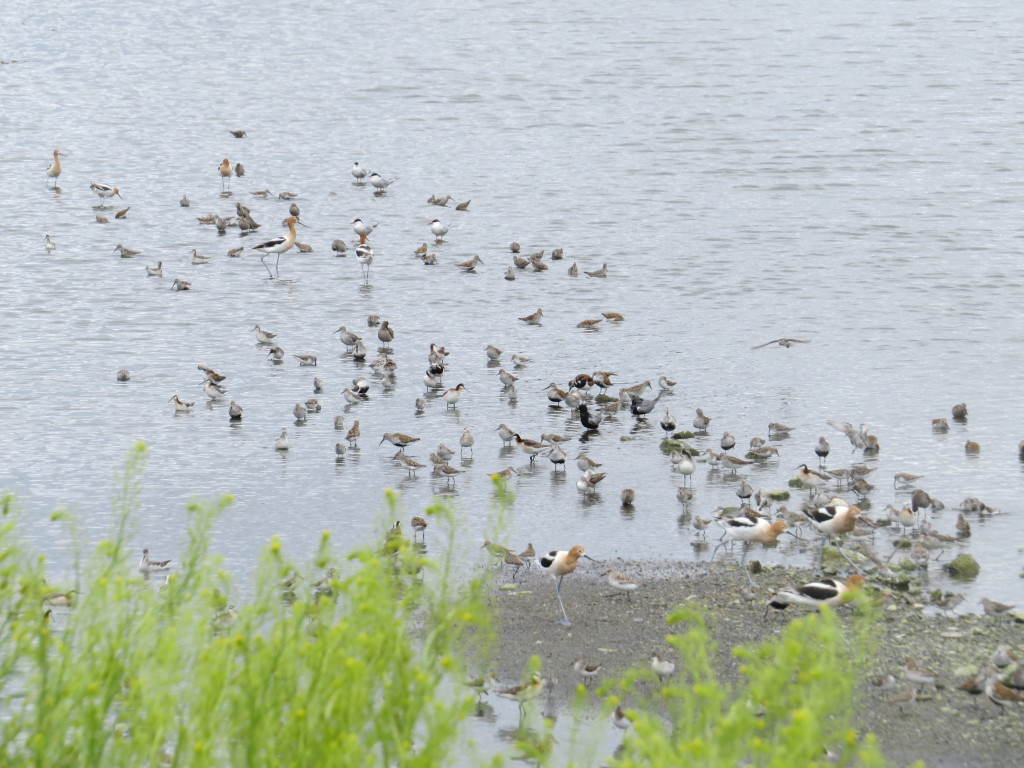
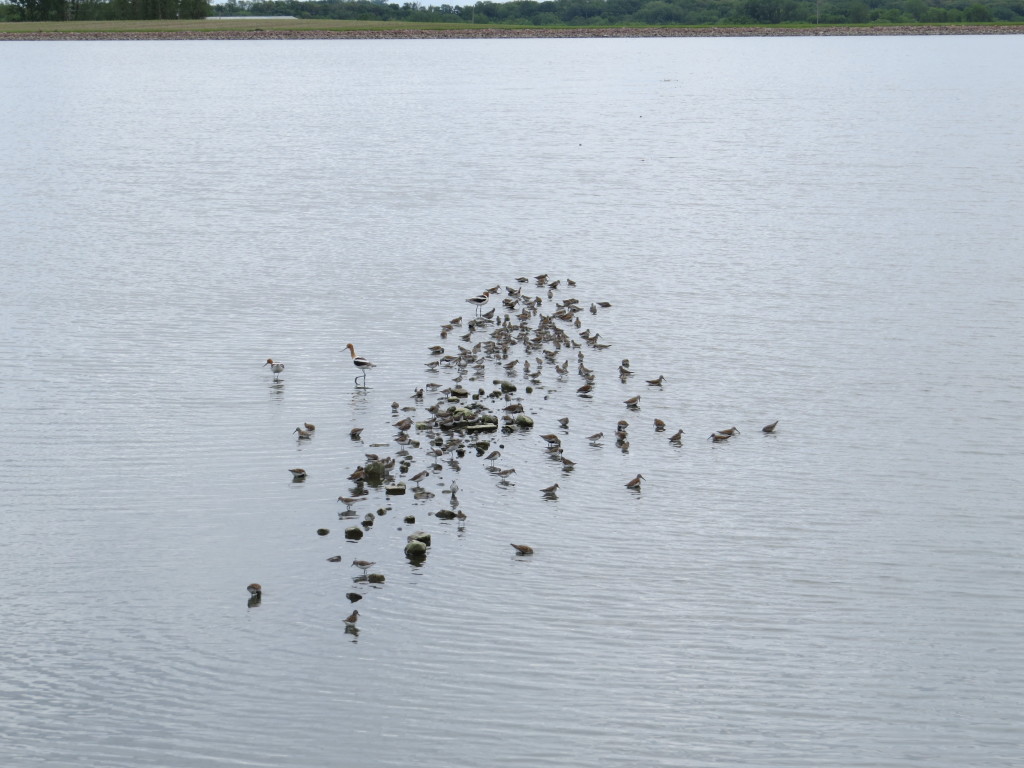
Birders who read this have probably already tried to sort through some of the goodies in these photos. When I was sorting through them in real life, I was looking for one, larger bird in particular that Bill reported–the Hudsonian Godwit.
Got it.
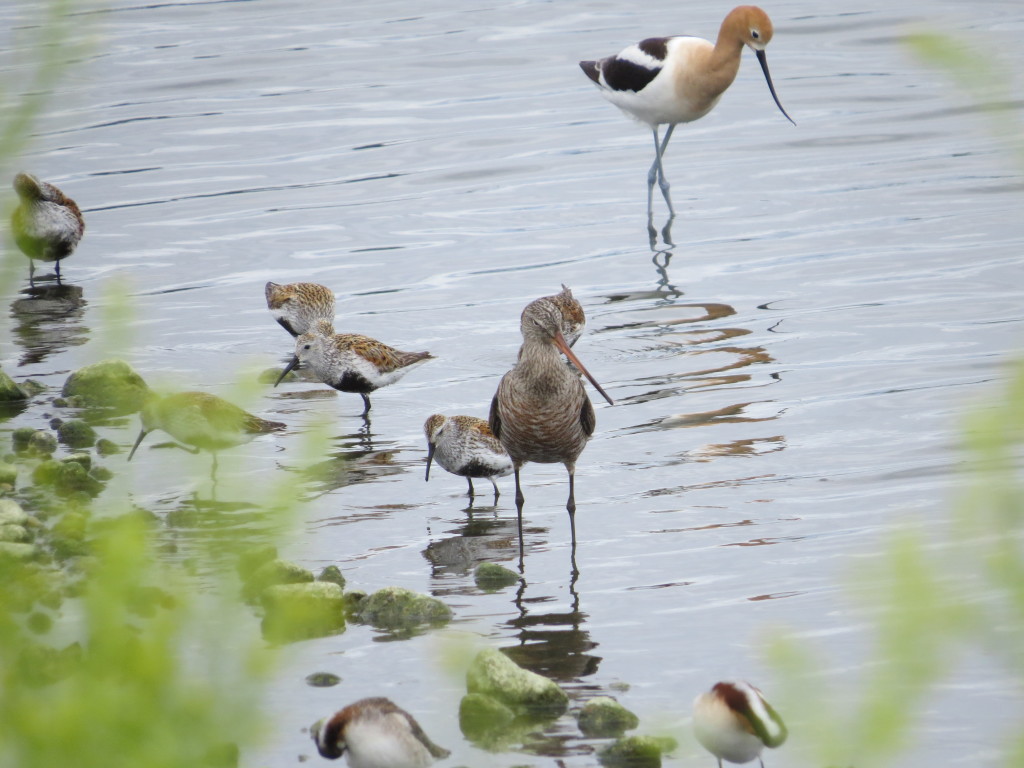
It was not the more striking male that I was hoping for, but when it comes to Hudwits, beggars can’t be choosers.
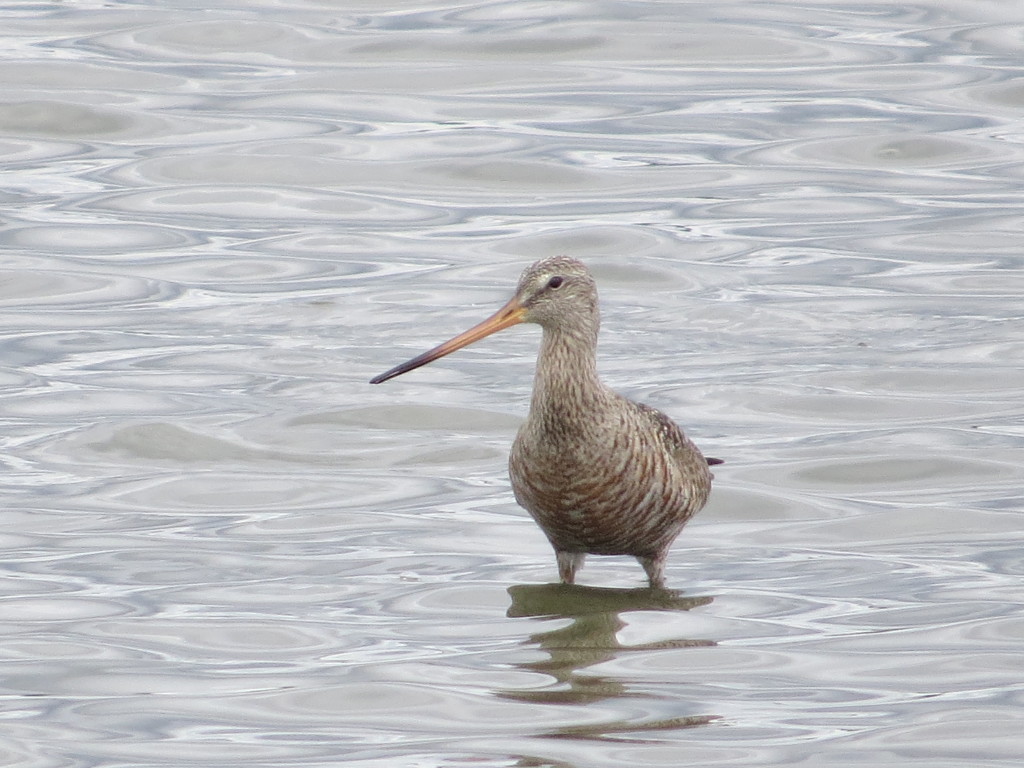
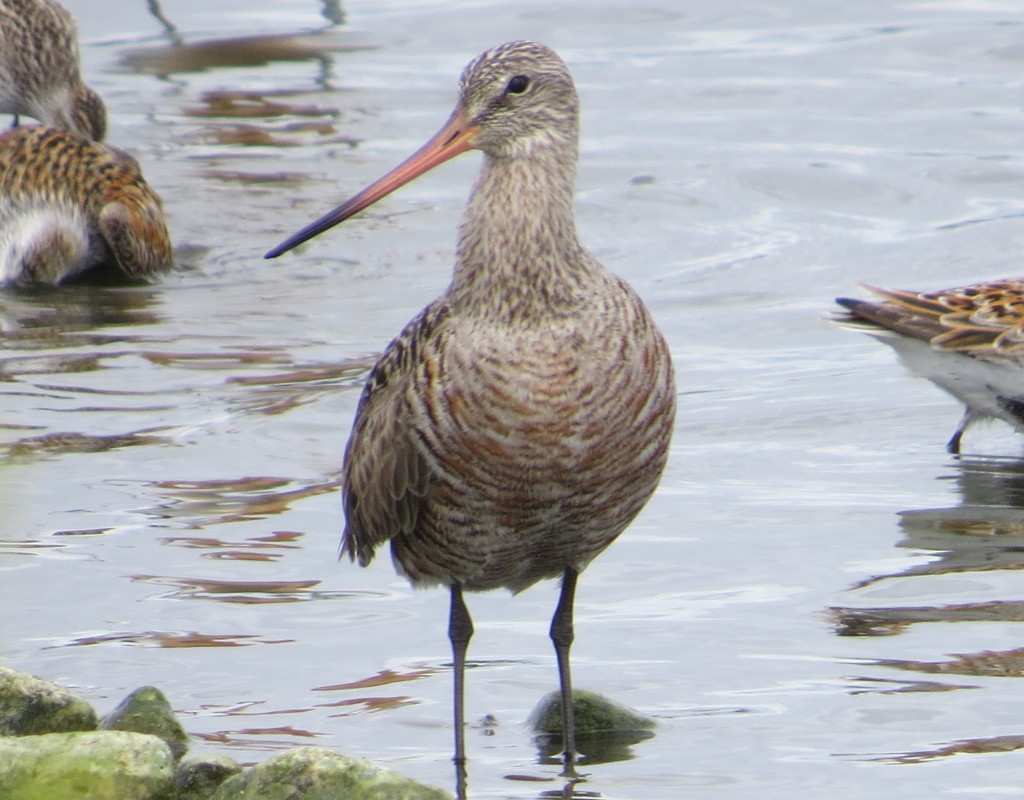
It was pretty sweet to pick up this unexpected life bird, but the fun didn’t stop there. Bill Marengo was still on the scene and helped me pick out a Sanderling lifer, even letting Evan and I get some good scope views. I was surprised by how plump they are and close in size to the Dunlin.
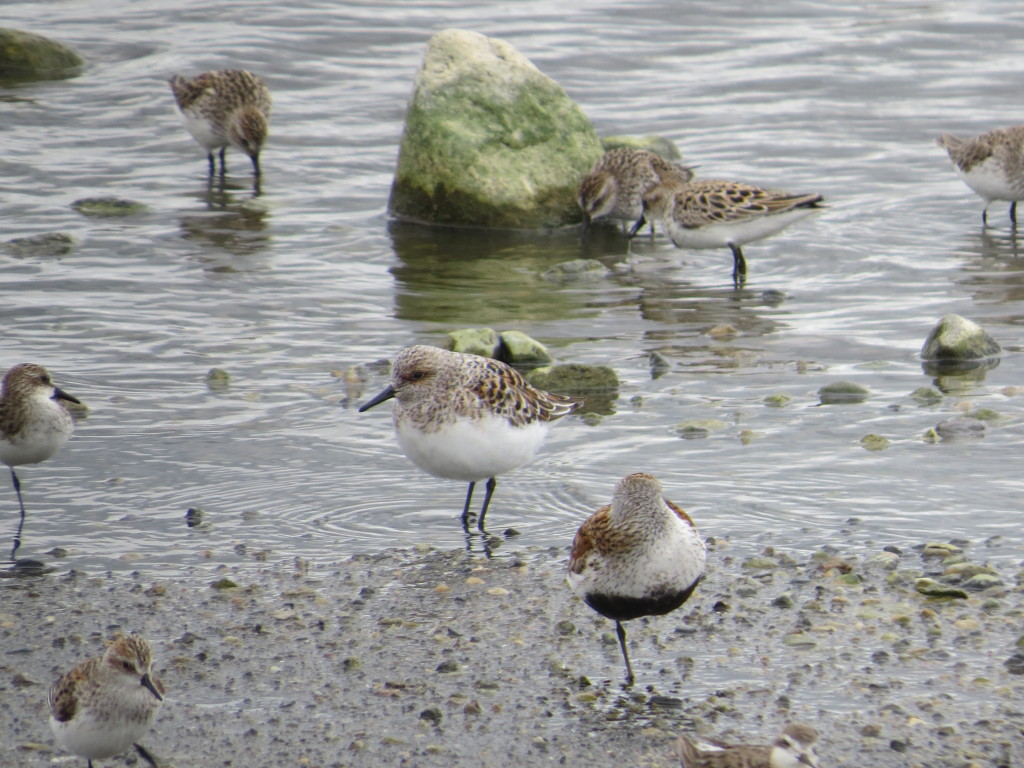
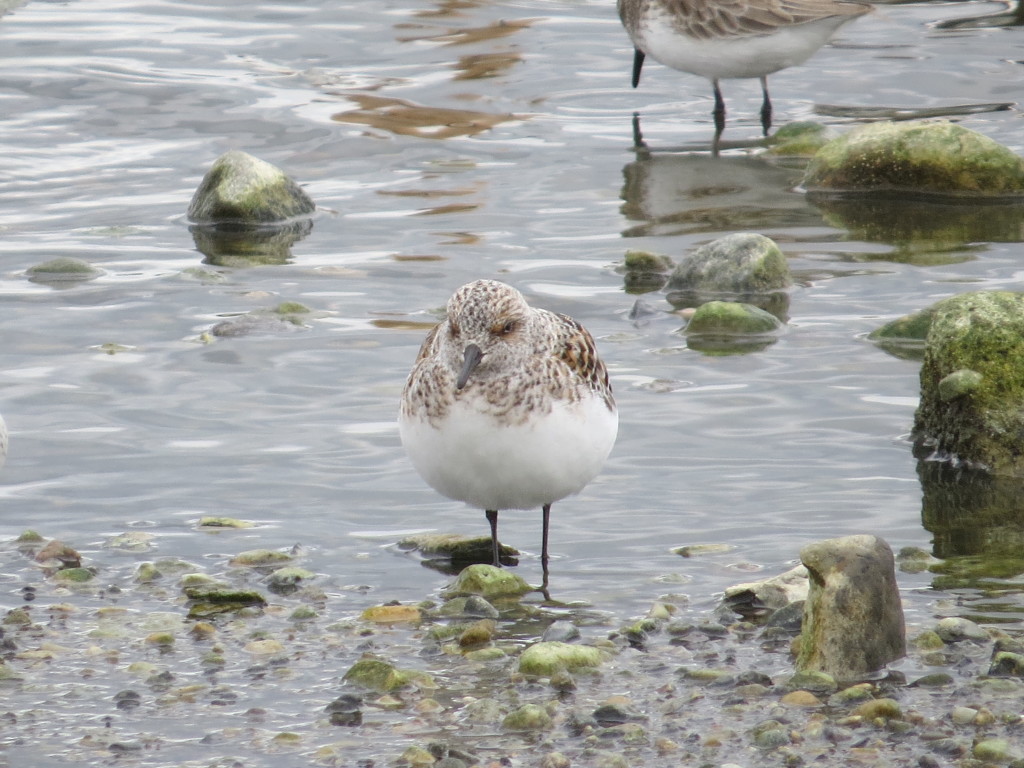 If two unplanned lifers weren’t enough, how about a third?! Several Terns caught my eye right away when we got to the ponds. Their bills looked excessively reddish and other clues were leading me to the conclusion that I was looking at Common Terns, which aren’t so common in Minnesota compared to the excessively common Forster’s Tern.
If two unplanned lifers weren’t enough, how about a third?! Several Terns caught my eye right away when we got to the ponds. Their bills looked excessively reddish and other clues were leading me to the conclusion that I was looking at Common Terns, which aren’t so common in Minnesota compared to the excessively common Forster’s Tern.
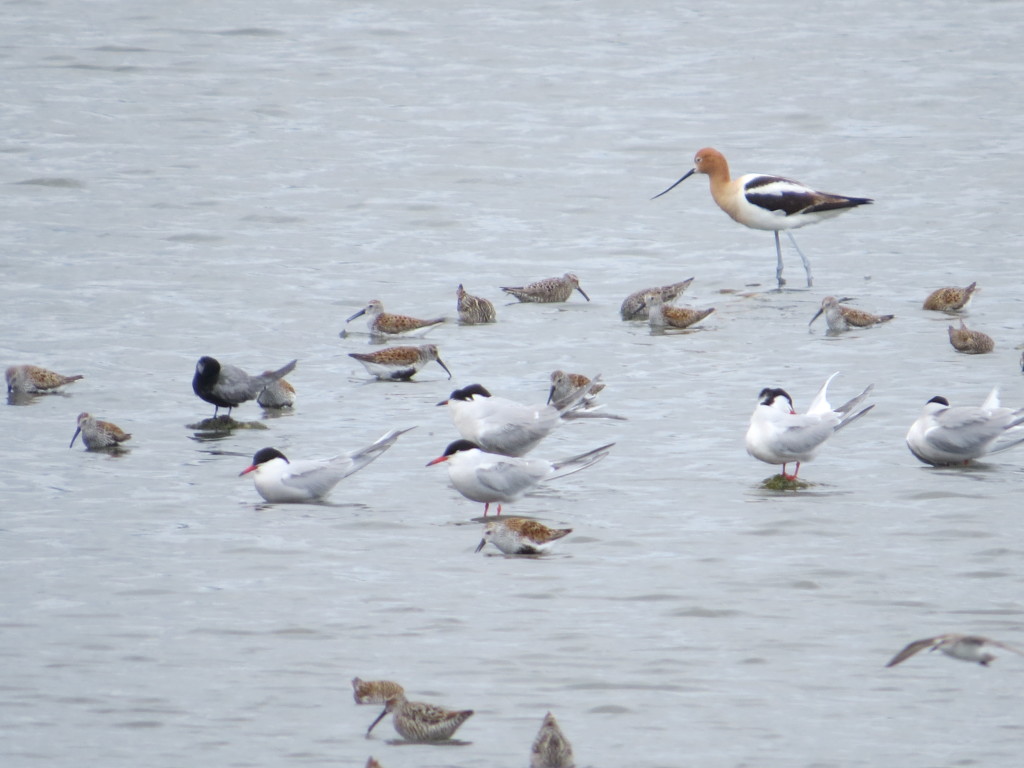 I spent much time agonizing over this ID after the fact as Common and Forster’s Terns are incredibly similar looking. Many hours were spent scouring images on Google, studying Sibley, etc. Common Terns have reddish-orange bills while Forster’s Terns have a straight-up orange color. The red really popped when I looked at these birds.
I spent much time agonizing over this ID after the fact as Common and Forster’s Terns are incredibly similar looking. Many hours were spent scouring images on Google, studying Sibley, etc. Common Terns have reddish-orange bills while Forster’s Terns have a straight-up orange color. The red really popped when I looked at these birds.
Another field mark of the Common Tern are the wings. The primaries of a Common are gray and flush with the tail while the primaries of the Forster’s are whitish or frosty and shorter than the much longer tail.
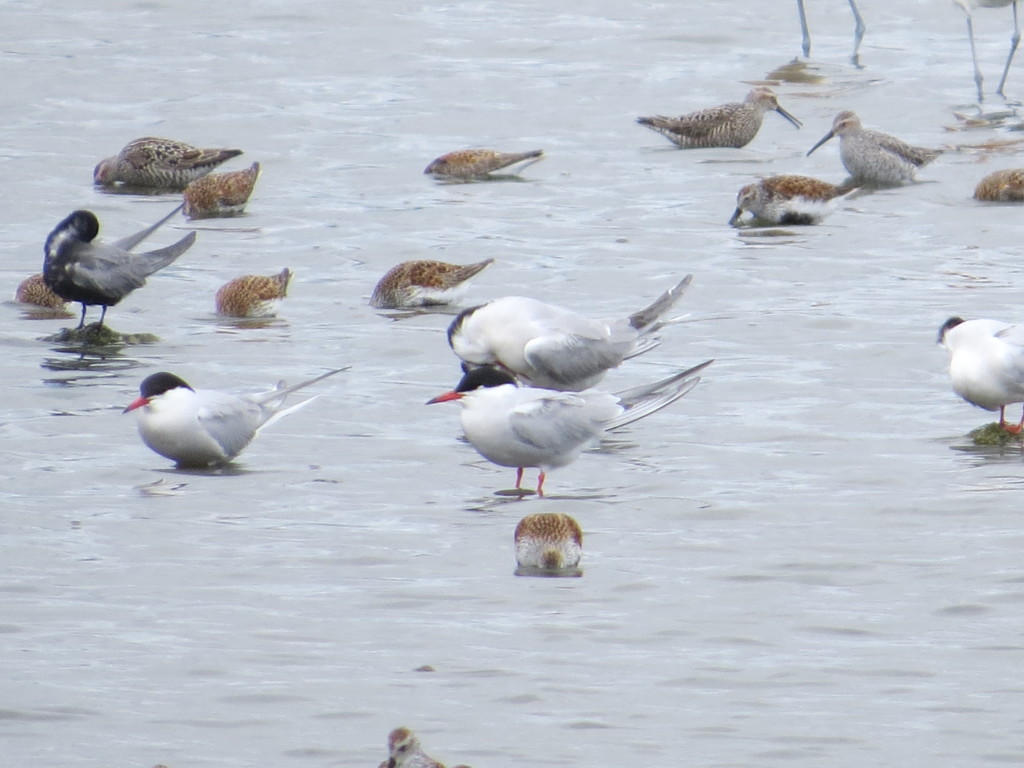
Finally, I found evidence of a remnant dark carpal bar which Common Terns have during the winter months before the black bar fades to gray.
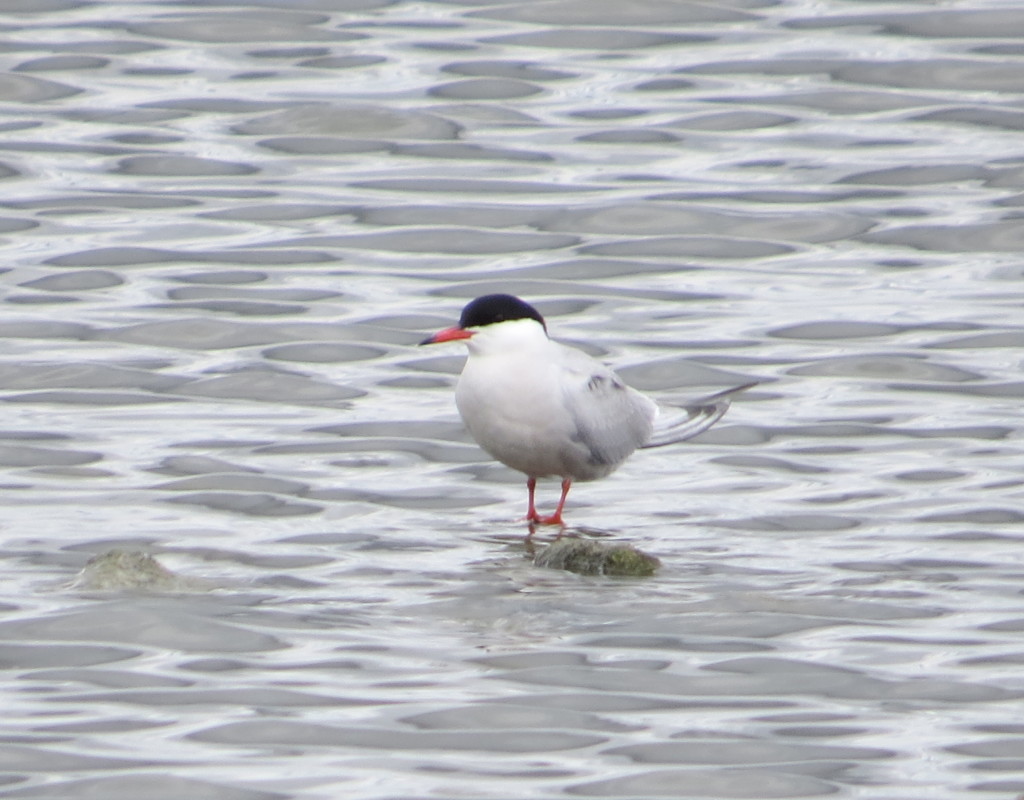
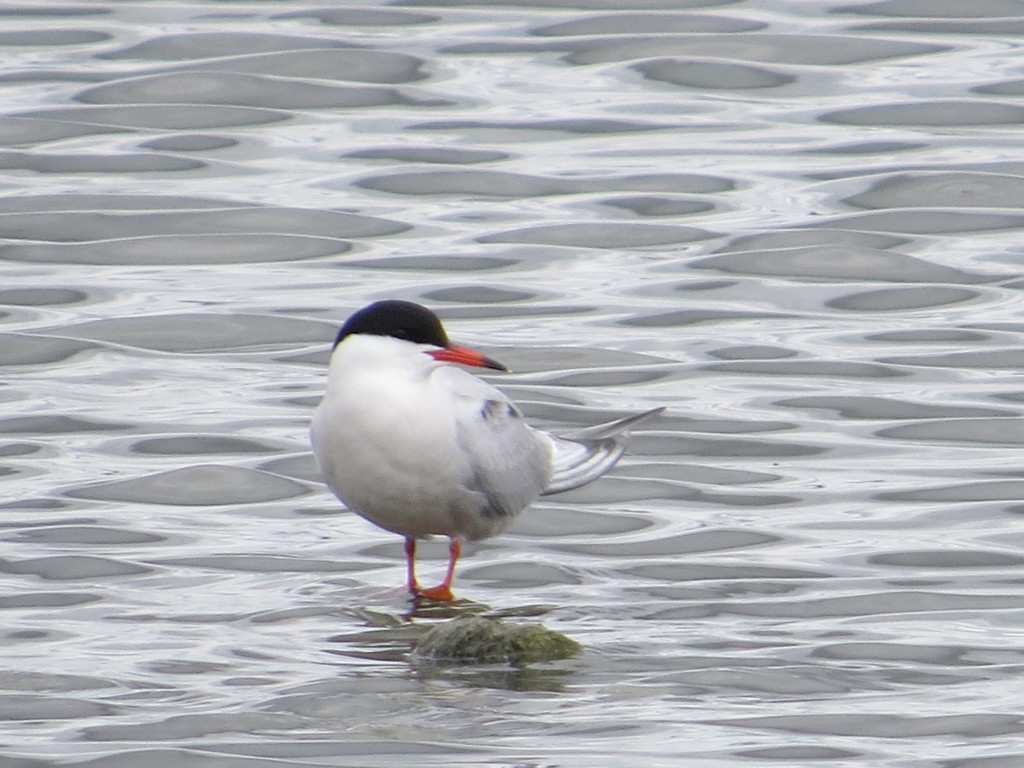
The birders among you have already detected some great shorebirds. American Avocets were plentiful with a dozen birds representing their species. This elegant bird is always a rare treat during migration in Minnesota.
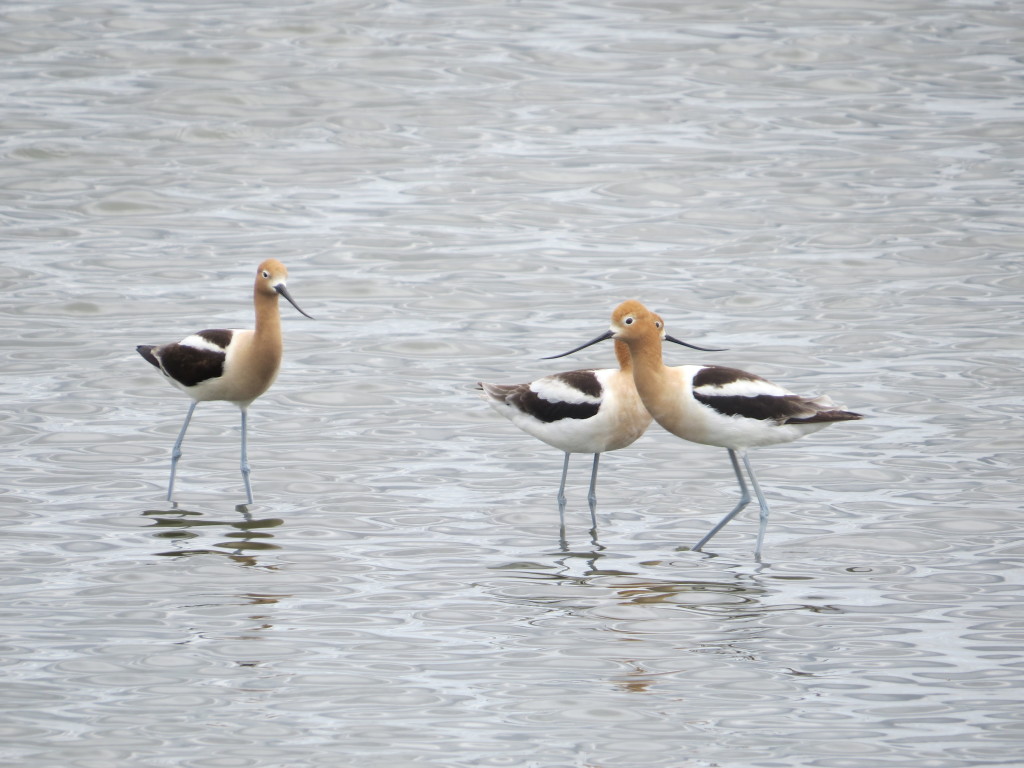
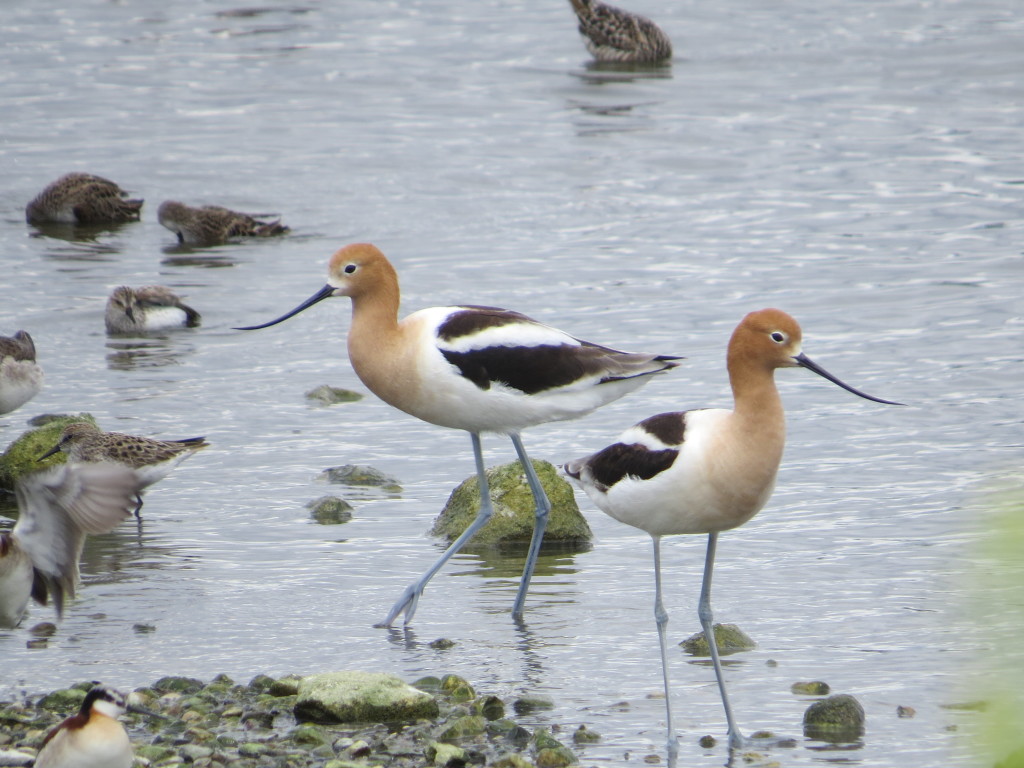
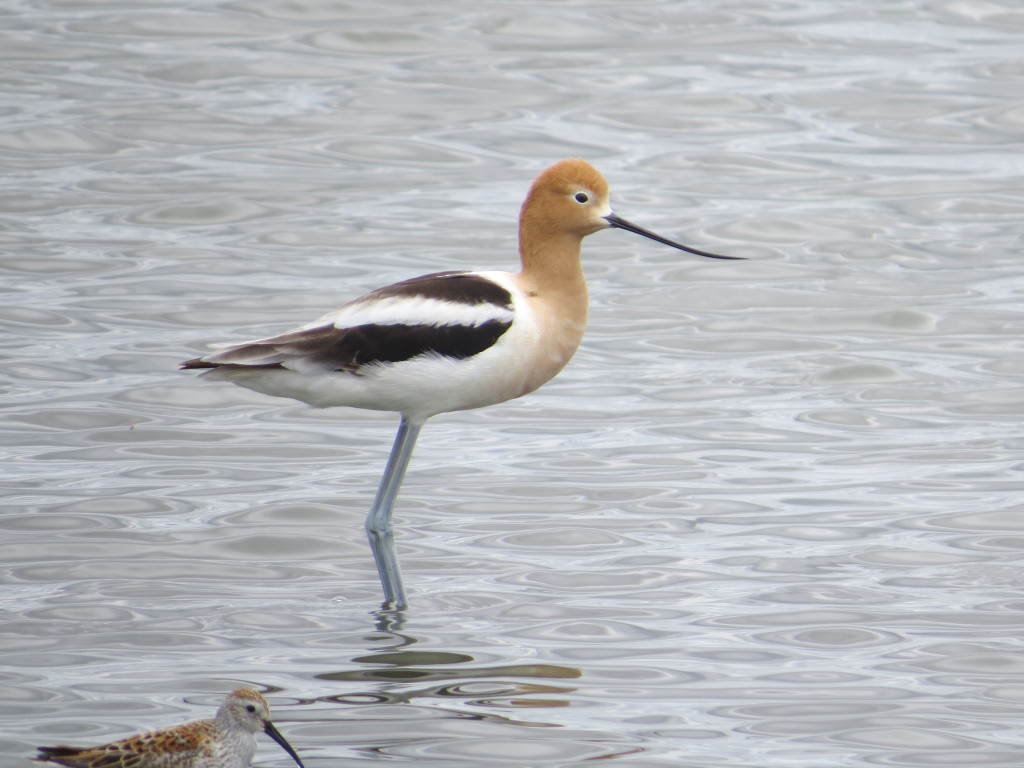
Black Terns are summer residents here, but it was nice to see one up close and still.
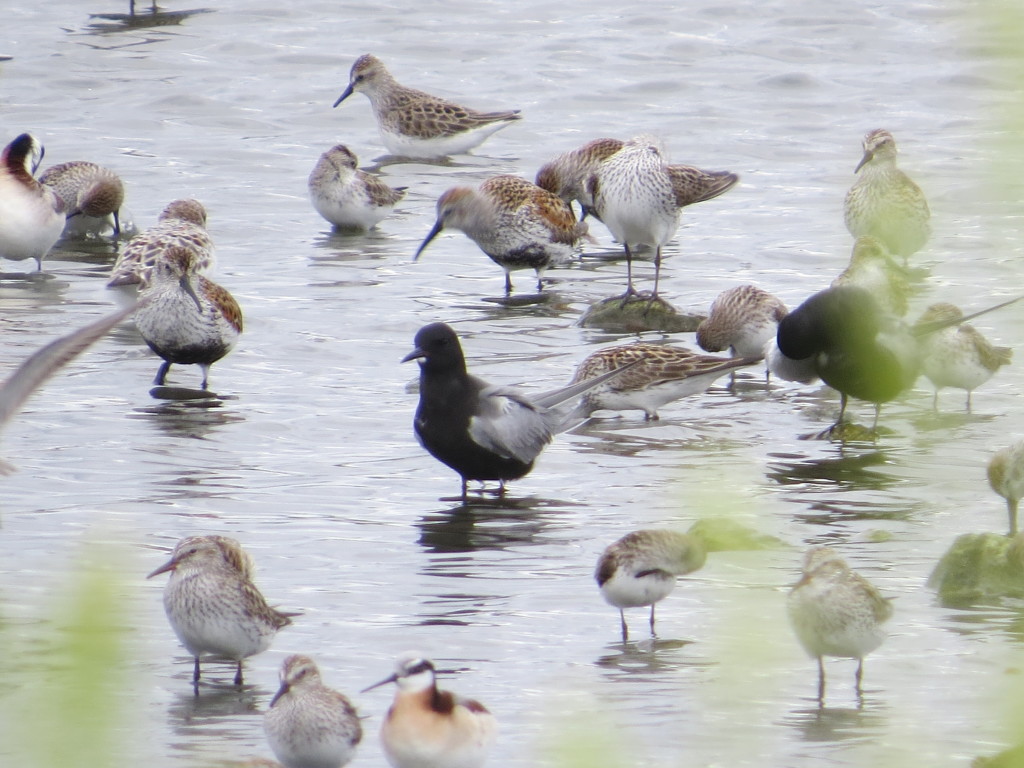 Dunlin were excessively plentiful and quite striking in full breeding plumage.
Dunlin were excessively plentiful and quite striking in full breeding plumage.
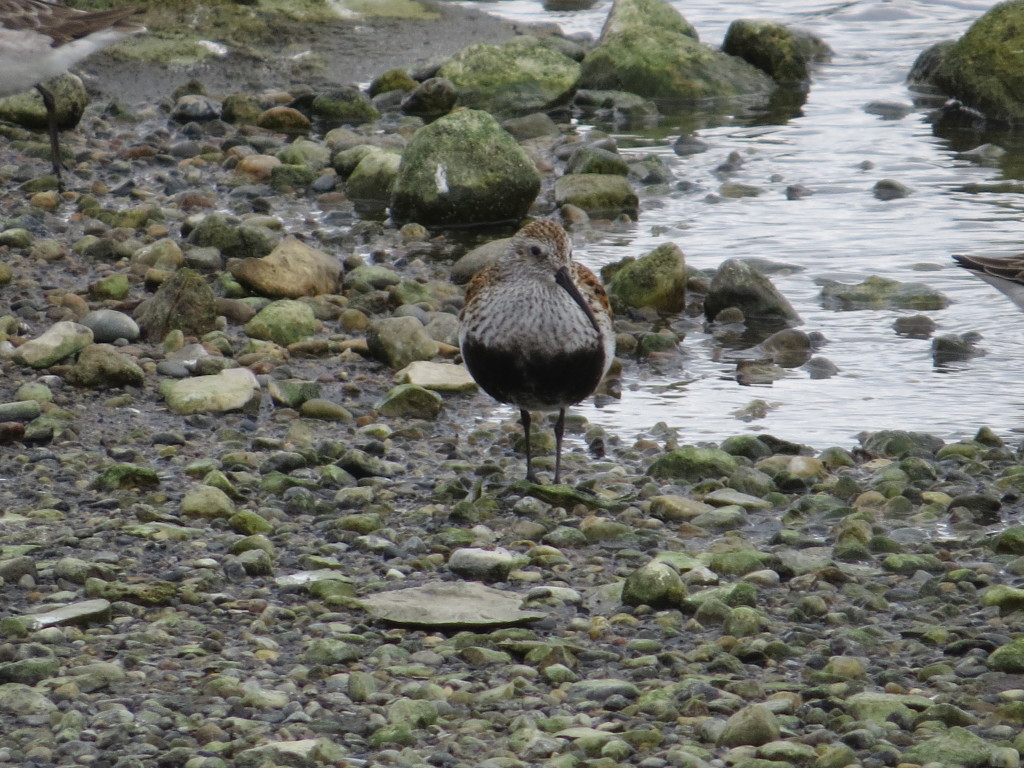
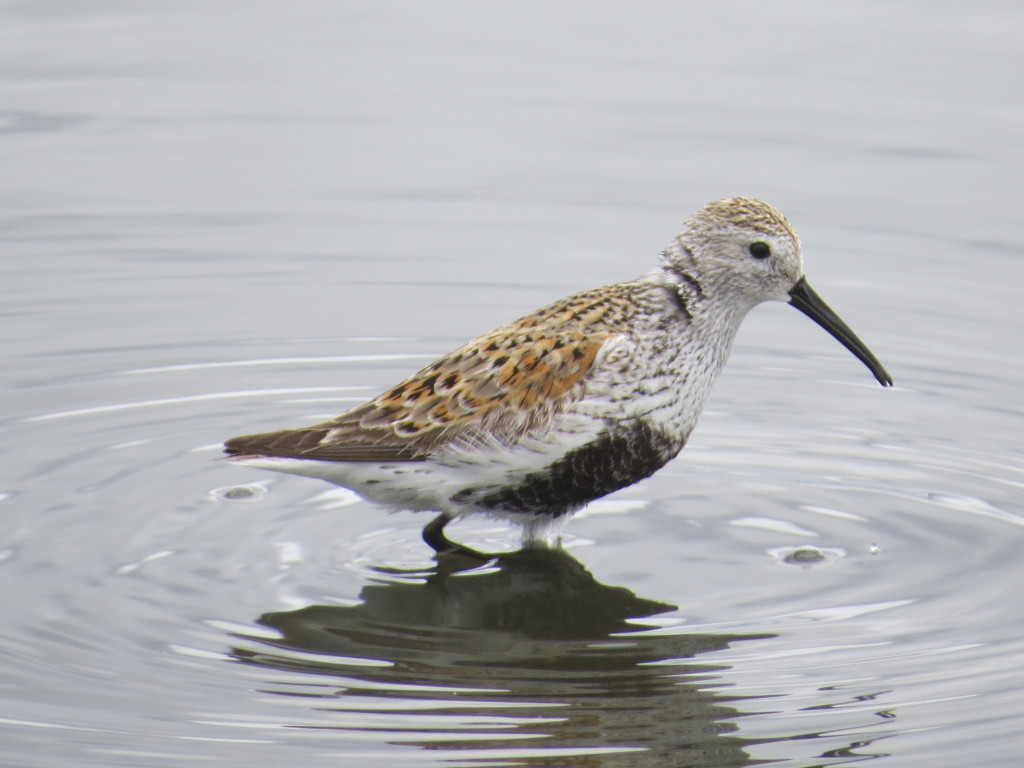
Stilt Sandpipers are also fun and handsome shorebirds.
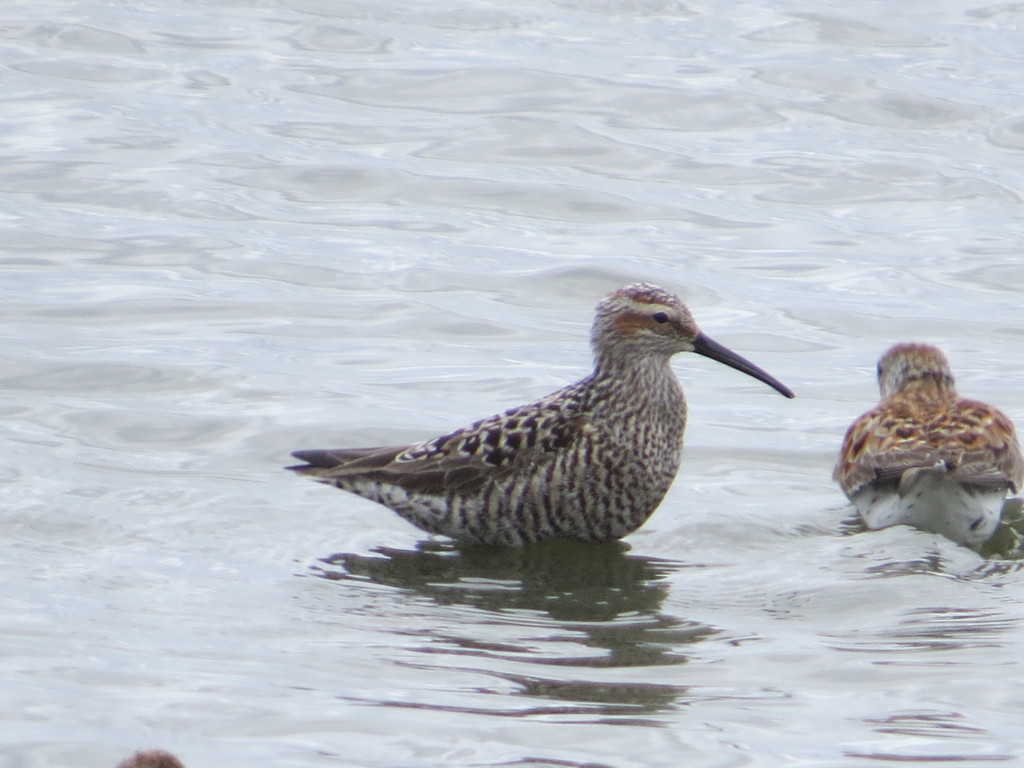
Another great addition to the shorebird mix were two Ruddy Turnstones, a crazily-patterned shorebird.
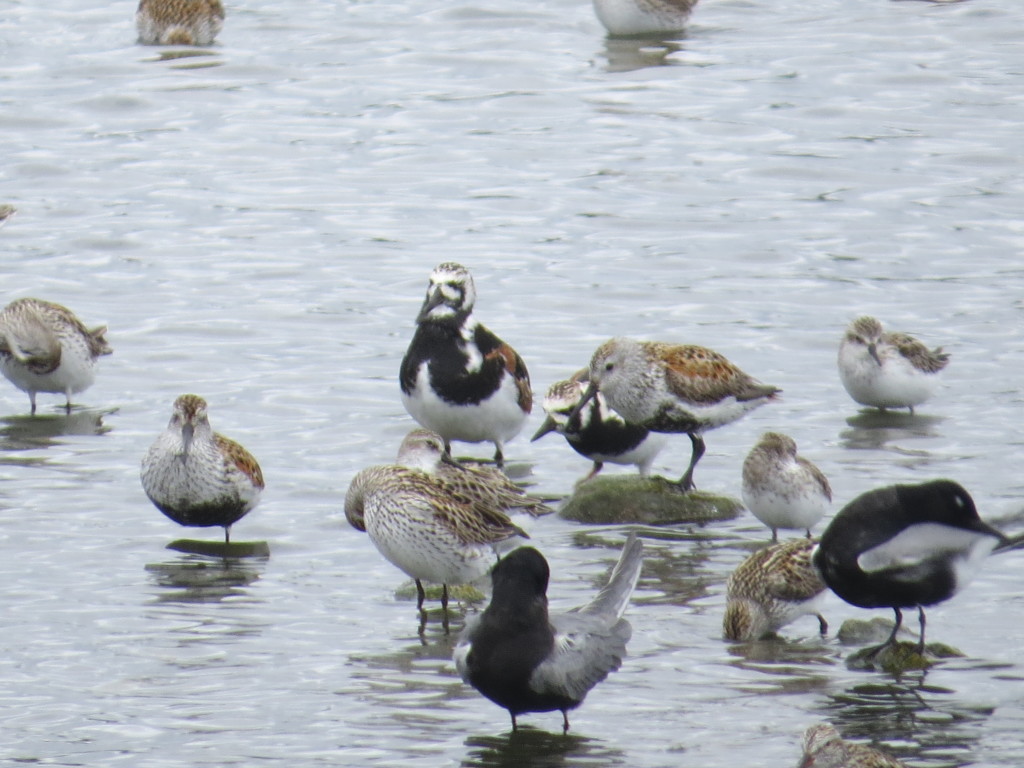 There was a lot going on with the shorebirds, both in numbers of birds and numbers of species. Wilson’s Phalaropes and White-rumped Sandpipers can be seen in my photos, but I didn’t focus any of my photography efforts on them. I probably could have spent hours photographing all these shorebirds, but I wanted to take another crack at that White-eyed Vireo and the day was already getting long for the non-birders. It was time to head back to New Ulm and hit the trail one last time.
There was a lot going on with the shorebirds, both in numbers of birds and numbers of species. Wilson’s Phalaropes and White-rumped Sandpipers can be seen in my photos, but I didn’t focus any of my photography efforts on them. I probably could have spent hours photographing all these shorebirds, but I wanted to take another crack at that White-eyed Vireo and the day was already getting long for the non-birders. It was time to head back to New Ulm and hit the trail one last time.
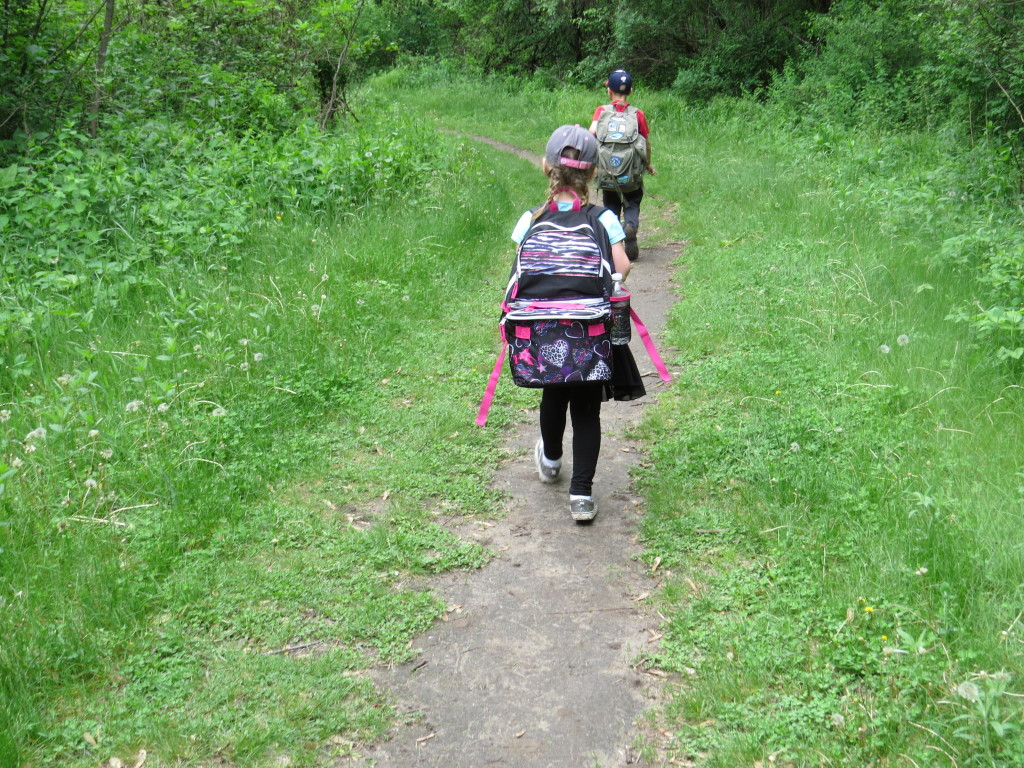
Joining us this time were Joel and Amanda Schmidt from back home. It didn’t take the six of us long to hear the White-eyed Vireo. Joel and I bushwhacked and tried to get on it, but we just couldn’t get a visual despite a valiant effort. I had to give up for real and make the painful decision to go ahead and count this bird as a lifer despite it being heard-only. I normally don’t like to do that, but exceptions sometimes need to be made for vagrant visitors of the Vireo variety. Precedence has already been set with my Bell’s Vireo lifer.
As we were about to part company with Joel and Amanda, we heard the soft bee-buzzz of a Blue-winged Warbler! I may not have been hearing things earlier after all! In no time we got some incredible looks at a Warbler I have only seen twice before.
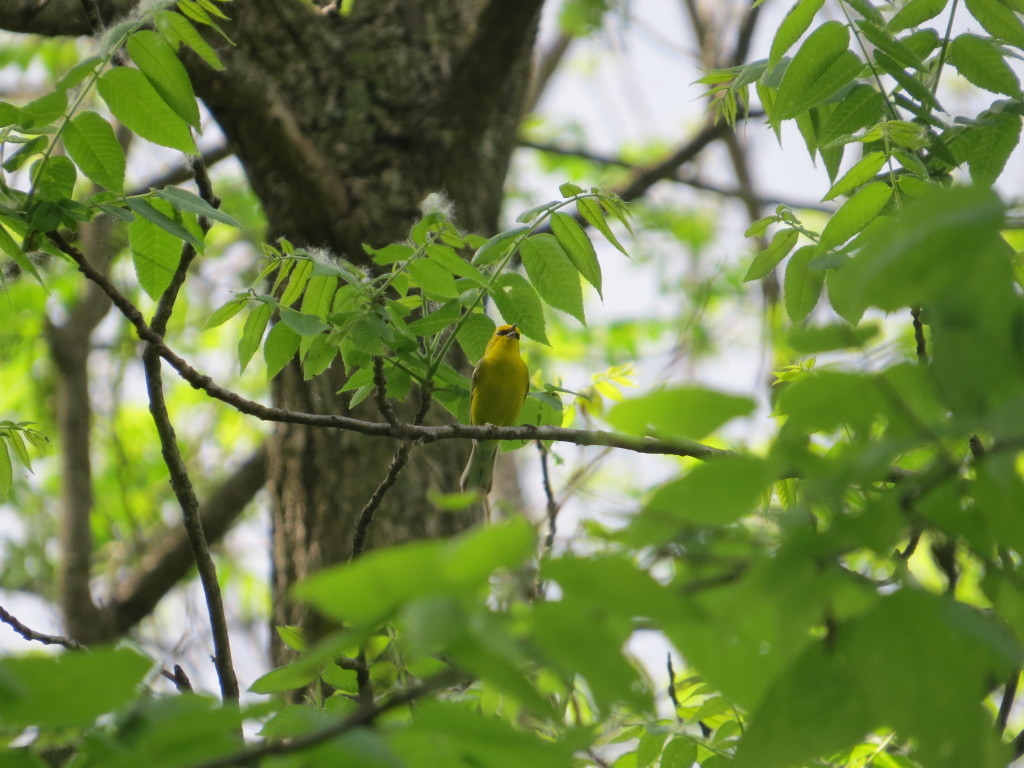
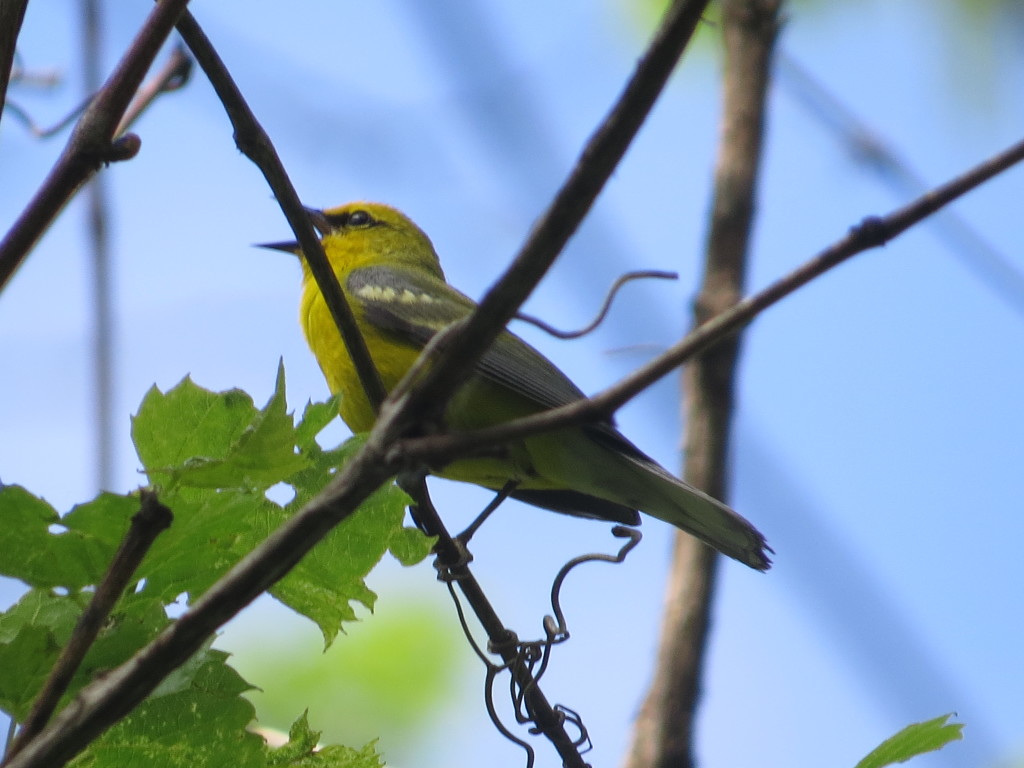 The Blue-winged Warbler was another great consolation prize in a day full of consolation goodies. It felt good to get better photos of this species.
The Blue-winged Warbler was another great consolation prize in a day full of consolation goodies. It felt good to get better photos of this species.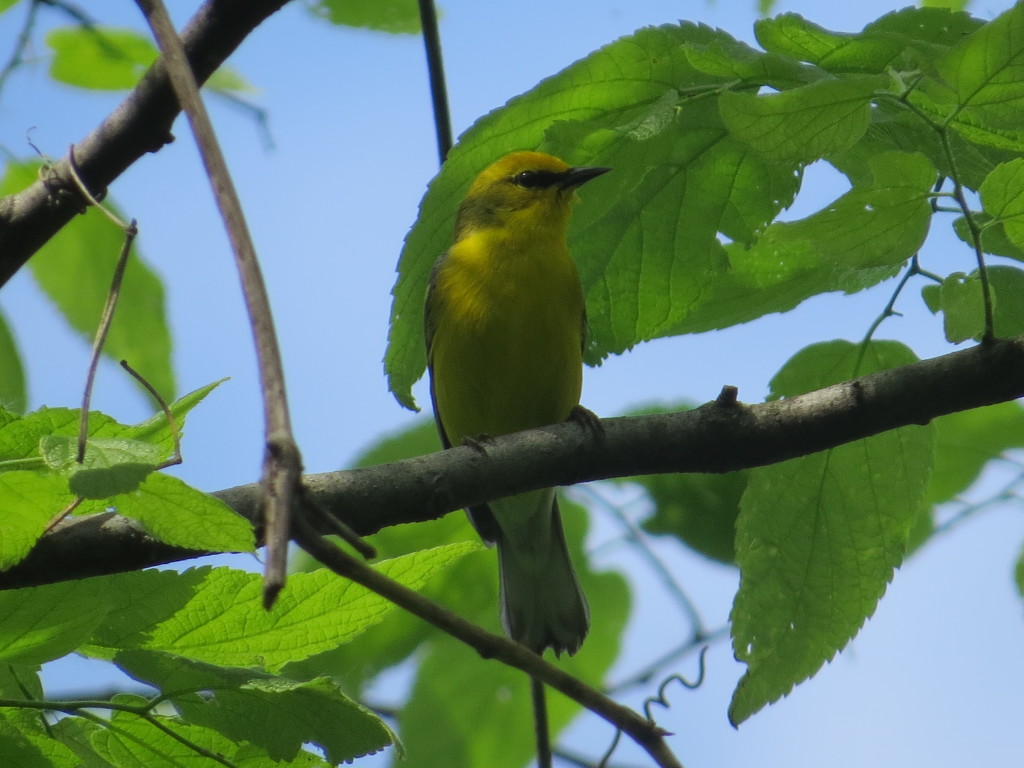 So, we went to see a White-eyed Vireo and failed in that regard. However, this day was an unimaginable lifer and FOY grab. Getting four lifers (WEVI, HUGO, SAND, COTE) in a day instate is unheard of at this stage in our birding. Topping it off with some incredible shorebirds like the Avocets and Turnstones as well as the Blue-winged Warbler really made for an exciting day back on our old stomping grounds.
So, we went to see a White-eyed Vireo and failed in that regard. However, this day was an unimaginable lifer and FOY grab. Getting four lifers (WEVI, HUGO, SAND, COTE) in a day instate is unheard of at this stage in our birding. Topping it off with some incredible shorebirds like the Avocets and Turnstones as well as the Blue-winged Warbler really made for an exciting day back on our old stomping grounds.
I’ve announced it before that there’s a lot more coming up, and even after such announcements, more incredible birding keeps happening. Now in addition to the Colorado birds and more recent lifers near home (one being nocturnal!), wait until you see WHO we went birding with and what we helped him find! Oh, and pretty soon we will be vacationing in Wisconsin’s Apostle Islands on the south shore of Lake Superior. We’ll see what comes of that. All I’ll say is that kayaks may be deployed; an endangered species may be had.
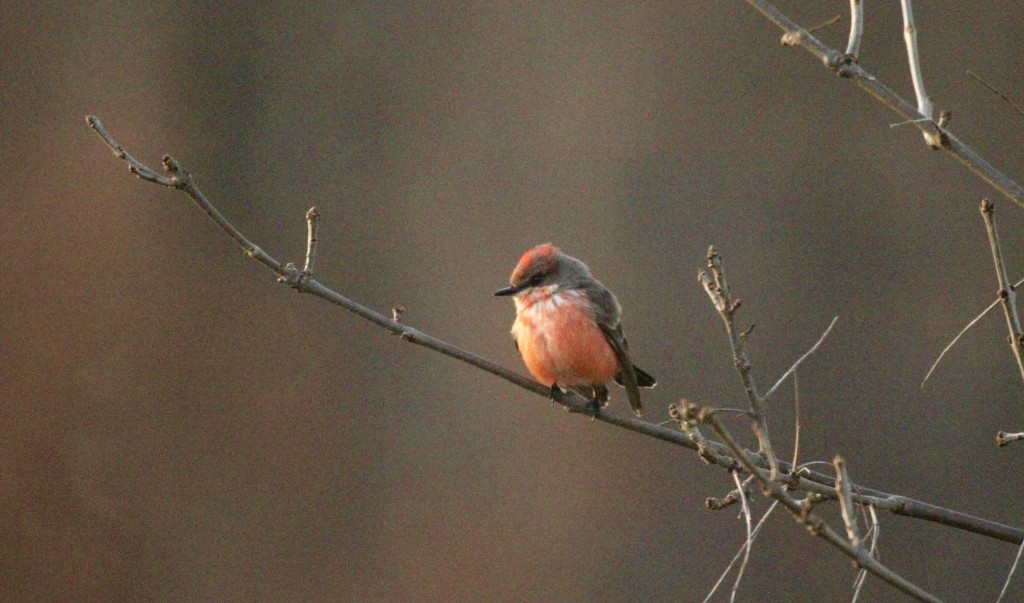
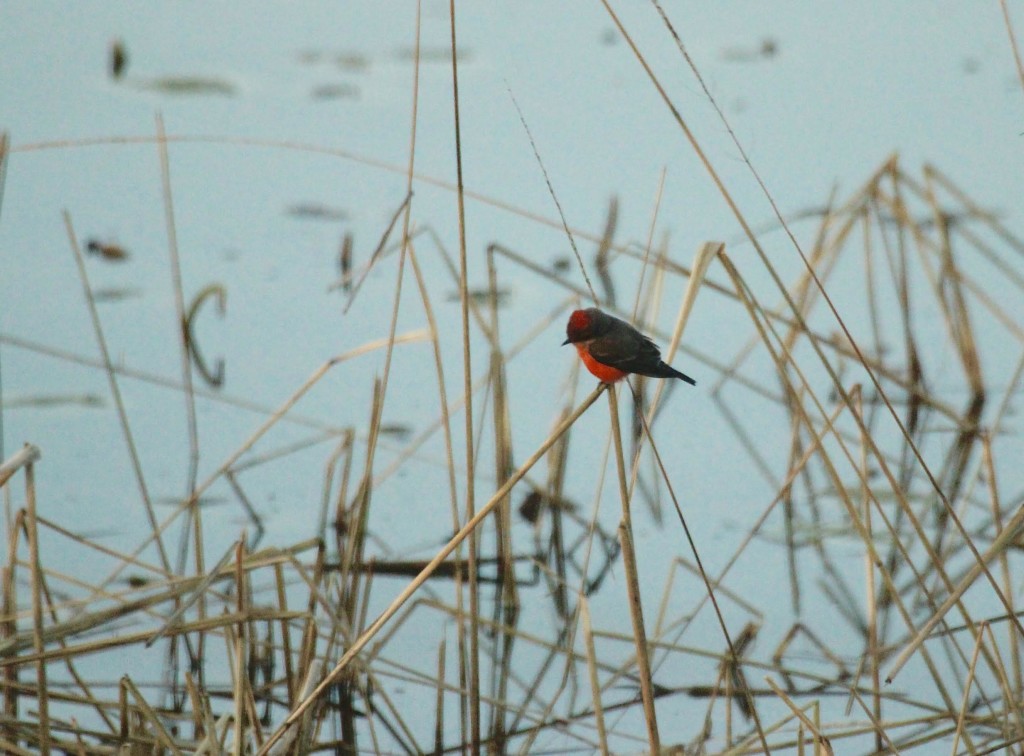
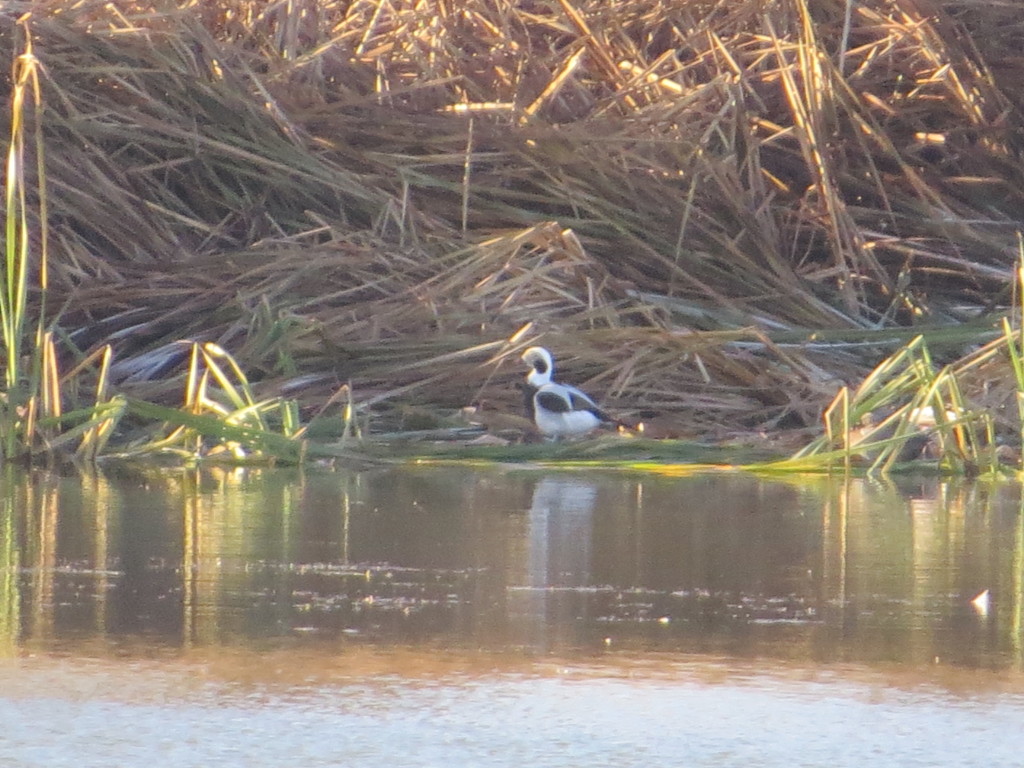 Such a striking bird. Check out this chest!
Such a striking bird. Check out this chest!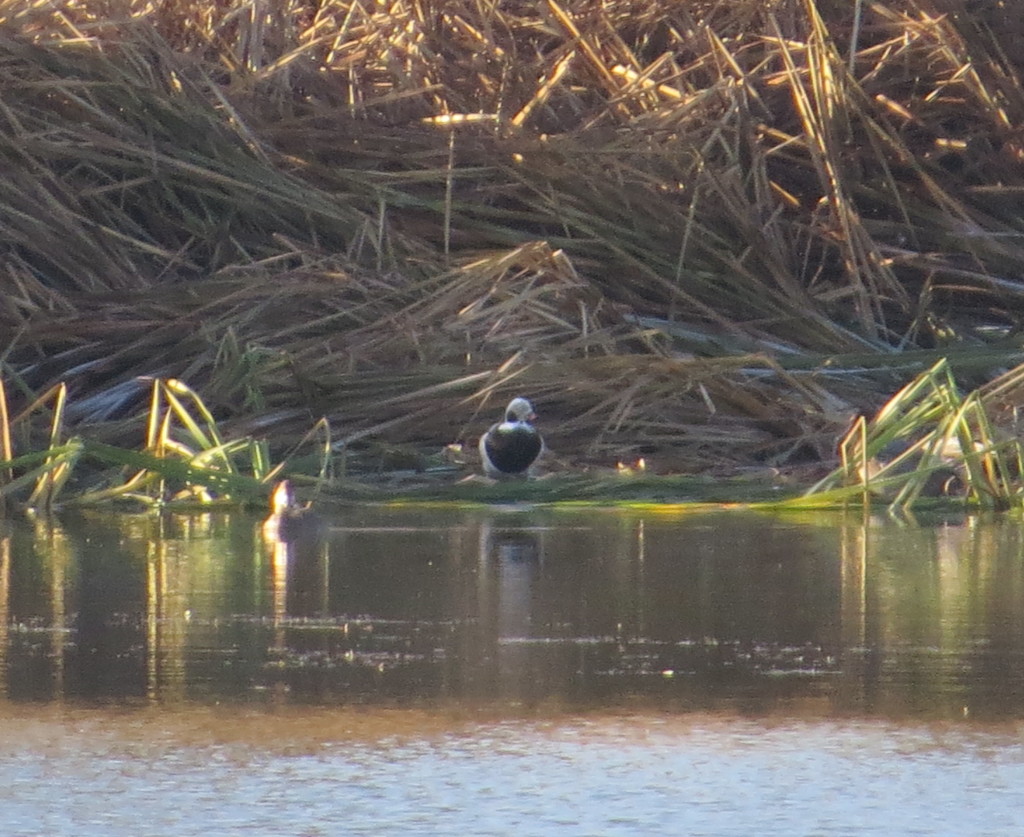
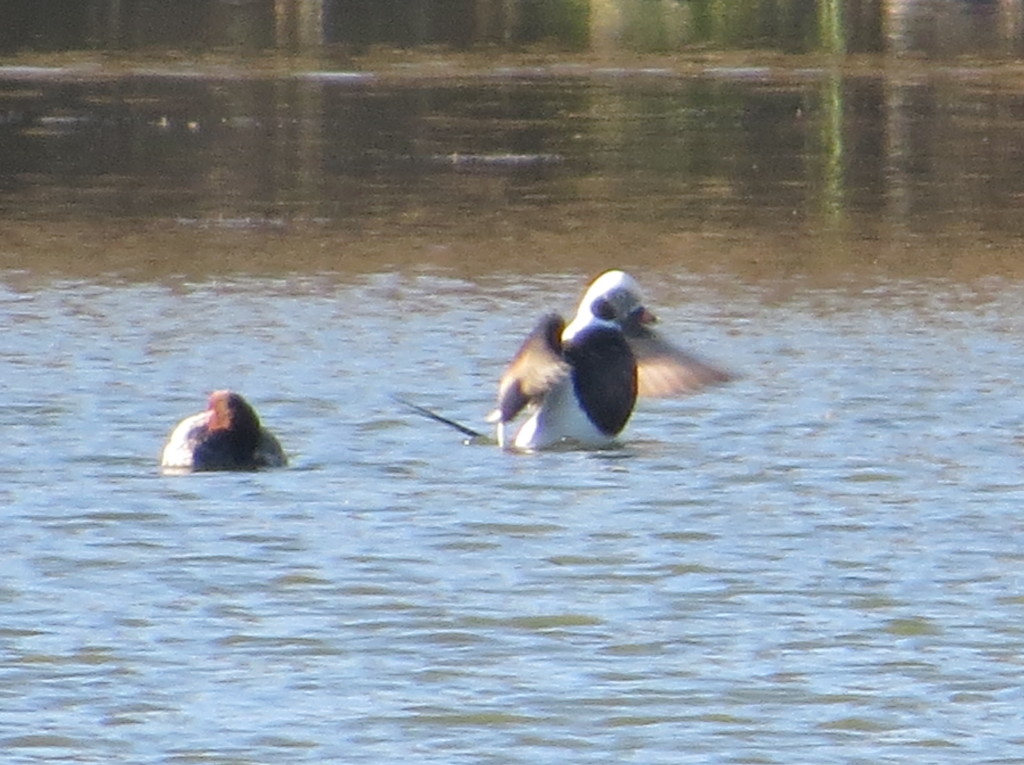 Even though it was far away, it was still such a treat to watch this handsome duck. Our lifer a couple a years ago was an immature-type bird that did not live up to its name.
Even though it was far away, it was still such a treat to watch this handsome duck. Our lifer a couple a years ago was an immature-type bird that did not live up to its name.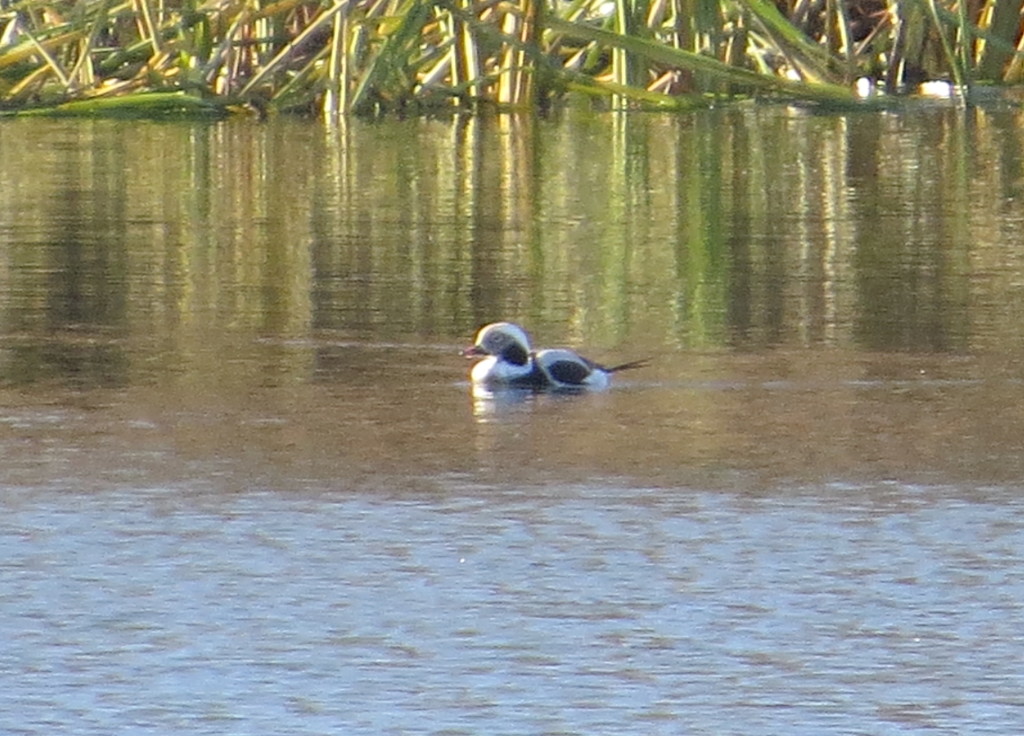
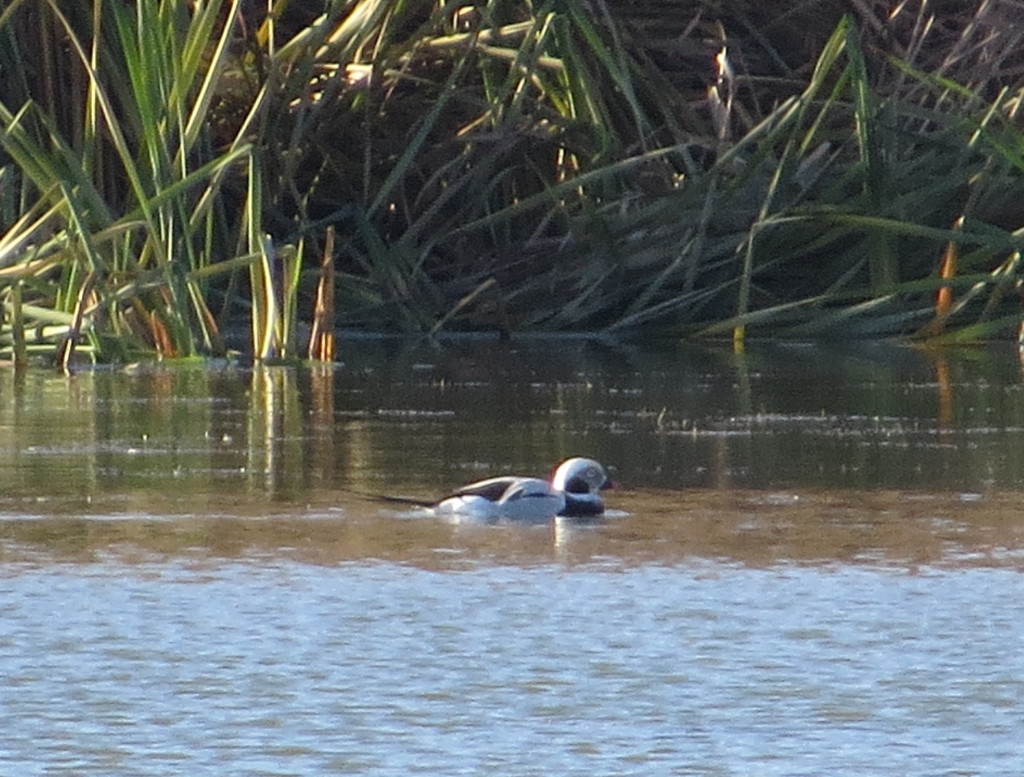 After that fun, Evan and I hit the road for the 3-hour trip home. Our second Northern Shrike of the fall was a nice bonus on our drive. Despite the memory card snafu, it was a memorable trip with Evan where we got to see some really fantastic birds for Minnesota.
After that fun, Evan and I hit the road for the 3-hour trip home. Our second Northern Shrike of the fall was a nice bonus on our drive. Despite the memory card snafu, it was a memorable trip with Evan where we got to see some really fantastic birds for Minnesota.
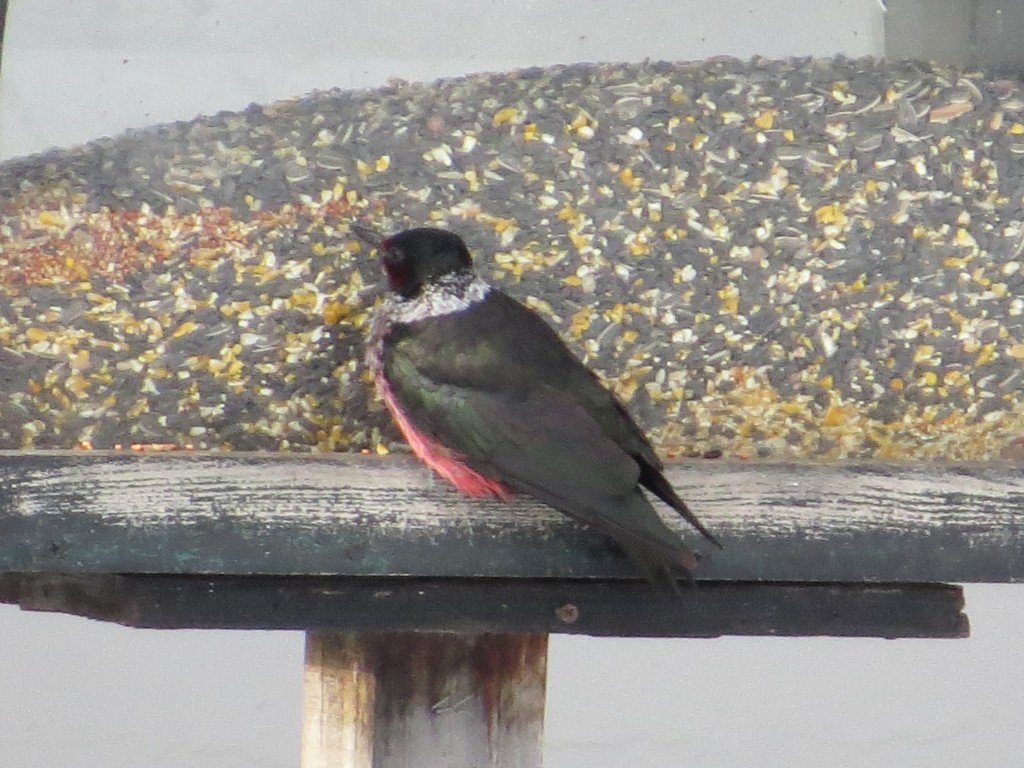 This trip, besides giving us a cool lifer, brought us to the edge of the world, which is somewhere near Baudette. We were within spitting distance of Ontario, an experiment in which the spit would shatter upon impact 11 months out of the year. Yes, that Woodpecker got us to explore a corner of the state we probably never, ever would have dreamed of going…ever. And then we would have missed seeing Willie, Minnesota’s largest walleye.
This trip, besides giving us a cool lifer, brought us to the edge of the world, which is somewhere near Baudette. We were within spitting distance of Ontario, an experiment in which the spit would shatter upon impact 11 months out of the year. Yes, that Woodpecker got us to explore a corner of the state we probably never, ever would have dreamed of going…ever. And then we would have missed seeing Willie, Minnesota’s largest walleye.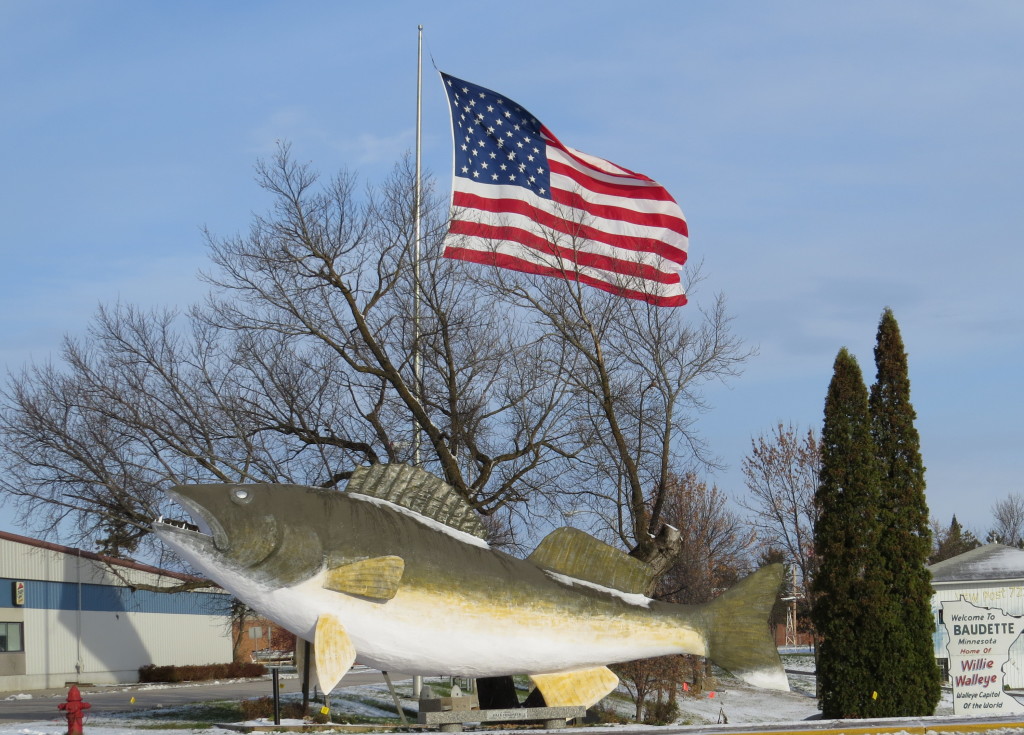
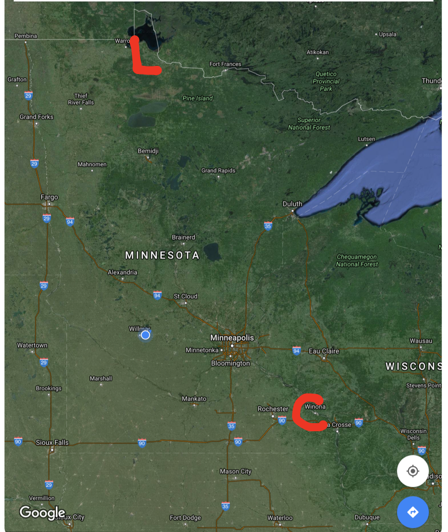
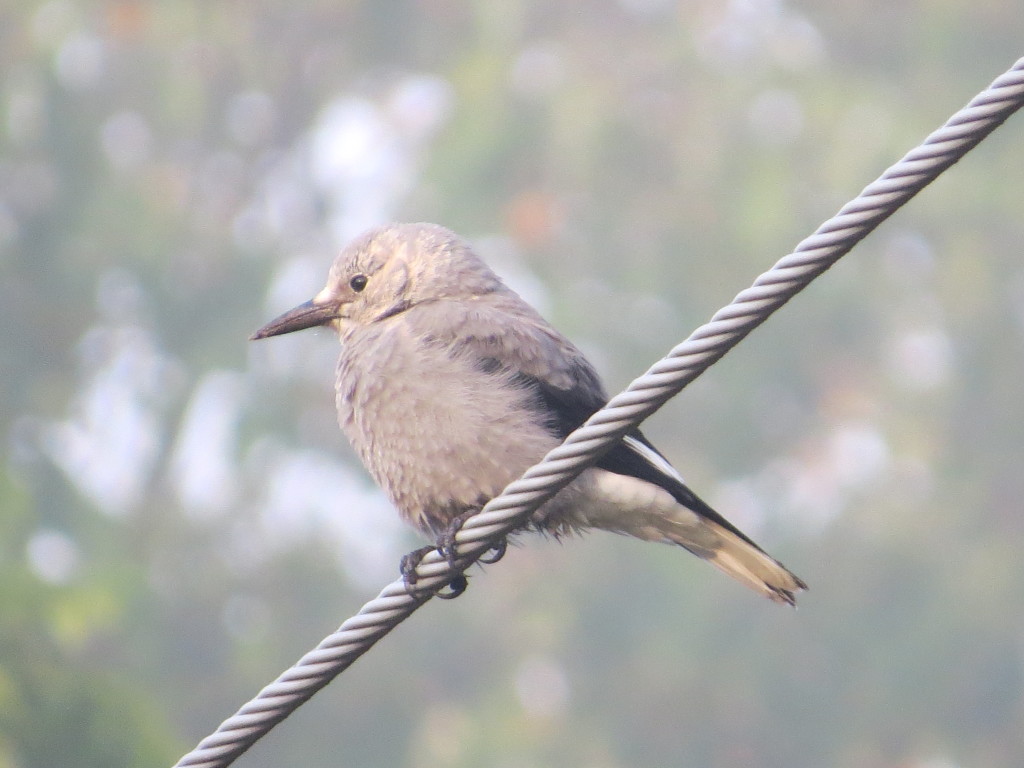
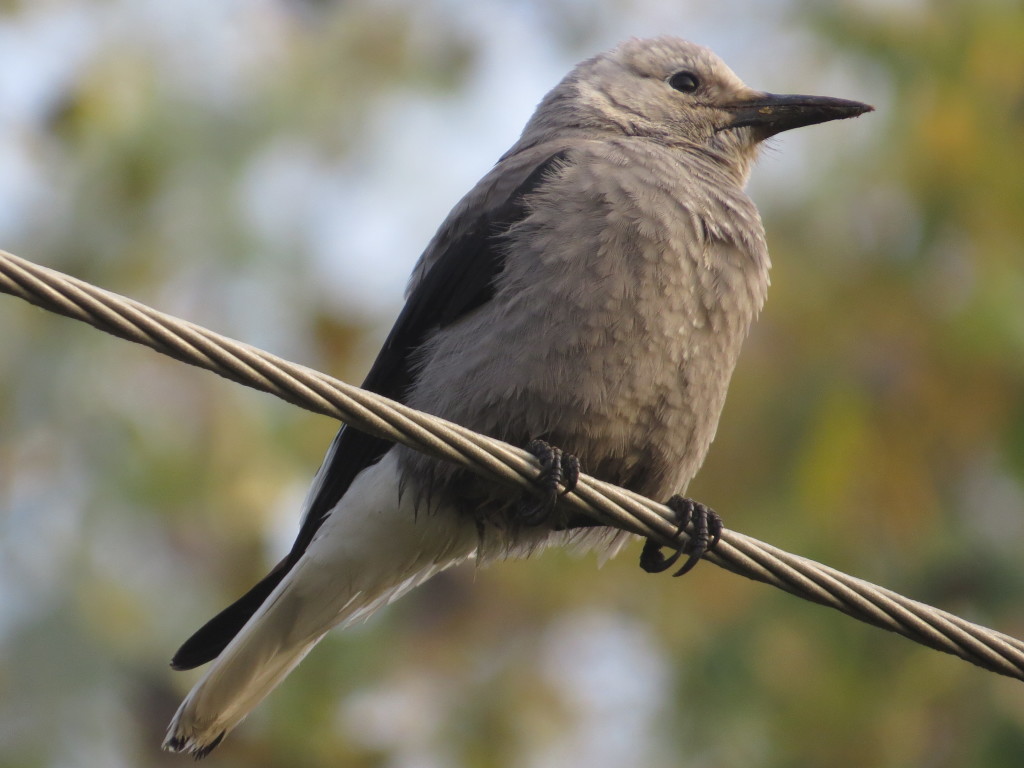
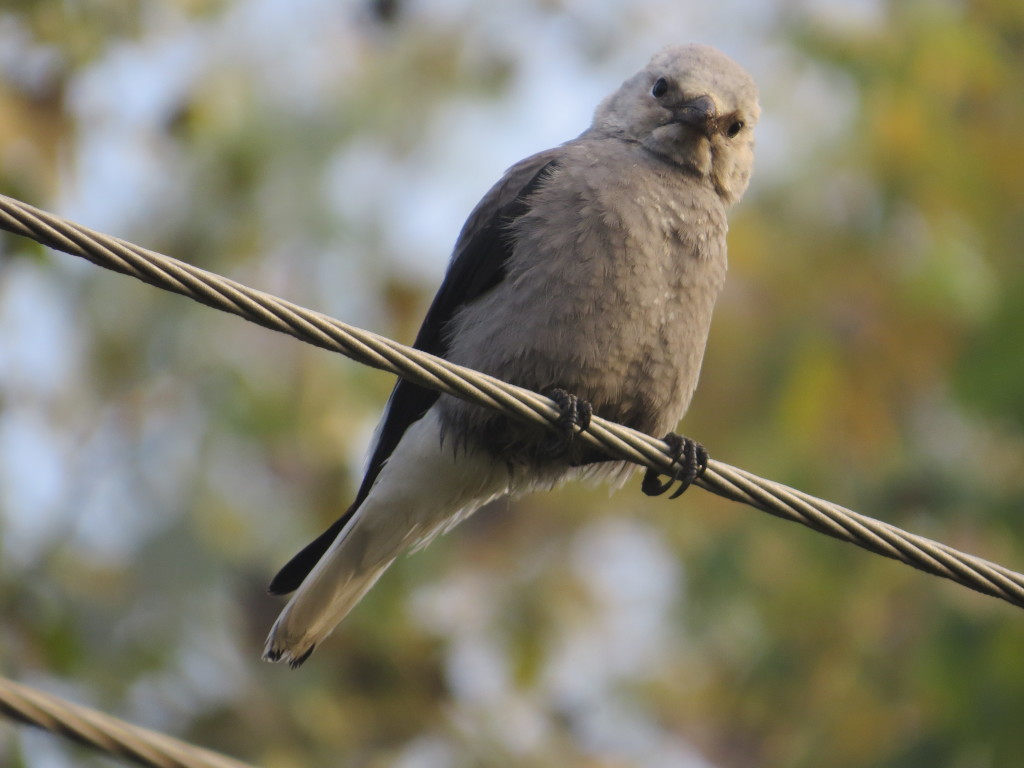
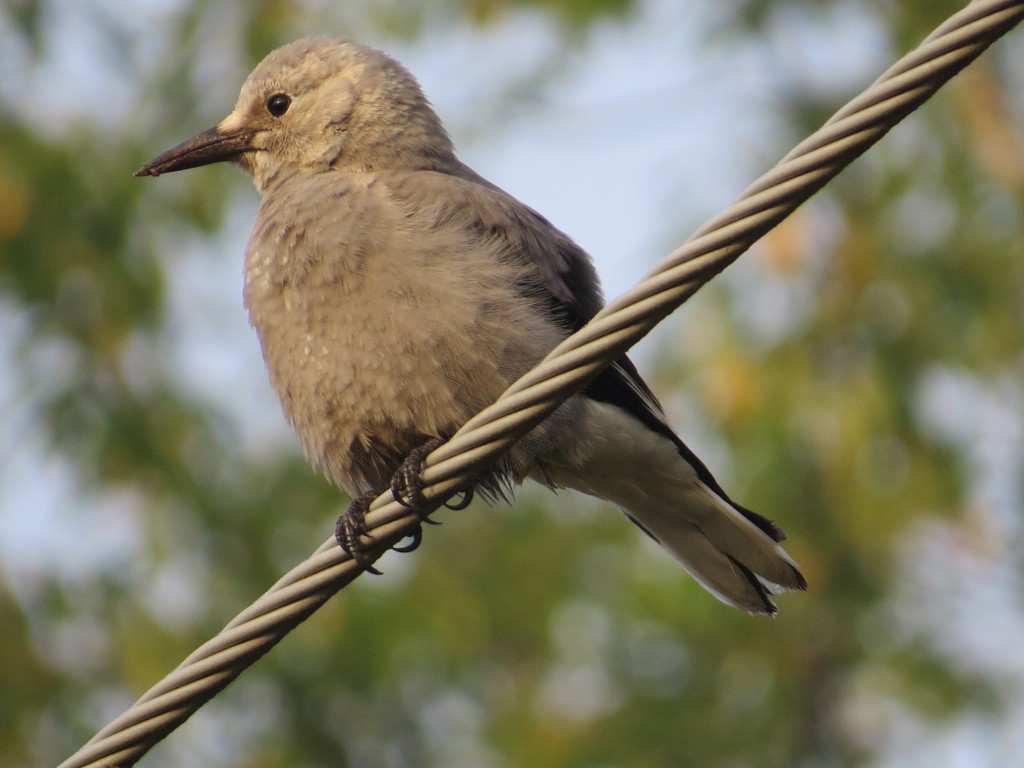 This bird did do more than sit on a wire, not much more, but we saw it fly down to the road to forage. It’s tail pattern in flight is quite a sight. The homeowner who discovered this bird told us to watch for that pattern when it flew.
This bird did do more than sit on a wire, not much more, but we saw it fly down to the road to forage. It’s tail pattern in flight is quite a sight. The homeowner who discovered this bird told us to watch for that pattern when it flew.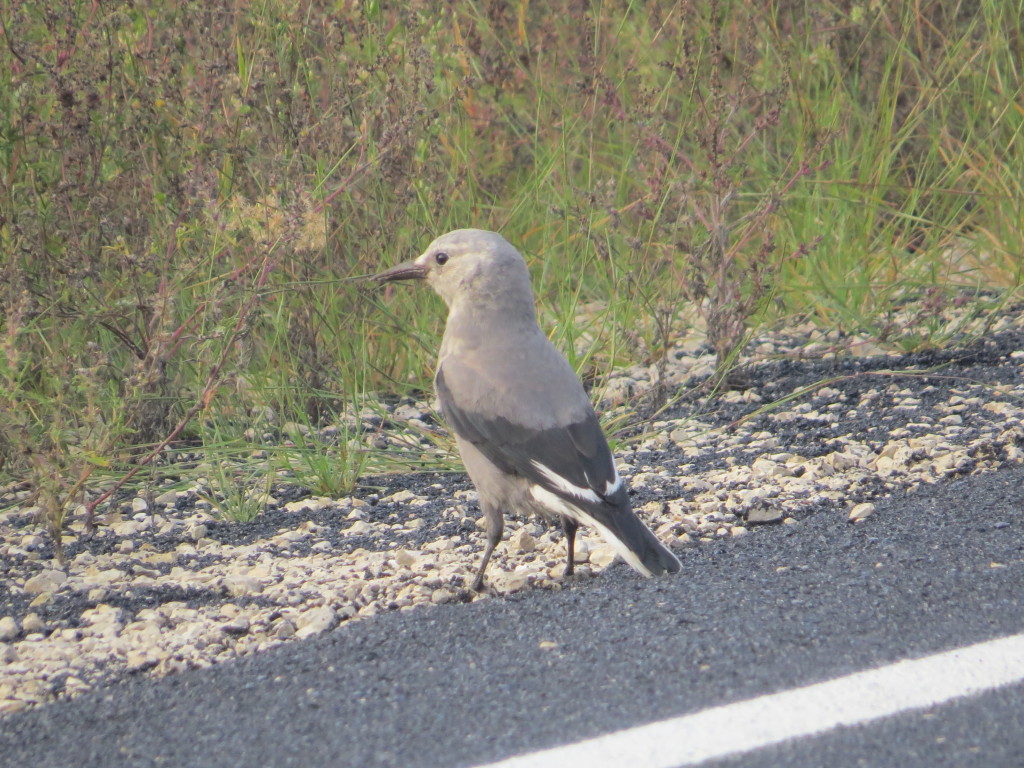 One can only imagine the thoughts running through this grasshopper’s head in this moment. Is it just me, or is it on its knees pleading for mercy?
One can only imagine the thoughts running through this grasshopper’s head in this moment. Is it just me, or is it on its knees pleading for mercy?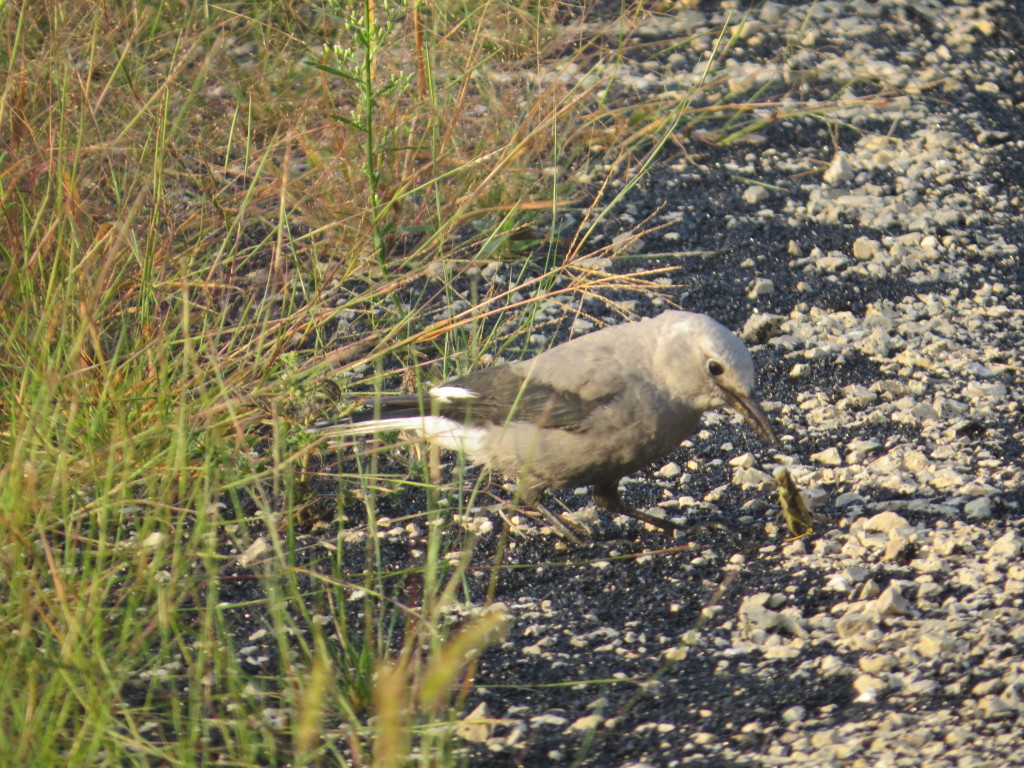 Hunger trumps mercy apparently.
Hunger trumps mercy apparently.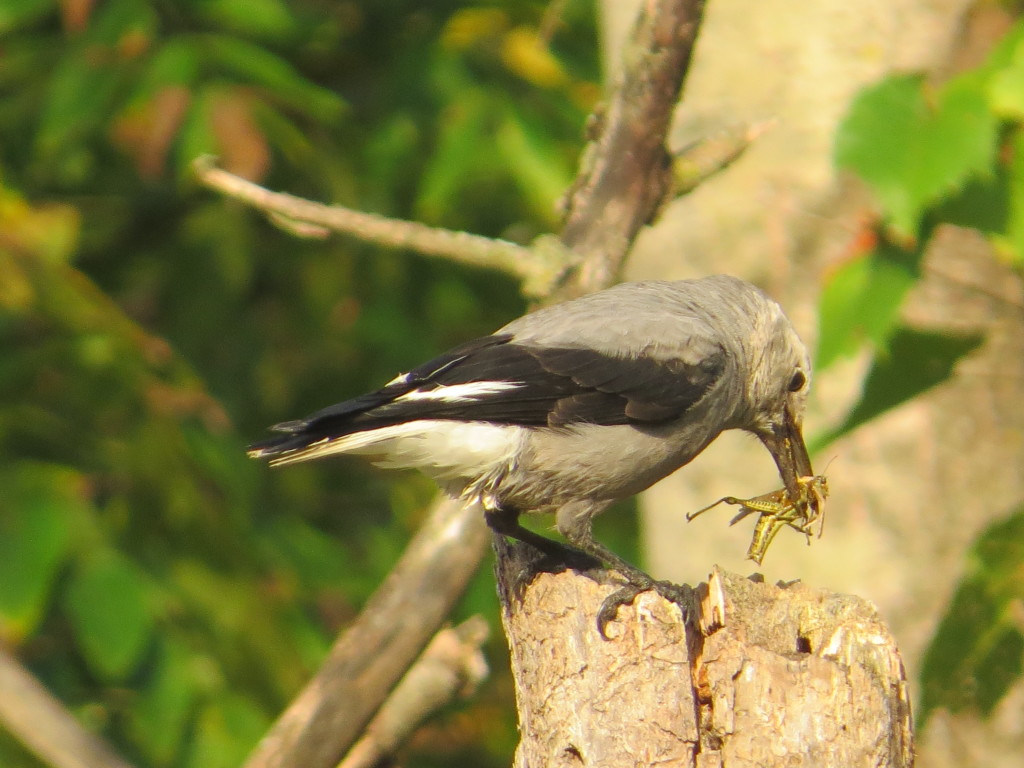
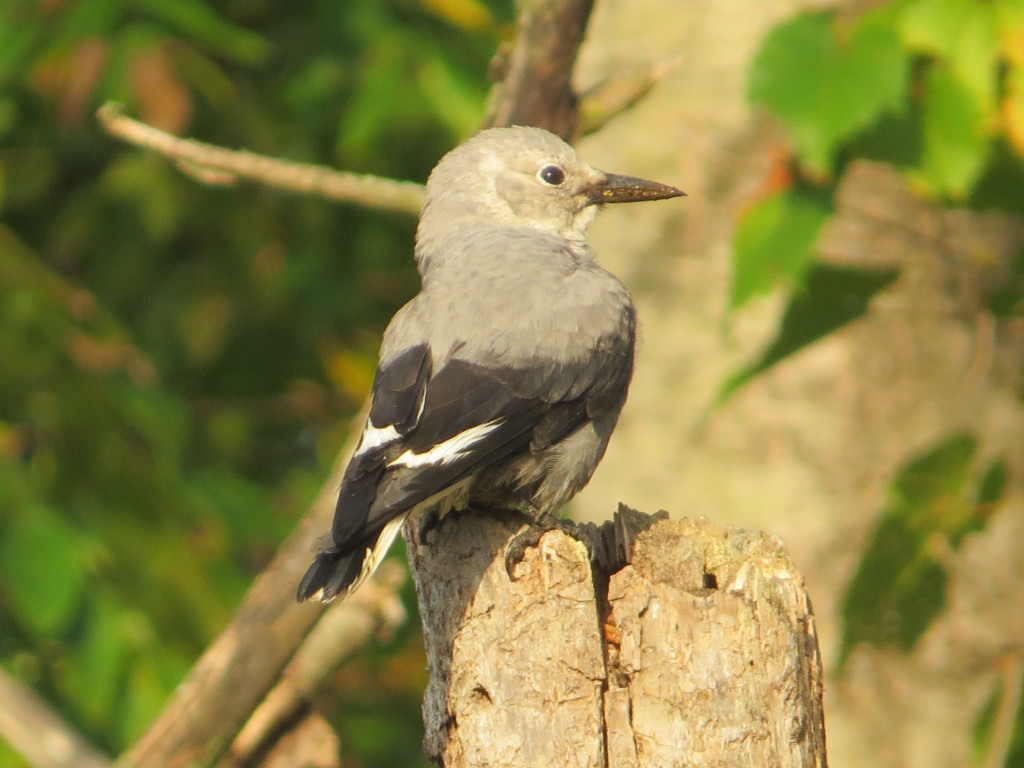
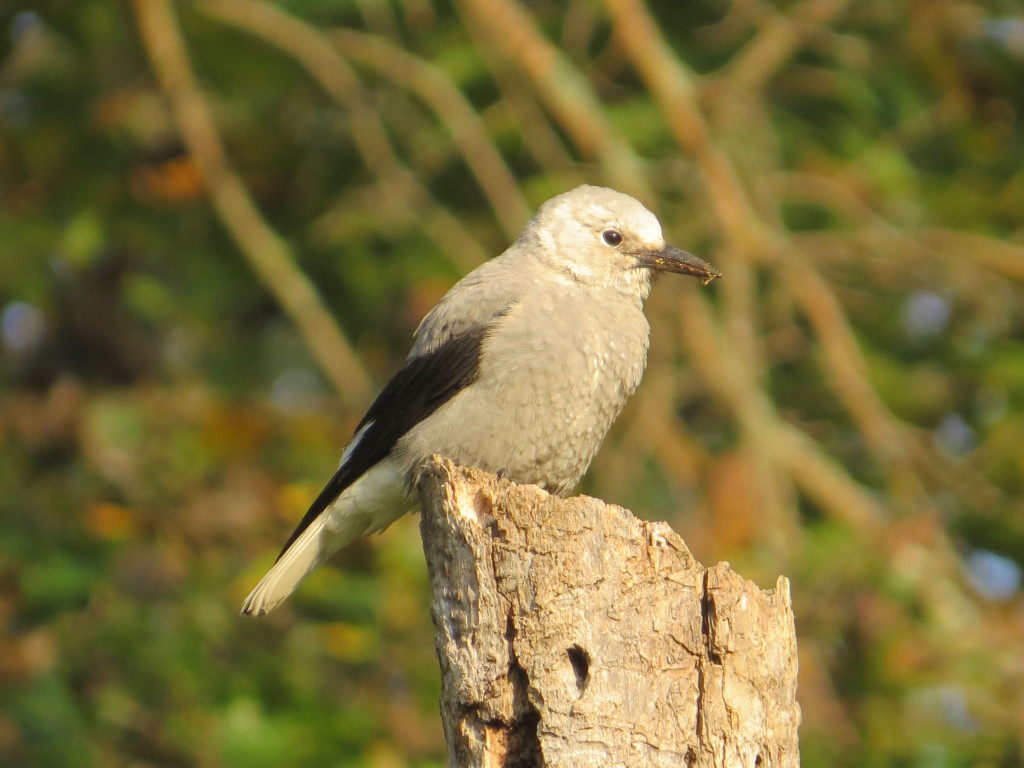
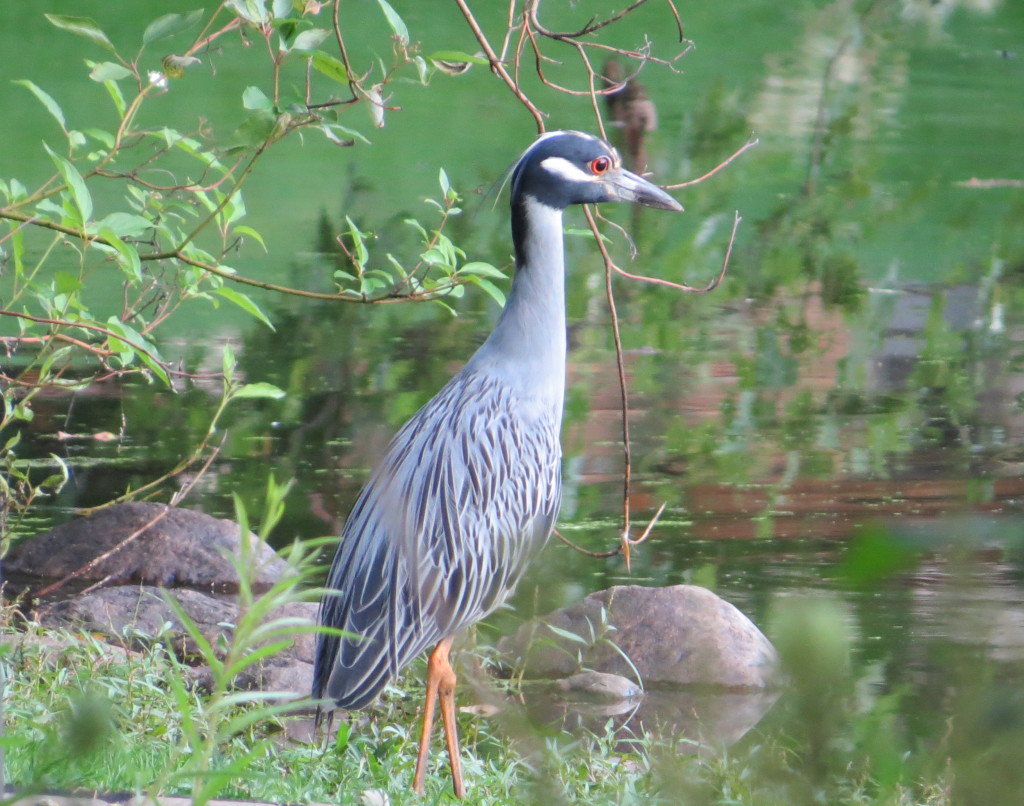
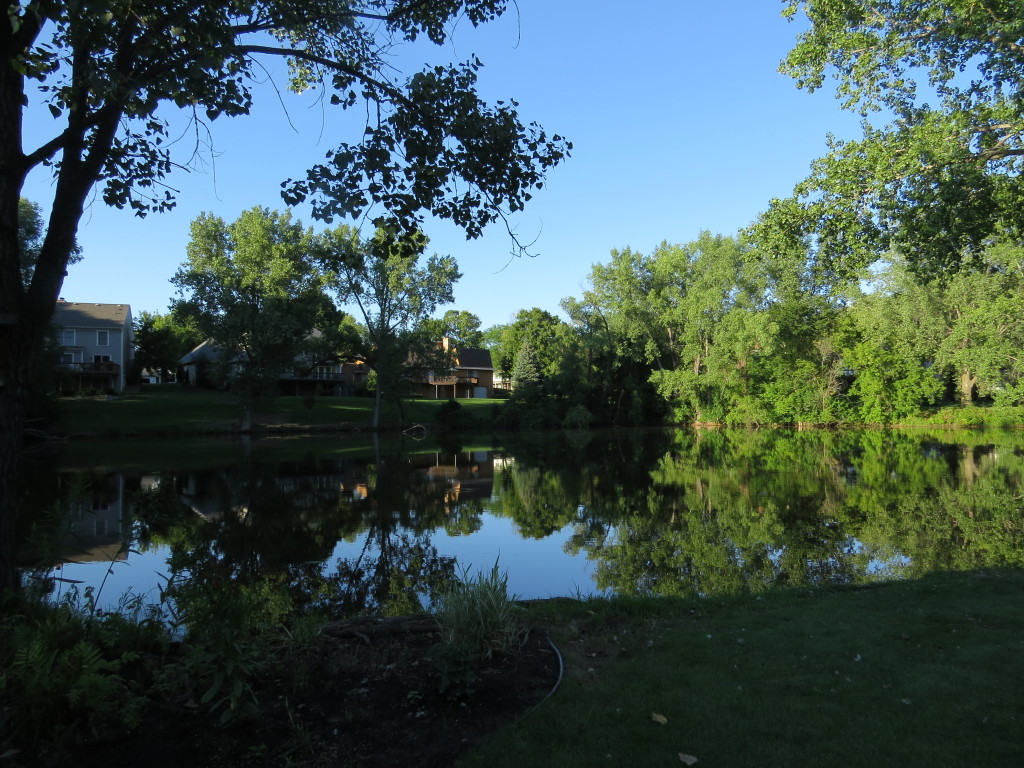 The two large backyard ponds and connecting channel had many shady, reclusive haunts and corners from the overgrown vegetation along the banks. And there were enough large snails and crayfish around for Herons to have a “Chubby Bunny” contest too.
The two large backyard ponds and connecting channel had many shady, reclusive haunts and corners from the overgrown vegetation along the banks. And there were enough large snails and crayfish around for Herons to have a “Chubby Bunny” contest too.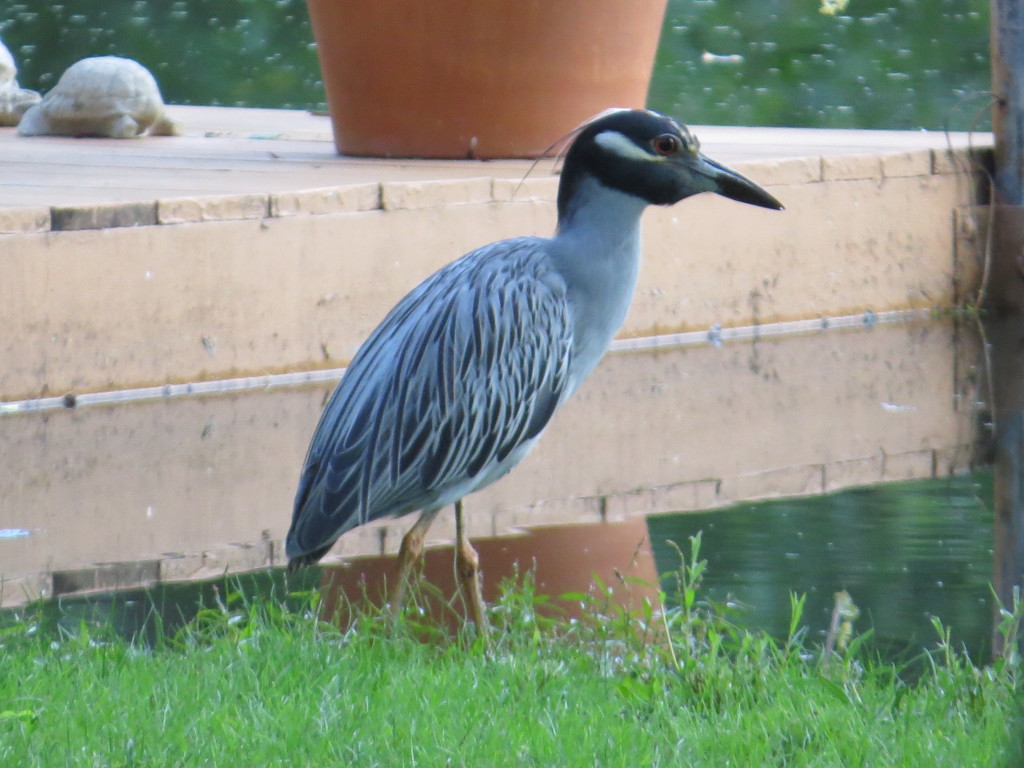 The announcement came in early enough in the evening that those lucky Twin Cities birders could swarm it immediately. My trip was too far to get there before dark. I was there the next day, though. Conveniently I had to go to the Cities that day anyway. Inconveniently, the time of day was wrong and the bird did not come out. So I made the 1.5 hour trek again the following day, only this time in the evening when the bird had been showing. It took nearly two hours of waiting, but just as I was about to call it quits, the bird flew in from its treetop roost to begin its foraging.
The announcement came in early enough in the evening that those lucky Twin Cities birders could swarm it immediately. My trip was too far to get there before dark. I was there the next day, though. Conveniently I had to go to the Cities that day anyway. Inconveniently, the time of day was wrong and the bird did not come out. So I made the 1.5 hour trek again the following day, only this time in the evening when the bird had been showing. It took nearly two hours of waiting, but just as I was about to call it quits, the bird flew in from its treetop roost to begin its foraging.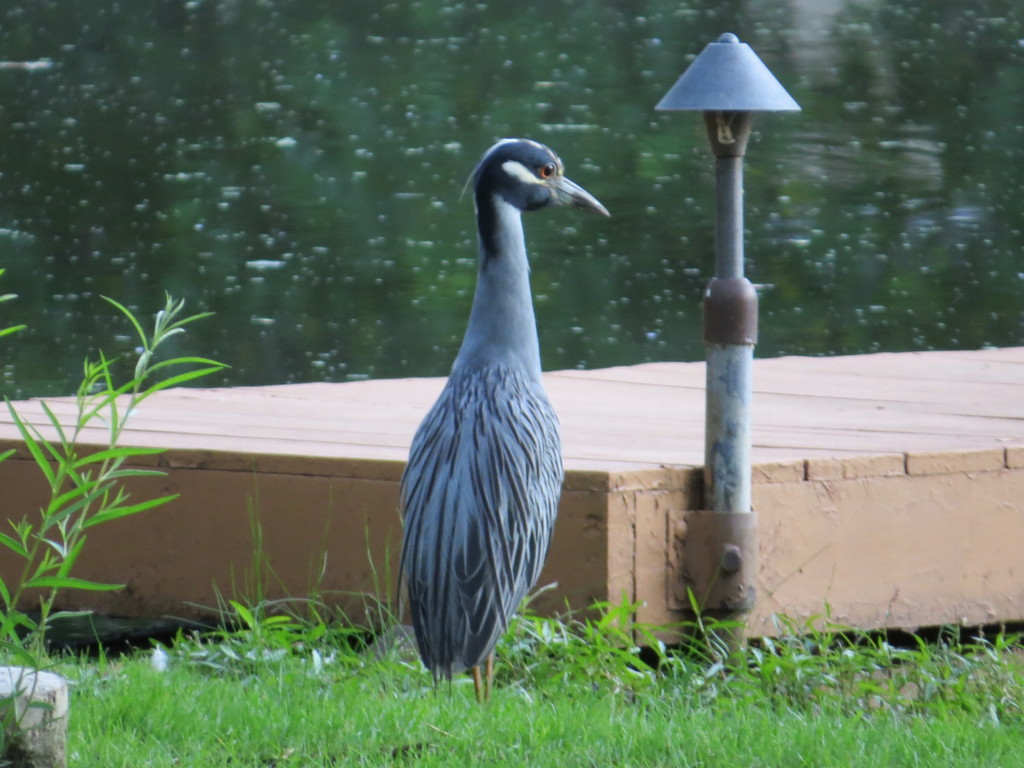
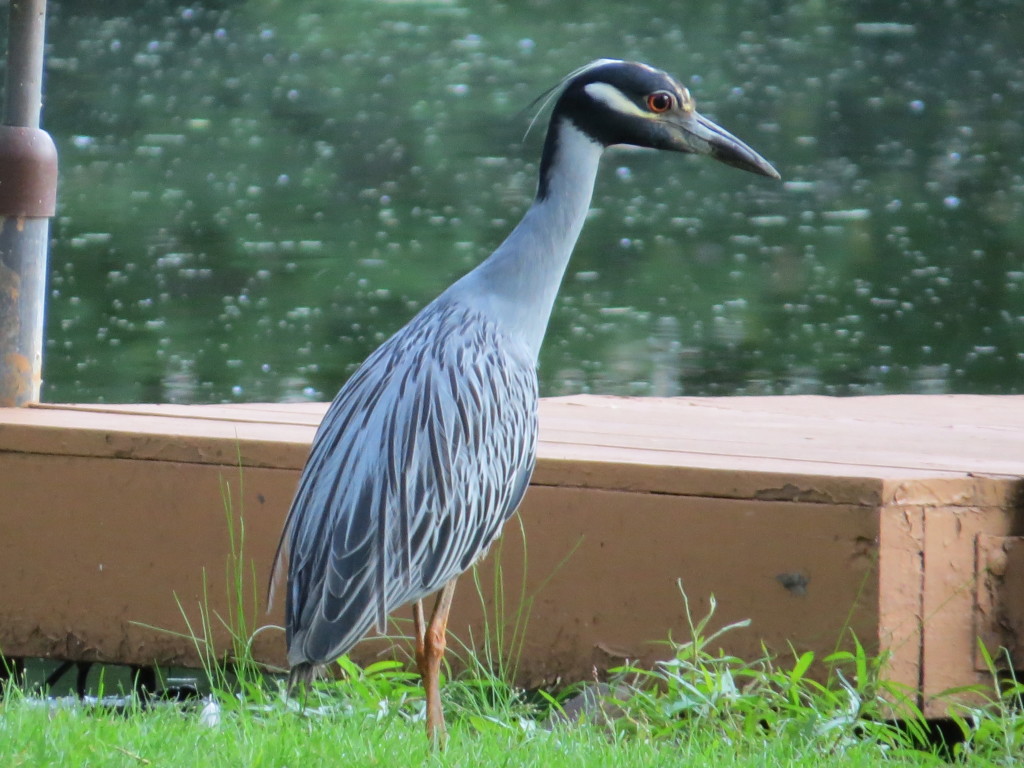
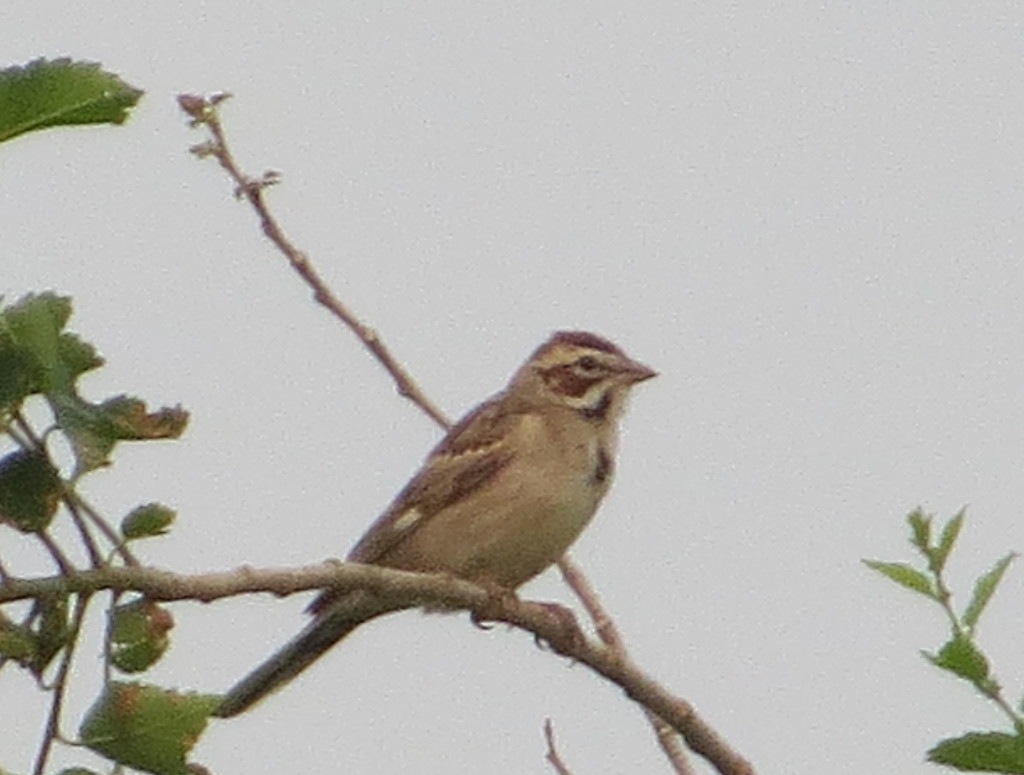
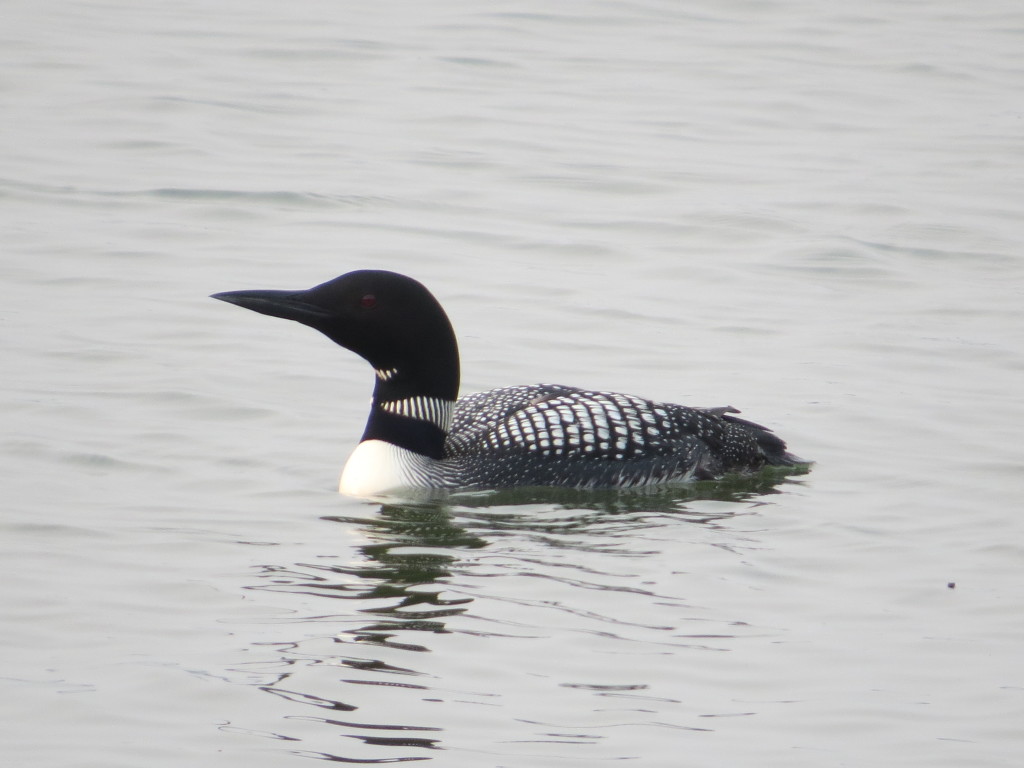 Hmmm…I wonder why they didn’t have a chick with them. It’s best not to think about that.
Hmmm…I wonder why they didn’t have a chick with them. It’s best not to think about that.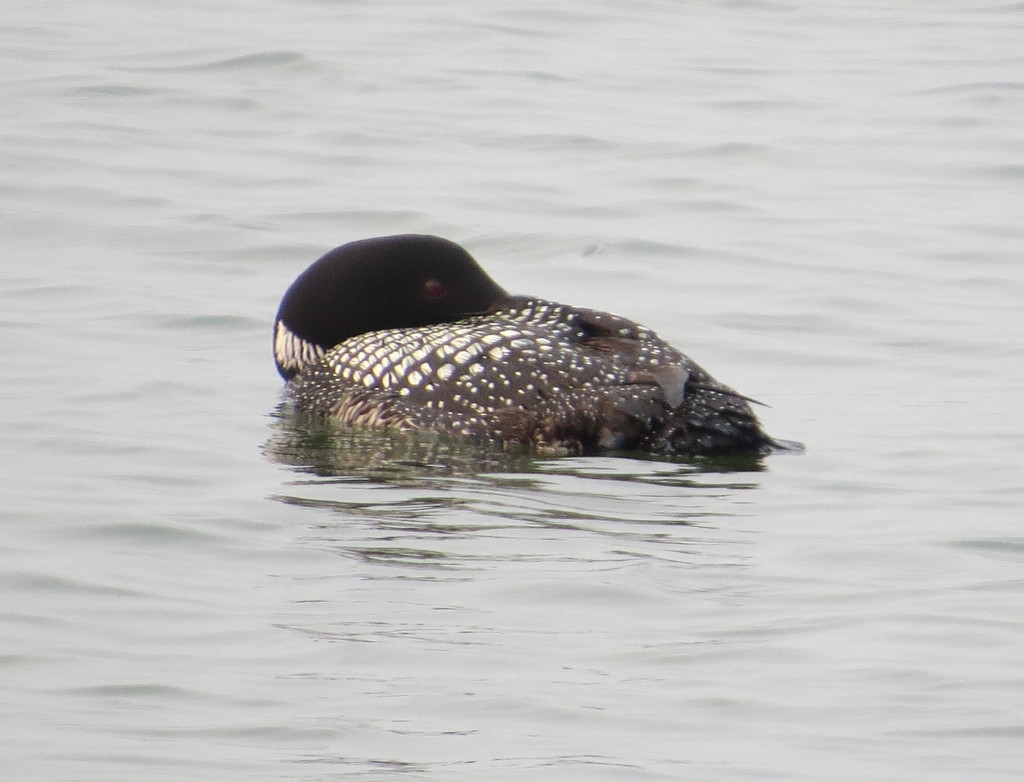 I got back to the house, happy with my morning, and was busy documenting my LASP sighting. Then an email came in that changed the course of my day. After nearly 15 hours of observing the mystery Kingbird over the course of a week, Bruce Fall clinched the ID after hearing the Kingbird vocalize when a Brown-headed Cowbird got too close for comfort. Tropical Kingbird. Holy smokes. This is a scarce bird in even the tiny corners of Arizona and Texas that it calls home. I told Melissa I would have to try to squeeze in a fast trip to the Cities to try for this one. This was a Minnesota first state record of a Tropical Kingbird after all.
I got back to the house, happy with my morning, and was busy documenting my LASP sighting. Then an email came in that changed the course of my day. After nearly 15 hours of observing the mystery Kingbird over the course of a week, Bruce Fall clinched the ID after hearing the Kingbird vocalize when a Brown-headed Cowbird got too close for comfort. Tropical Kingbird. Holy smokes. This is a scarce bird in even the tiny corners of Arizona and Texas that it calls home. I told Melissa I would have to try to squeeze in a fast trip to the Cities to try for this one. This was a Minnesota first state record of a Tropical Kingbird after all.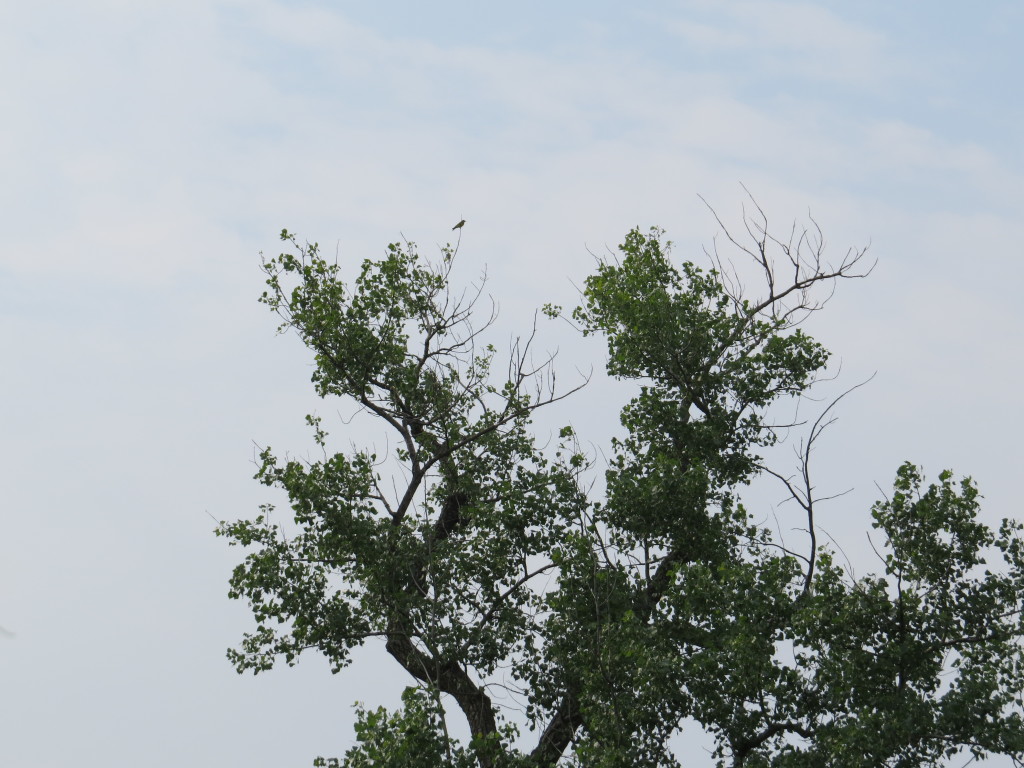
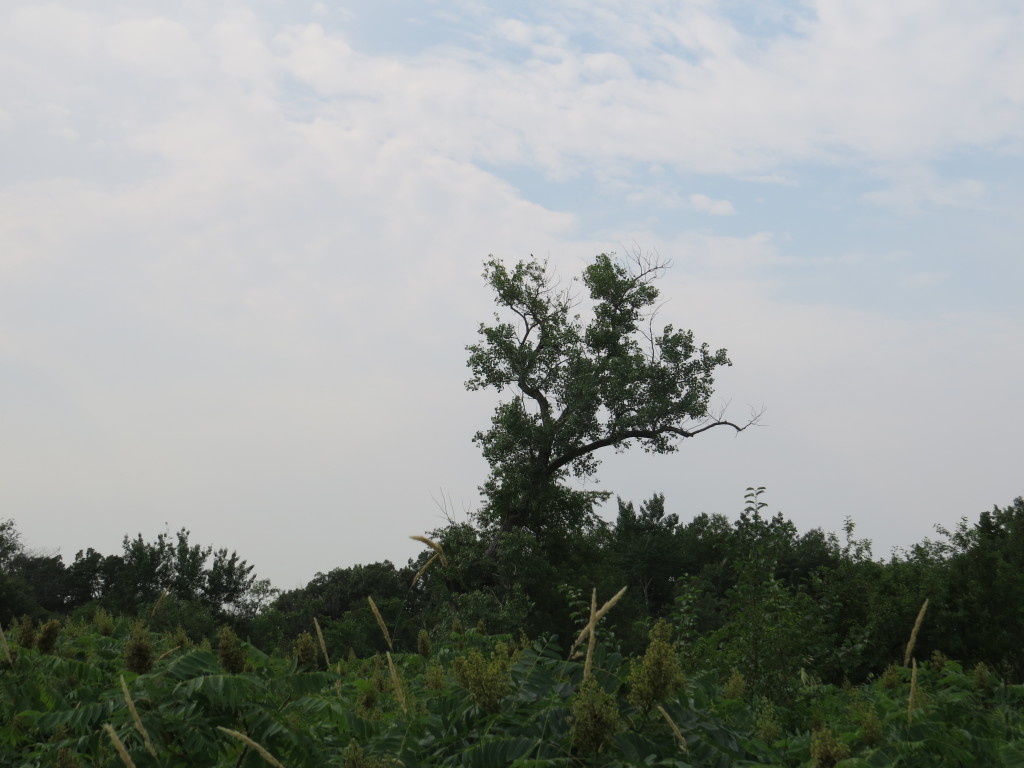
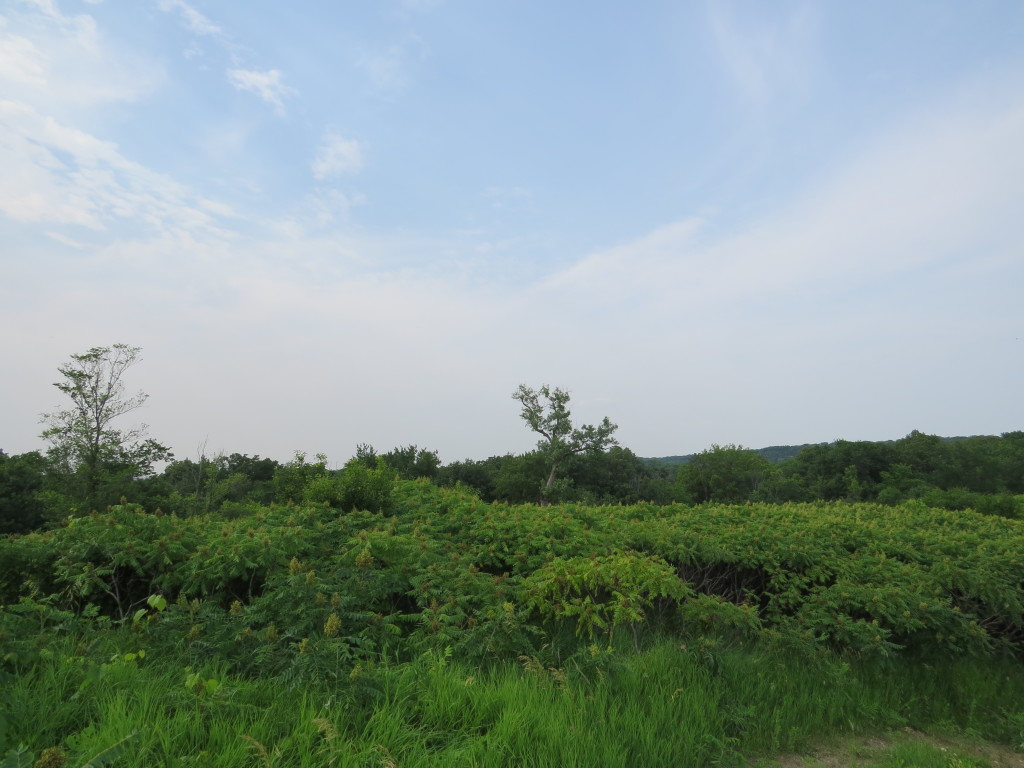 The bird was out there a ways, so I did the best I could for photos.
The bird was out there a ways, so I did the best I could for photos.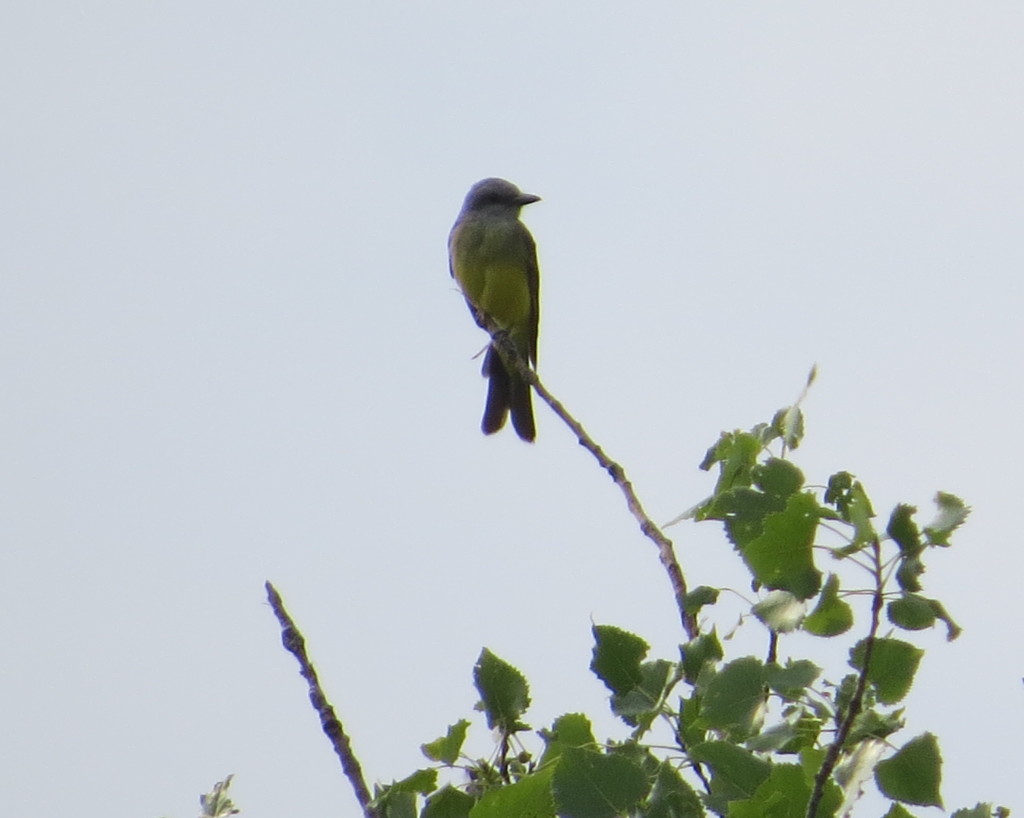
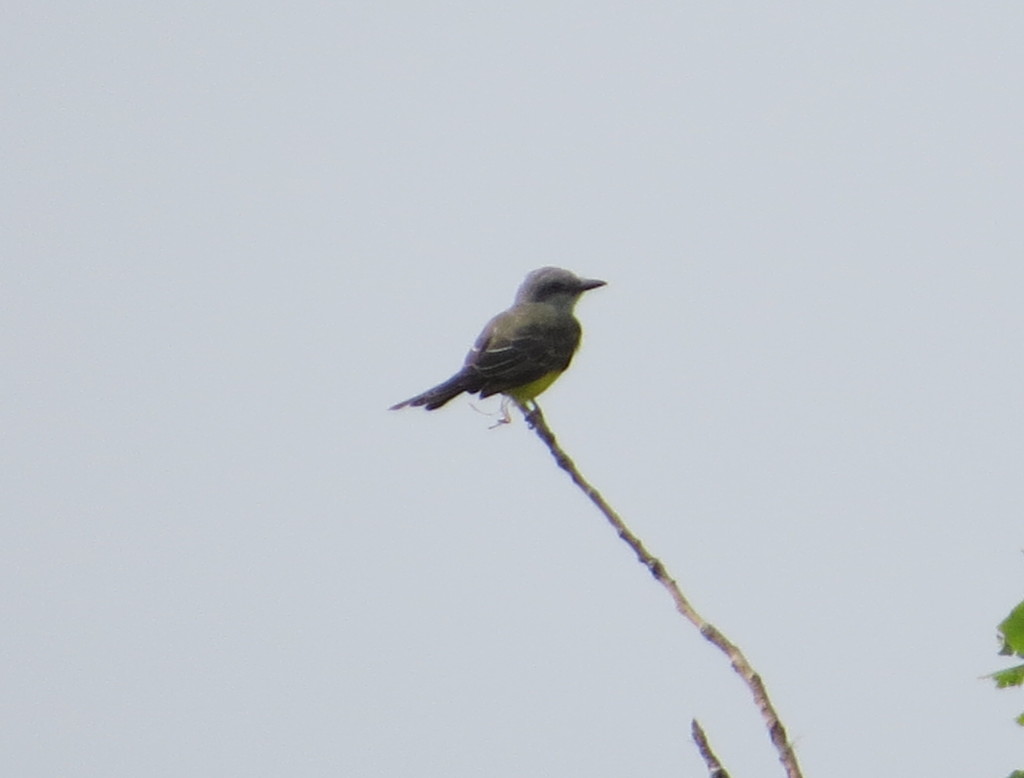 I showed the kids the bird on the camera’s LCD. With another check mark for his list, Evan was out of there (and Melissa and Marin too).
I showed the kids the bird on the camera’s LCD. With another check mark for his list, Evan was out of there (and Melissa and Marin too).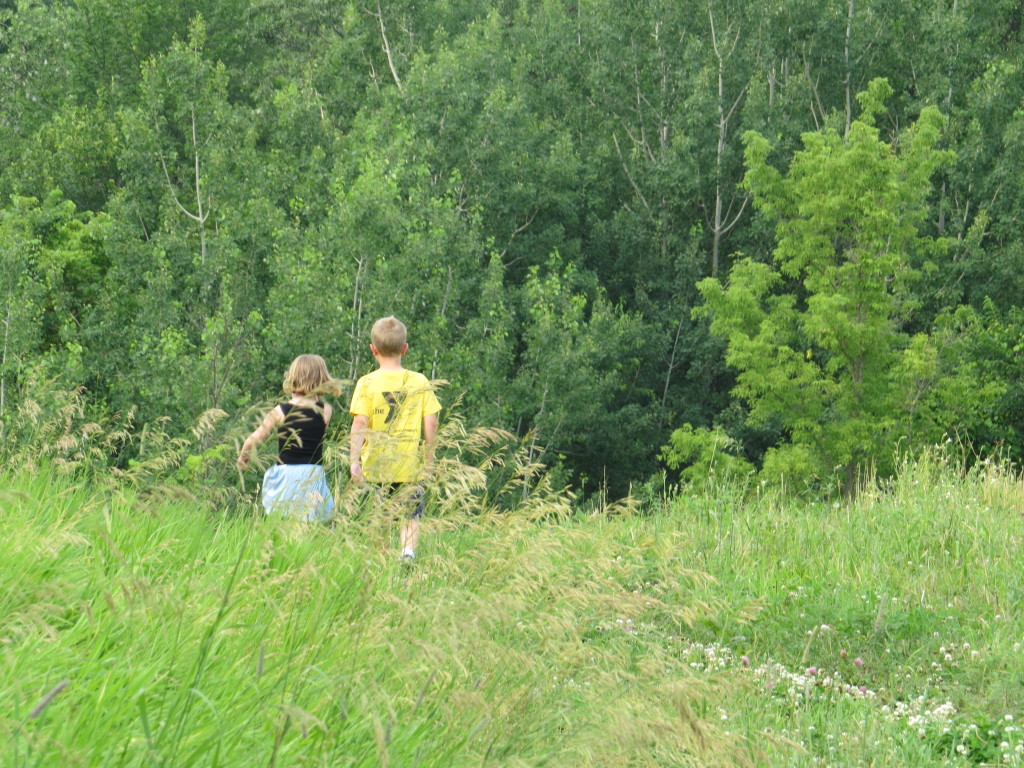 I was hoping for better photos, so I stayed for a little while. After ten minutes of observation, something incredible happened that two other birders present and myself witnessed: the Tropical Kingbird stretched out its neck, pulled its wings behind its back, and vocalized! It was a 1-second higher-pitched trill. I later listened to the sounds of TRKI on the iPod, and it was a match for the first call listed. I felt bad for all the birders that have watched and watched this bird just waiting for such a moment. Luck of the draw I guess. Just like when something even better then happened–the Kingbird flew to a low perch right on the path! Matt Stratmoen, his 600 mm lense, and I hustled down the path to get near it. We’d snap some photos, creep closer, snap, creep, snap, etc. We eventually got within 100 feet or less.
I was hoping for better photos, so I stayed for a little while. After ten minutes of observation, something incredible happened that two other birders present and myself witnessed: the Tropical Kingbird stretched out its neck, pulled its wings behind its back, and vocalized! It was a 1-second higher-pitched trill. I later listened to the sounds of TRKI on the iPod, and it was a match for the first call listed. I felt bad for all the birders that have watched and watched this bird just waiting for such a moment. Luck of the draw I guess. Just like when something even better then happened–the Kingbird flew to a low perch right on the path! Matt Stratmoen, his 600 mm lense, and I hustled down the path to get near it. We’d snap some photos, creep closer, snap, creep, snap, etc. We eventually got within 100 feet or less.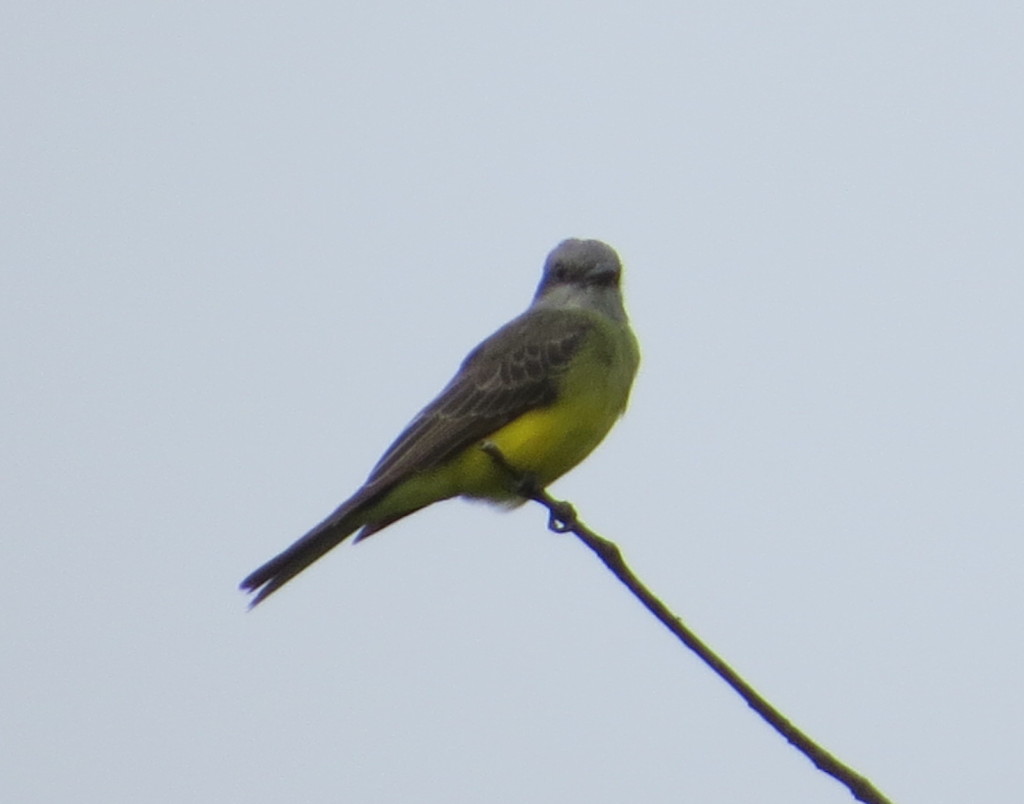 Matt is the one who took that amazing image of the Orr Black-backed Woodpeckers with the mom and dad in profile perched on either side of the nest hole with the baby sticking his head out screaming. Amazing image. It’s on
Matt is the one who took that amazing image of the Orr Black-backed Woodpeckers with the mom and dad in profile perched on either side of the nest hole with the baby sticking his head out screaming. Amazing image. It’s on 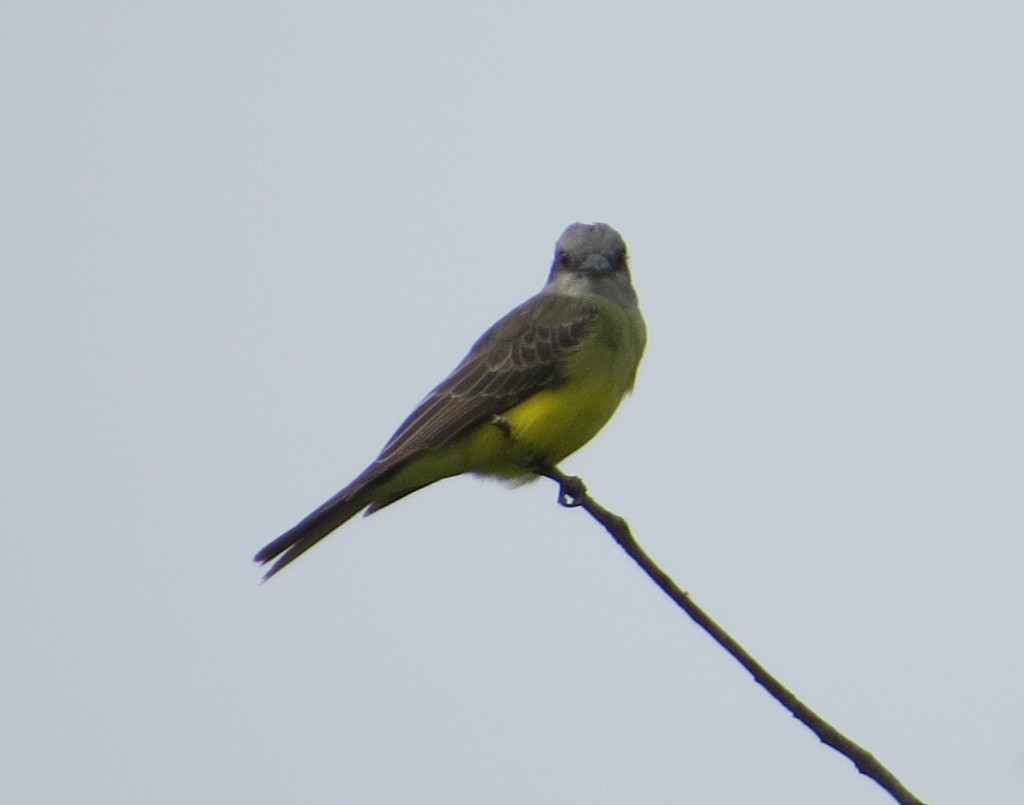 We won’t talk about the quality difference between Matt’s photos and mine of the Tropical Kingbird from the same distance. But I can live with mine. The views were phenomenal and more than I hoped for.
We won’t talk about the quality difference between Matt’s photos and mine of the Tropical Kingbird from the same distance. But I can live with mine. The views were phenomenal and more than I hoped for.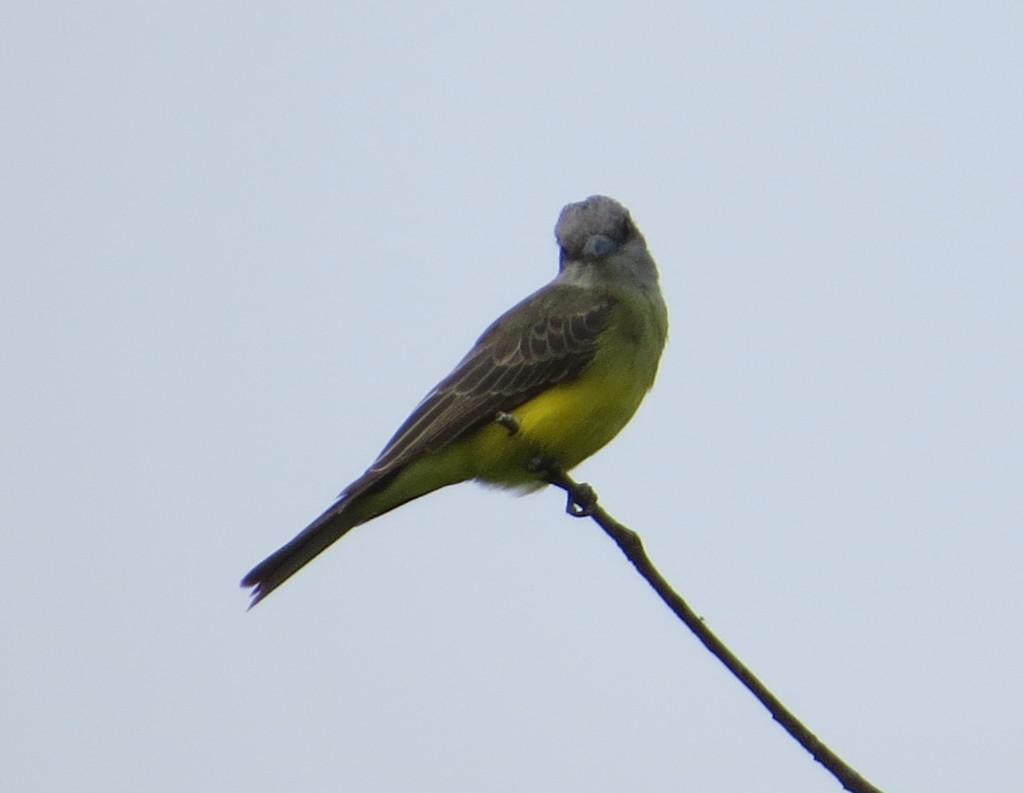
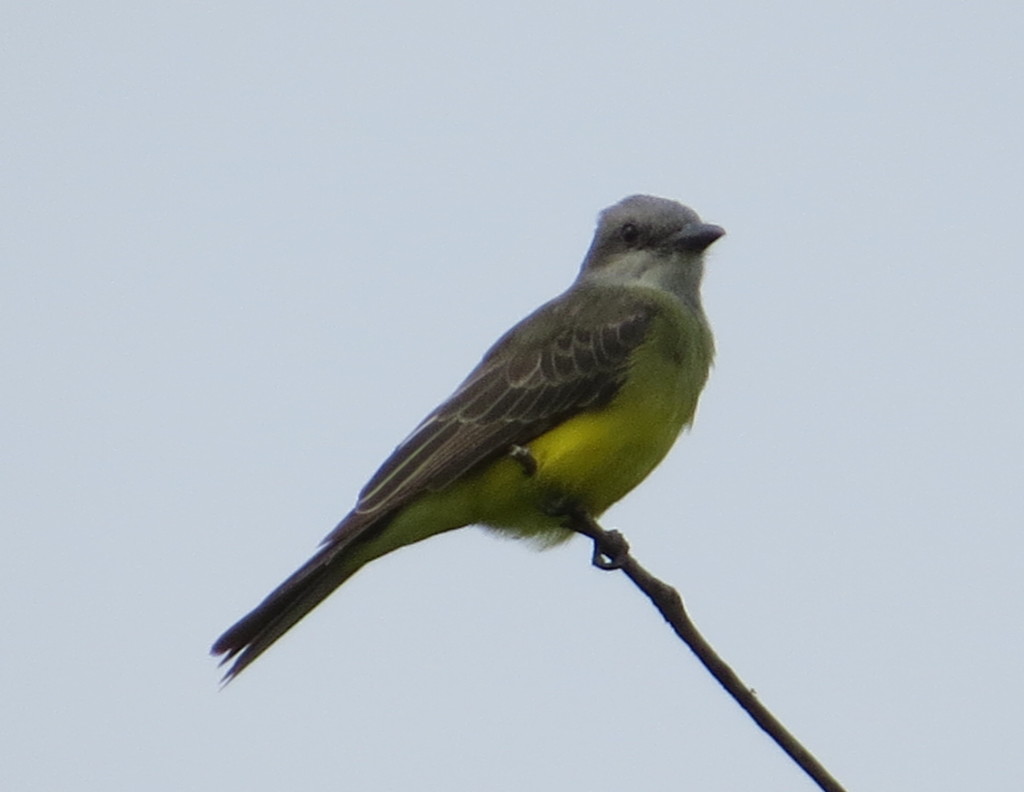 The Kingbird had enough of this low perch and went back to his tall, remote Cottonwood. I got what I came for and then some, so I hustled back to the van after just a half hour of observation. After all, Swedish meatballs and a fight loading Ikea furniture in the van were calling my name.
The Kingbird had enough of this low perch and went back to his tall, remote Cottonwood. I got what I came for and then some, so I hustled back to the van after just a half hour of observation. After all, Swedish meatballs and a fight loading Ikea furniture in the van were calling my name.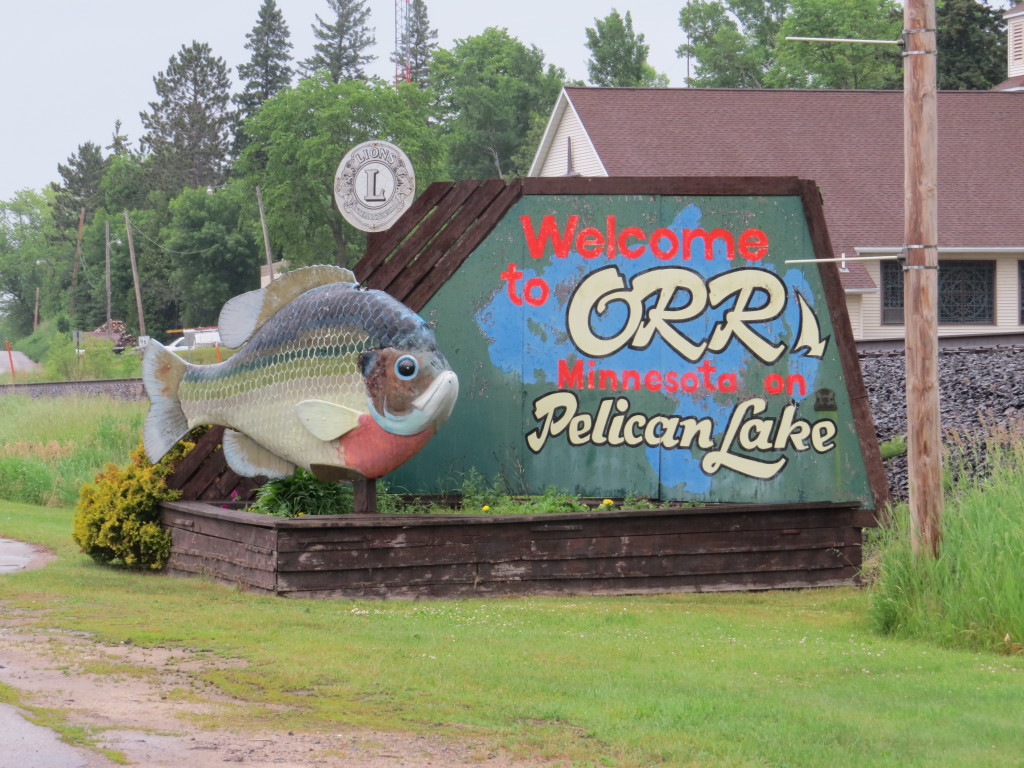 The weather forecast for the day was not good with thunderstorms all day long starting at 6 AM. As we made the half-hour trip up to Orr, the rain paid no attention to the forecast and came a little earlier. Ugh. So much for good photography conditions IF the birds were even still there. Regardless, I had come 300 miles for this. There was no turning back now.
The weather forecast for the day was not good with thunderstorms all day long starting at 6 AM. As we made the half-hour trip up to Orr, the rain paid no attention to the forecast and came a little earlier. Ugh. So much for good photography conditions IF the birds were even still there. Regardless, I had come 300 miles for this. There was no turning back now.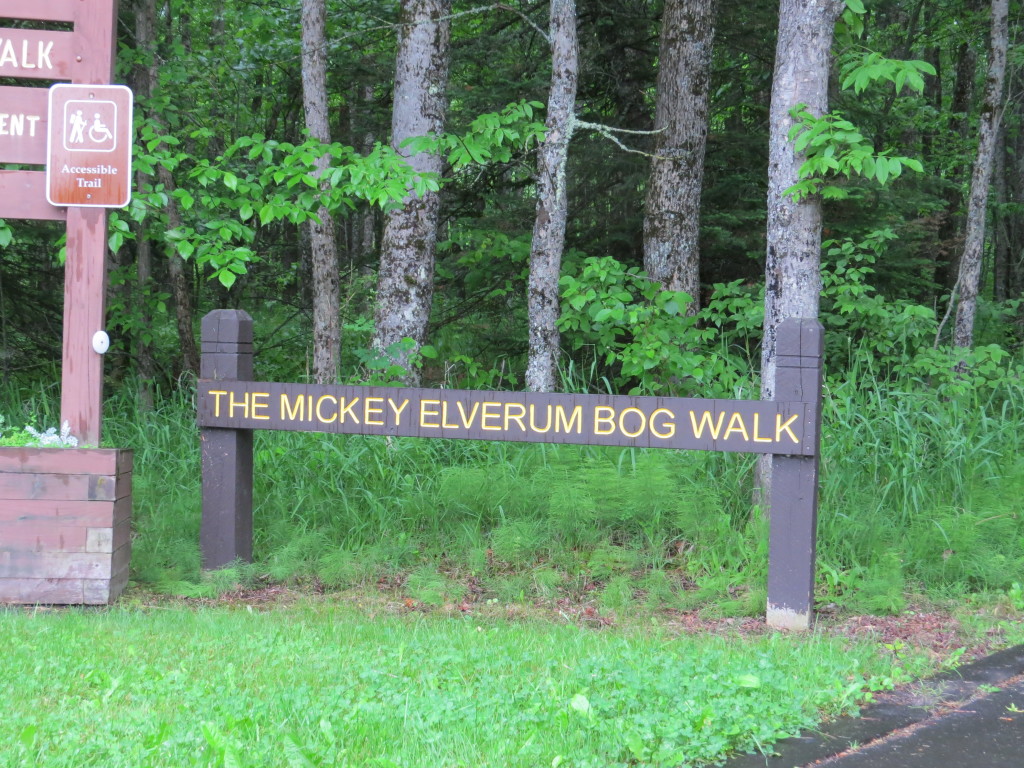 My memory’s a blur, but I think I left my dad in the dust as I raced down the Bog Walk to find the nest. Everyone said you can’t miss it; it’s right by the boardwalk and the young are making a holy racket. It turns out you can miss it…by a day.
My memory’s a blur, but I think I left my dad in the dust as I raced down the Bog Walk to find the nest. Everyone said you can’t miss it; it’s right by the boardwalk and the young are making a holy racket. It turns out you can miss it…by a day.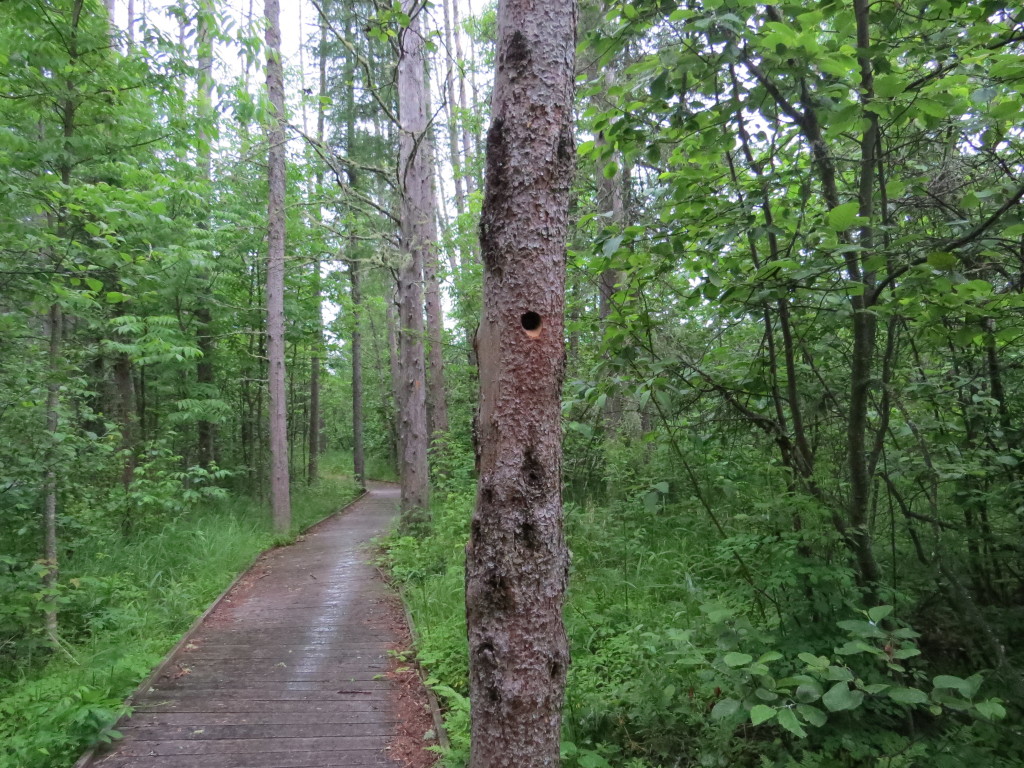 It was sickening. I knew this outcome was a very real possibility, but knowledge and feelings are very different. Adding injury to insult were hordes of mosquitoes and a steady rain. In vain I looked and listened, but those Woodpeckers weren’t speaking to me. It was a ghost town. I thought about giving up to get ahead start on licking my wounds on my 300 MILE DRIVE HOME. But then I remembered I’ve been in this spot before and have come out thriving. Coming to mind were clutch birding moments from my past like getting the Chestnut-collared Longspur last minute at Felton Prairie last year with Steve Gardner or getting a lifer Blue Grosbeak at Blue Mounds State Park two years ago with Evan in a break in a rainstorm the last morning of our trip. I sent Dad back to the car to get a reprieve from the rain and mosquitoes; I had work to do.
It was sickening. I knew this outcome was a very real possibility, but knowledge and feelings are very different. Adding injury to insult were hordes of mosquitoes and a steady rain. In vain I looked and listened, but those Woodpeckers weren’t speaking to me. It was a ghost town. I thought about giving up to get ahead start on licking my wounds on my 300 MILE DRIVE HOME. But then I remembered I’ve been in this spot before and have come out thriving. Coming to mind were clutch birding moments from my past like getting the Chestnut-collared Longspur last minute at Felton Prairie last year with Steve Gardner or getting a lifer Blue Grosbeak at Blue Mounds State Park two years ago with Evan in a break in a rainstorm the last morning of our trip. I sent Dad back to the car to get a reprieve from the rain and mosquitoes; I had work to do.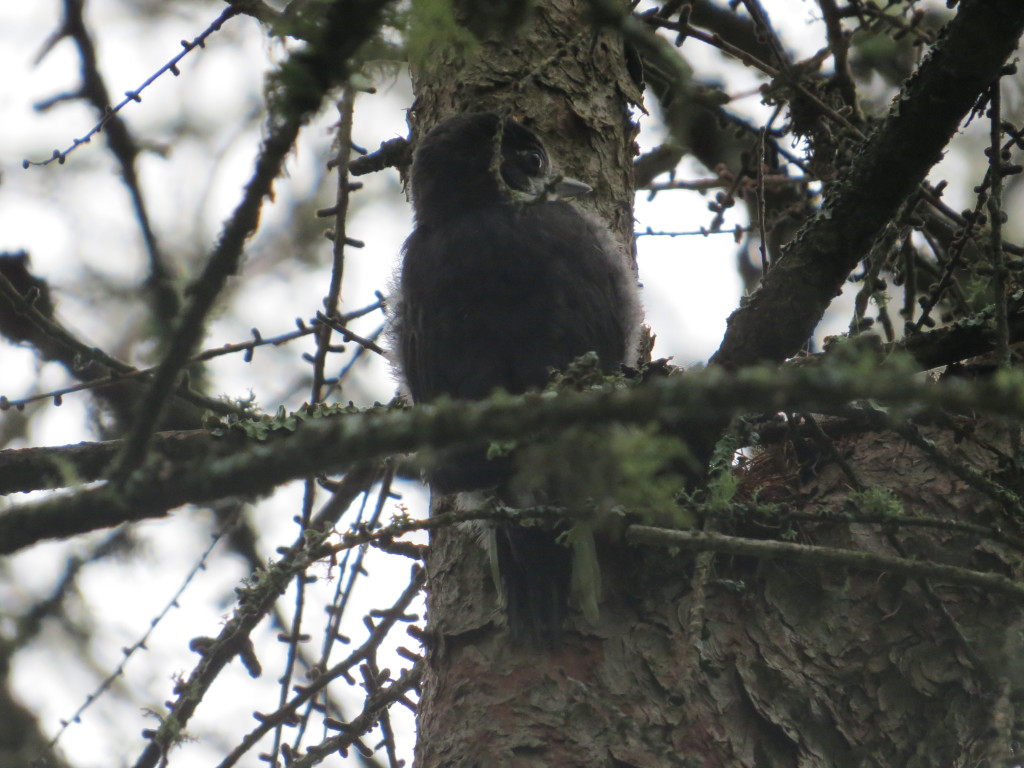 The suppressed calls I was hearing now made sense as this was a young male just learning his voice. Though not that evident in this photo, you can see the yellow spot on the forehead. Watching it long enough, I eventually saw momma come in.
The suppressed calls I was hearing now made sense as this was a young male just learning his voice. Though not that evident in this photo, you can see the yellow spot on the forehead. Watching it long enough, I eventually saw momma come in.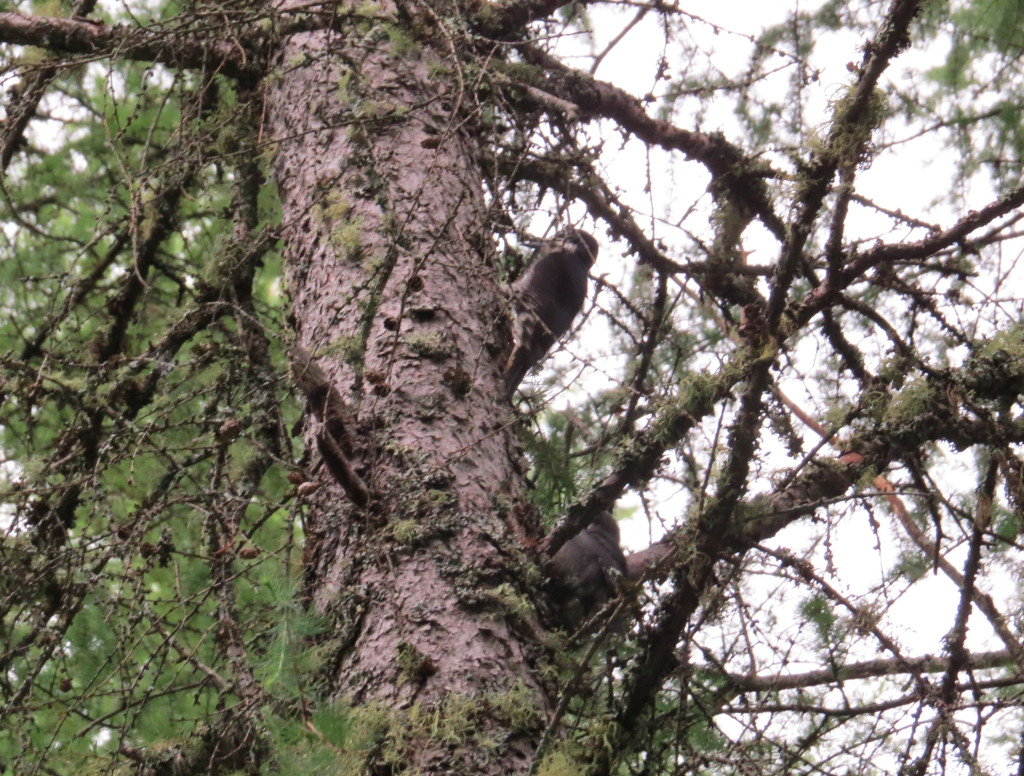
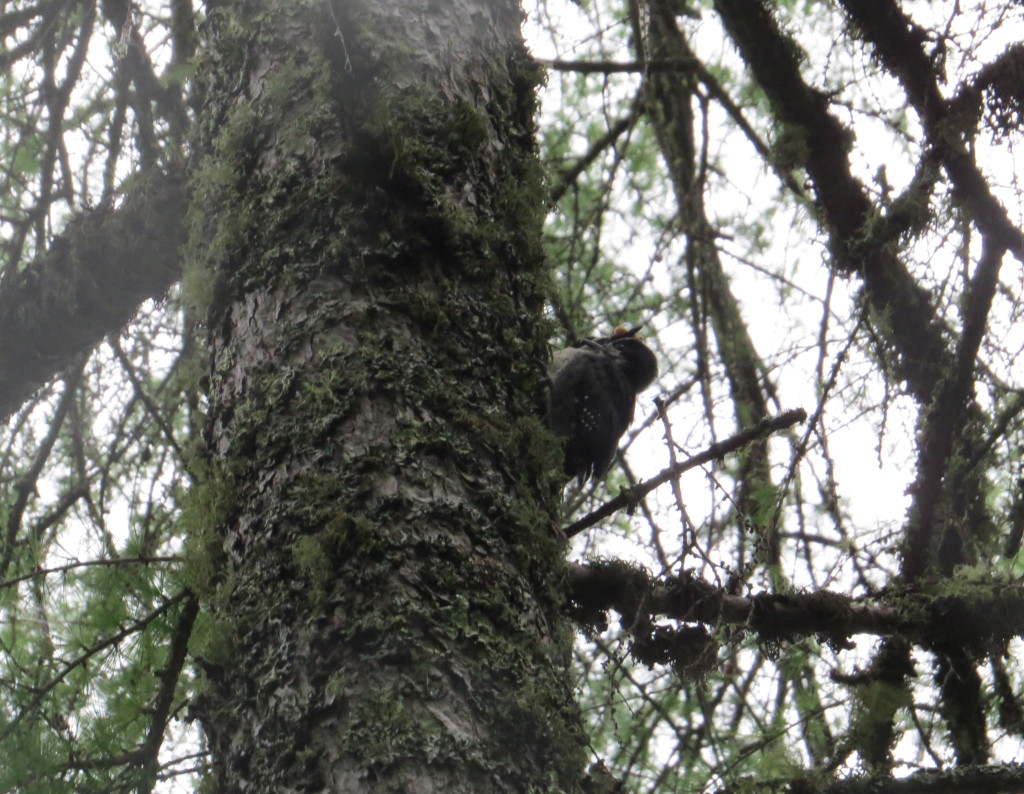
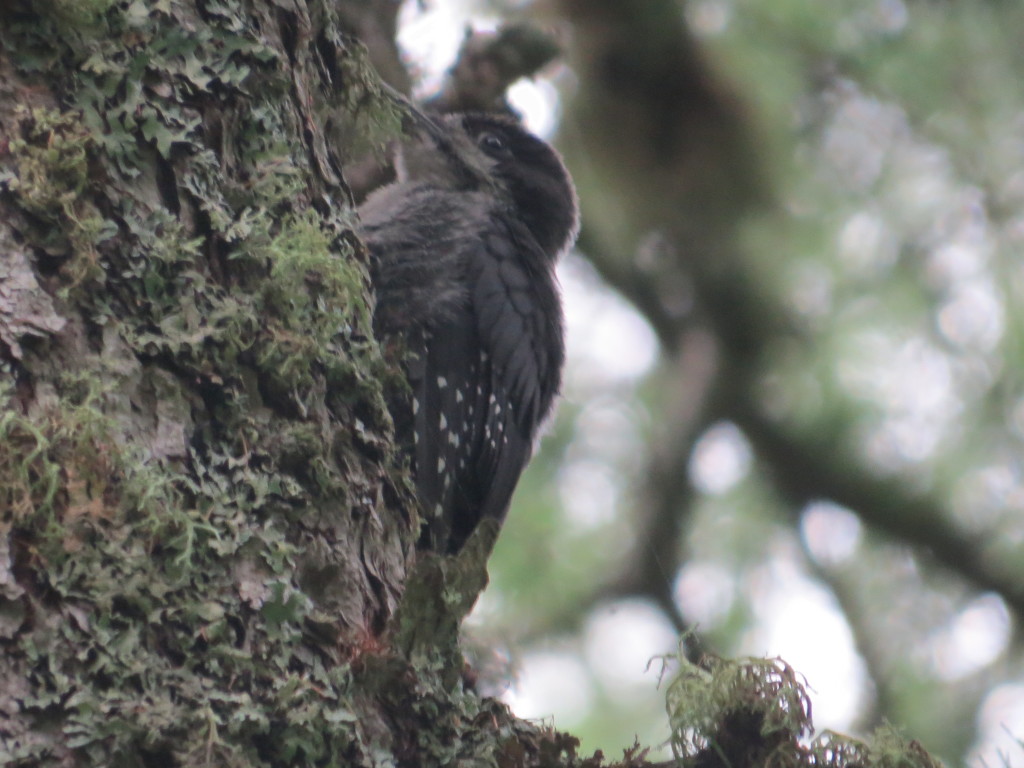 I really wanted pictures of mom and dad, though, especially dad with that golden yellow crown. Eventually momma and baby made their way to the trees by the boardwalk with me shortly and soggily behind them. Dad was able to get his life looks at this bird now too and then proceeded to be my spotter for photographing them.
I really wanted pictures of mom and dad, though, especially dad with that golden yellow crown. Eventually momma and baby made their way to the trees by the boardwalk with me shortly and soggily behind them. Dad was able to get his life looks at this bird now too and then proceeded to be my spotter for photographing them.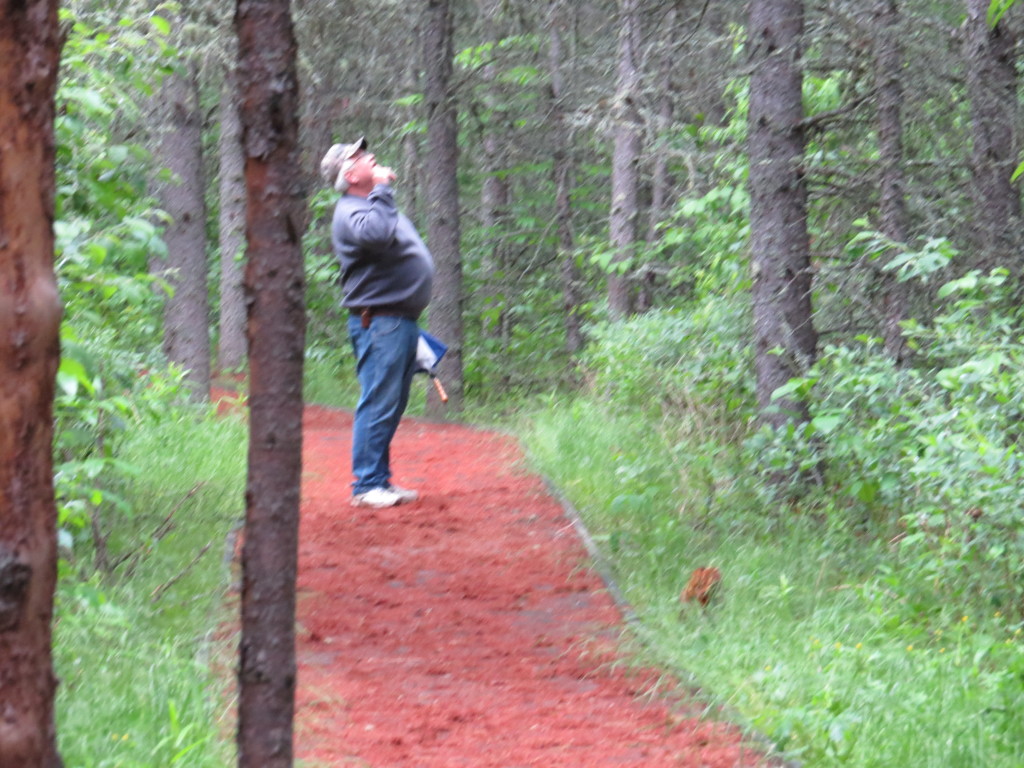 With the low light conditions that exist in a bog at dawn on a rainy day, I needed all the chances I could get in order to get any kind of decent photo. We positioned ourselves within earshot of the calling baby and sure enough, we’d get frequent looks at the mother as she would forage for food to bring back to baby.
With the low light conditions that exist in a bog at dawn on a rainy day, I needed all the chances I could get in order to get any kind of decent photo. We positioned ourselves within earshot of the calling baby and sure enough, we’d get frequent looks at the mother as she would forage for food to bring back to baby.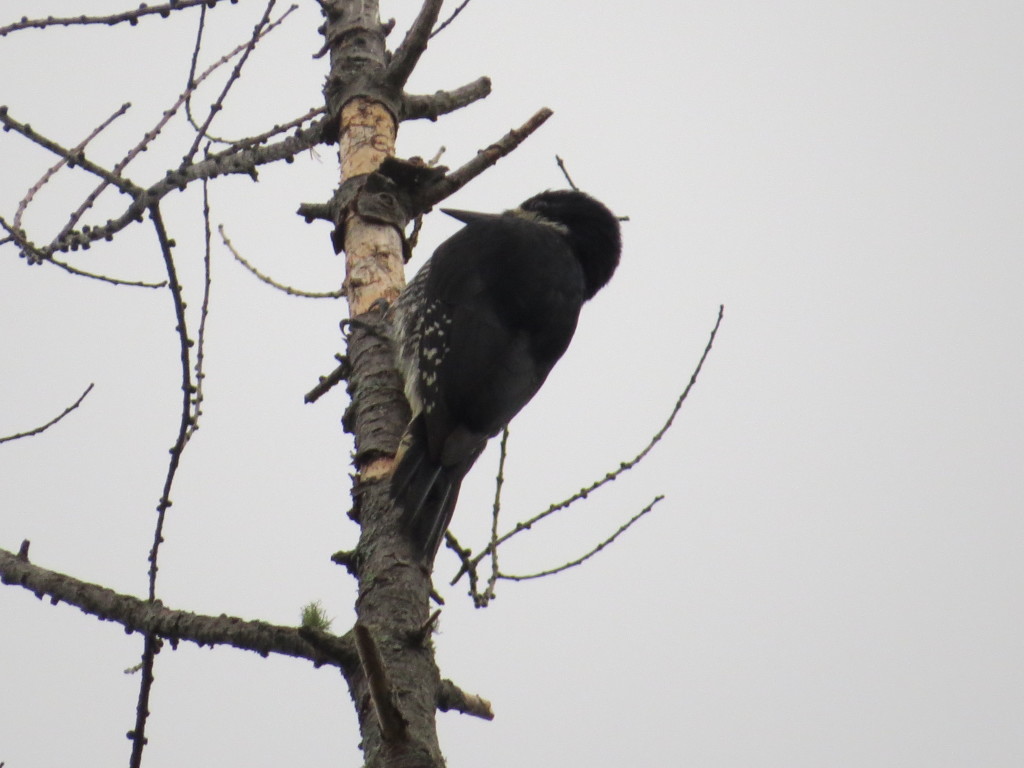
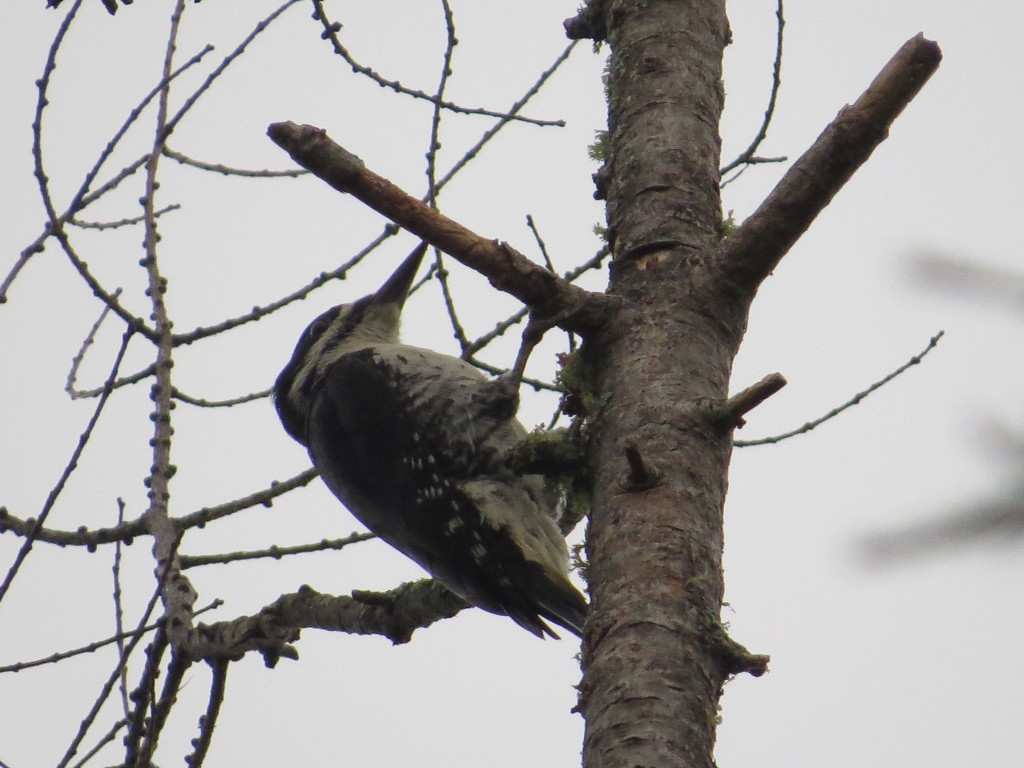 The jet-black back of these birds really stands out. You can see how it would be effective camouflage in their preferred habitat of recently burned forests.
The jet-black back of these birds really stands out. You can see how it would be effective camouflage in their preferred habitat of recently burned forests.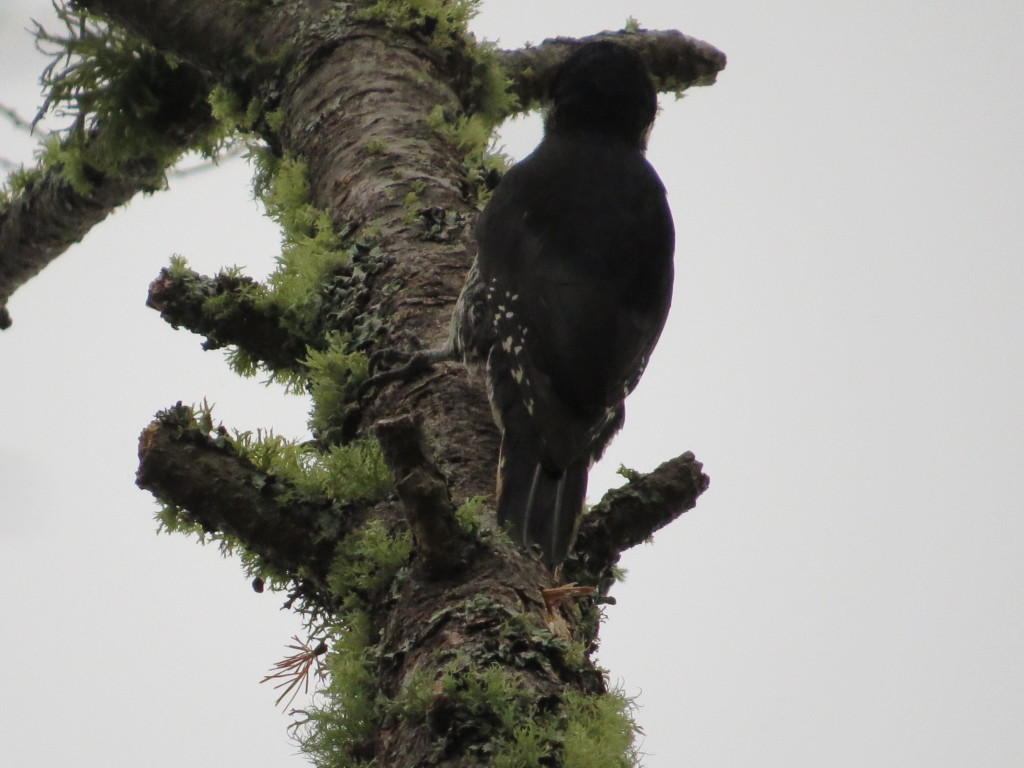
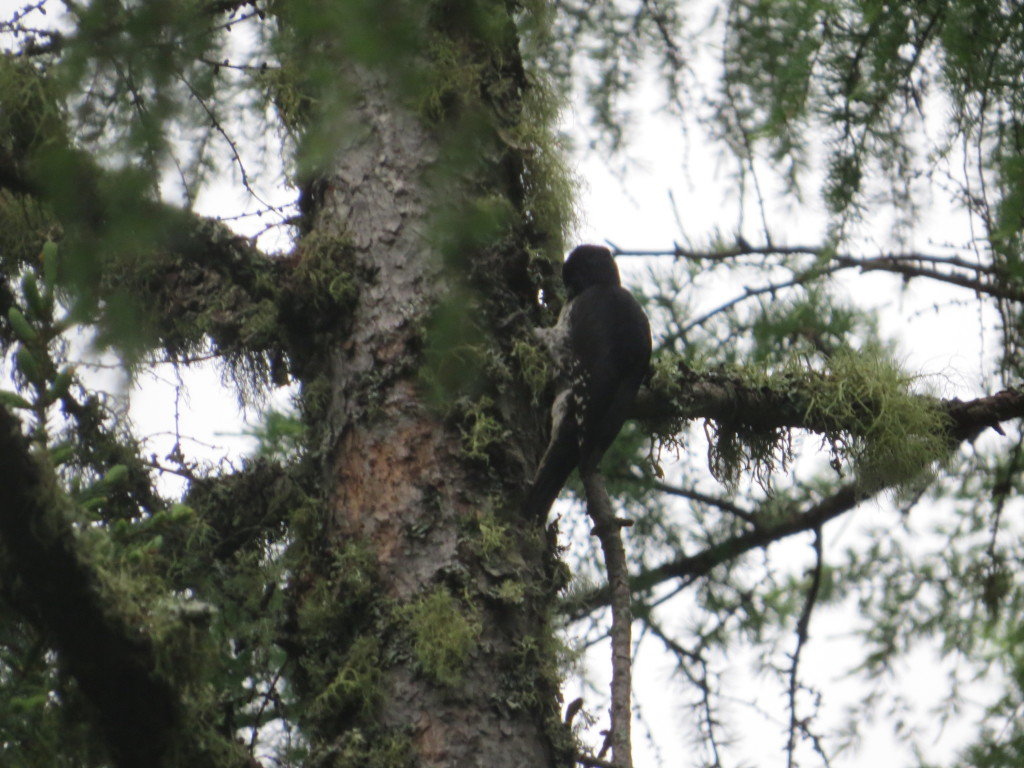
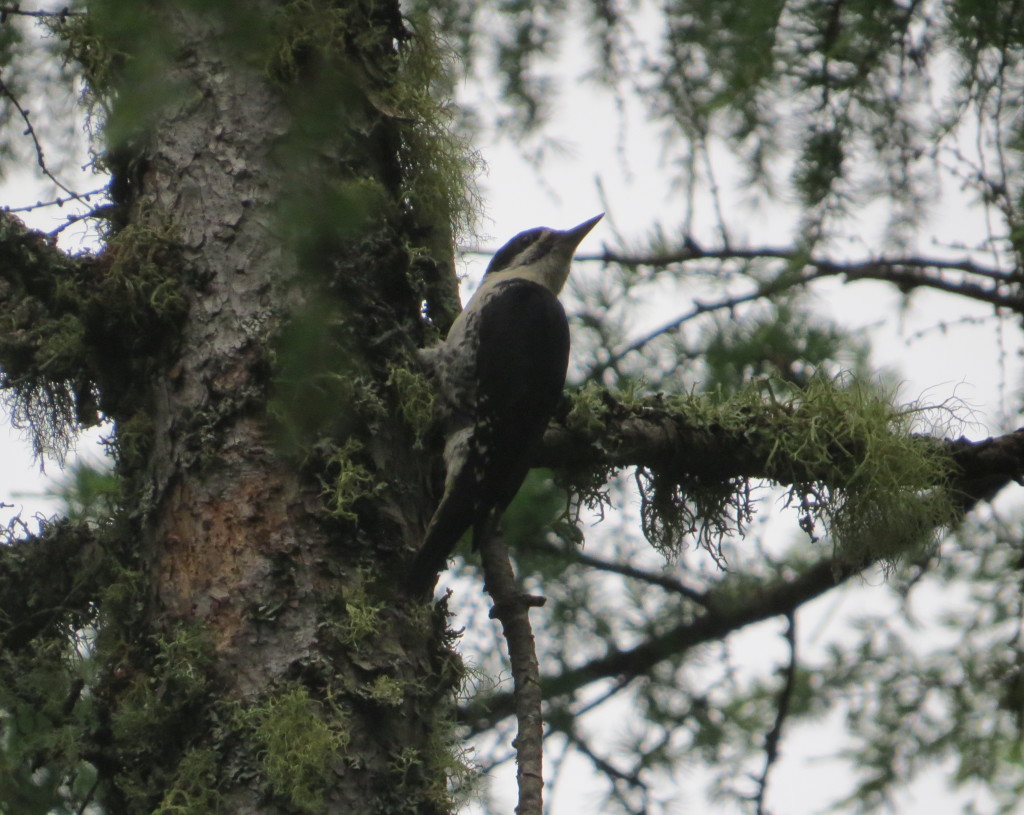
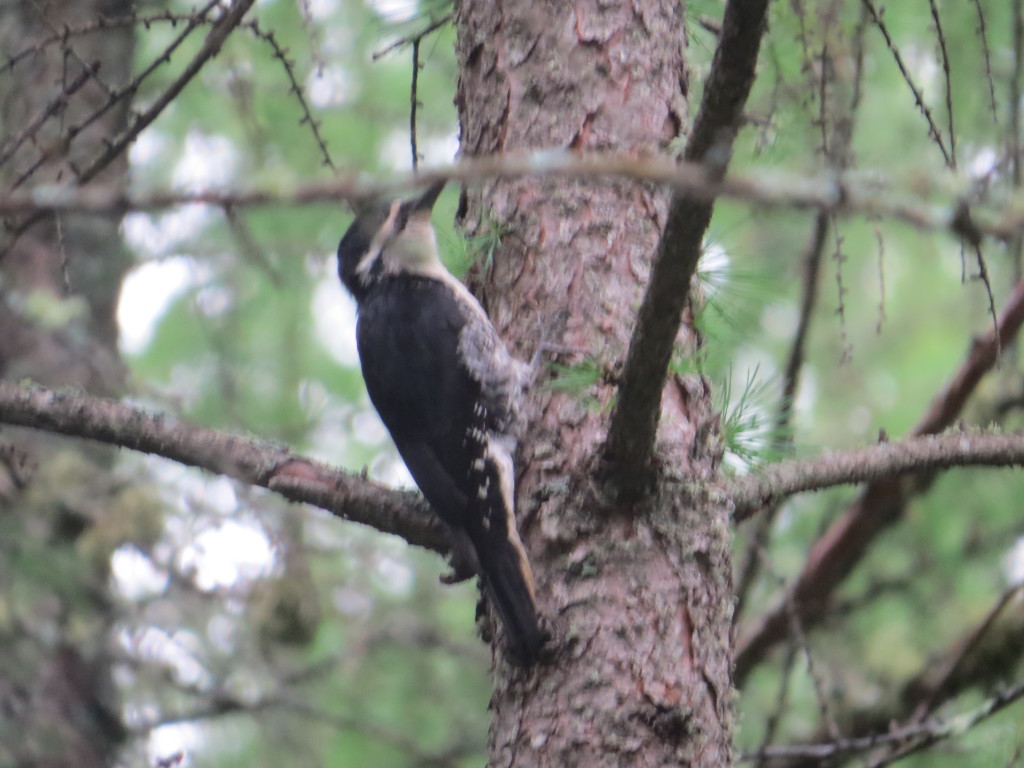
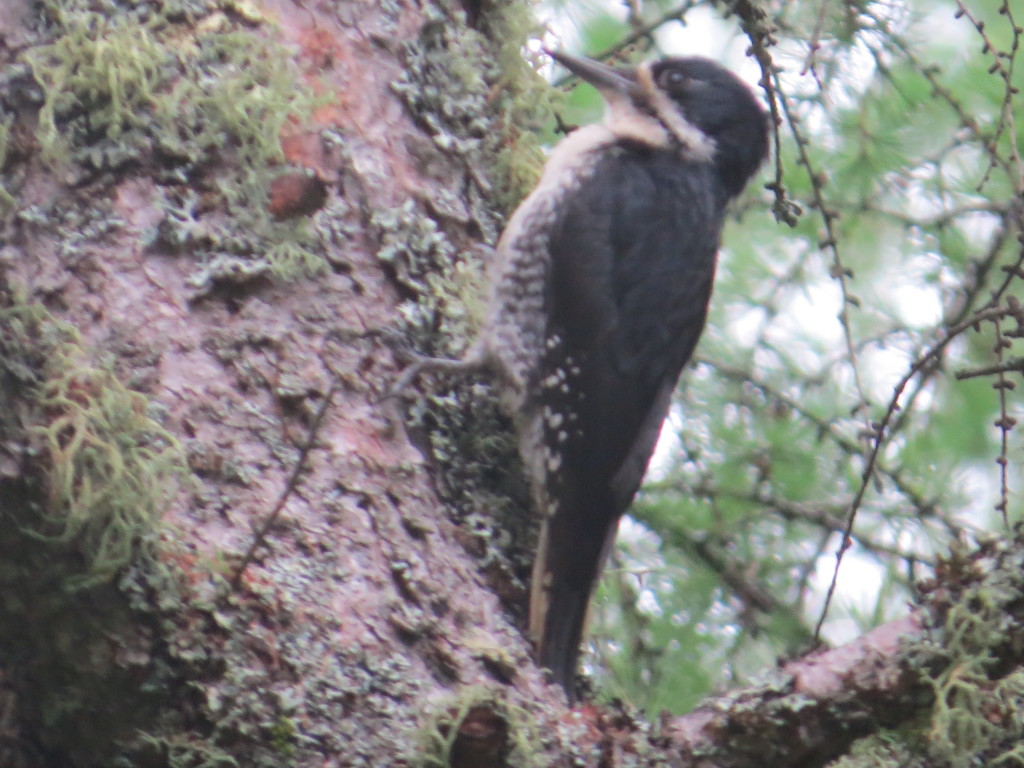 Despite the poor conditions for photography, getting this much-wanted lifer in this way in this place with this company was pretty special. After all, we’d all be stuck on some metaphorical tree without the guidance of a parent. Mine even called me out of the literal trees and gave me dry socks for the ride home.
Despite the poor conditions for photography, getting this much-wanted lifer in this way in this place with this company was pretty special. After all, we’d all be stuck on some metaphorical tree without the guidance of a parent. Mine even called me out of the literal trees and gave me dry socks for the ride home.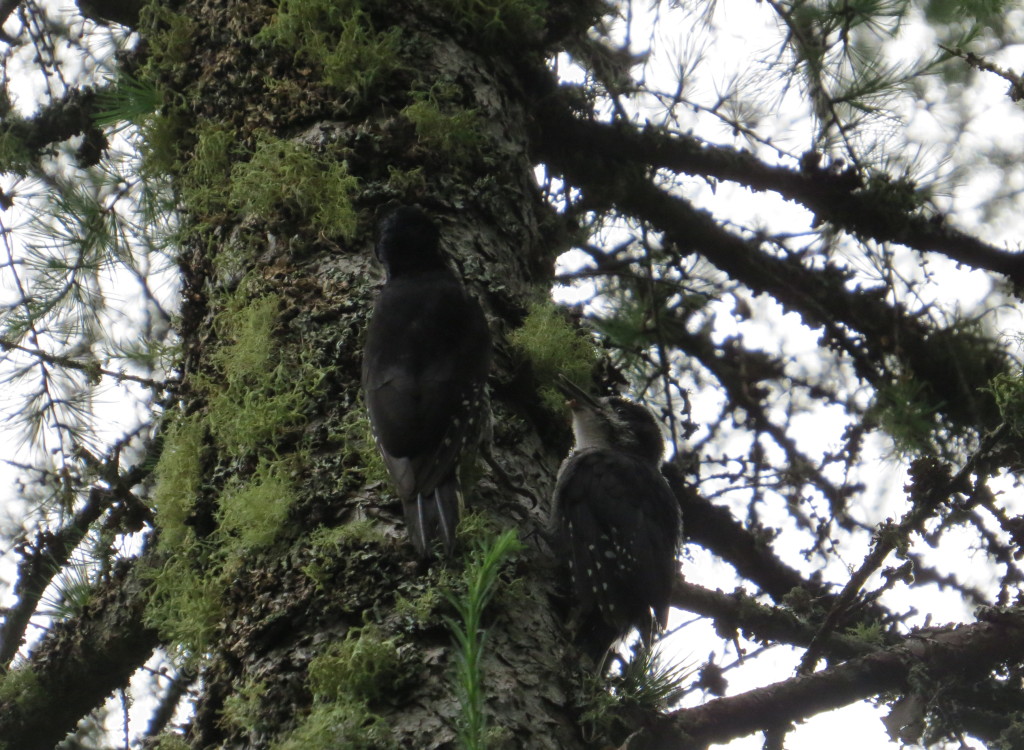
 Getting to the scene a few hundred yards down the trail, I heard the bird immediately. Several birders and I strained to locate it. One lady claimed she saw it.
Getting to the scene a few hundred yards down the trail, I heard the bird immediately. Several birders and I strained to locate it. One lady claimed she saw it.
 Before we left, I thought I heard the soft bee-buzzzz call of a Blue-winged Warbler. Nah, couldn’t be…
Before we left, I thought I heard the soft bee-buzzzz call of a Blue-winged Warbler. Nah, couldn’t be…





 If two unplanned lifers weren’t enough, how about a third?! Several Terns caught my eye right away when we got to the ponds. Their bills looked excessively reddish and other clues were leading me to the conclusion that I was looking at Common Terns, which aren’t so common in Minnesota compared to the excessively common Forster’s Tern.
If two unplanned lifers weren’t enough, how about a third?! Several Terns caught my eye right away when we got to the ponds. Their bills looked excessively reddish and other clues were leading me to the conclusion that I was looking at Common Terns, which aren’t so common in Minnesota compared to the excessively common Forster’s Tern. I spent much time agonizing over this ID after the fact as Common and Forster’s Terns are incredibly similar looking. Many hours were spent scouring images on Google, studying Sibley, etc. Common Terns have reddish-orange bills while Forster’s Terns have a straight-up orange color. The red really popped when I looked at these birds.
I spent much time agonizing over this ID after the fact as Common and Forster’s Terns are incredibly similar looking. Many hours were spent scouring images on Google, studying Sibley, etc. Common Terns have reddish-orange bills while Forster’s Terns have a straight-up orange color. The red really popped when I looked at these birds.





 Dunlin were excessively plentiful and quite striking in full breeding plumage.
Dunlin were excessively plentiful and quite striking in full breeding plumage.


 There was a lot going on with the shorebirds, both in numbers of birds and numbers of species. Wilson’s Phalaropes and White-rumped Sandpipers can be seen in my photos, but I didn’t focus any of my photography efforts on them. I probably could have spent hours photographing all these shorebirds, but I wanted to take another crack at that White-eyed Vireo and the day was already getting long for the non-birders. It was time to head back to New Ulm and hit the trail one last time.
There was a lot going on with the shorebirds, both in numbers of birds and numbers of species. Wilson’s Phalaropes and White-rumped Sandpipers can be seen in my photos, but I didn’t focus any of my photography efforts on them. I probably could have spent hours photographing all these shorebirds, but I wanted to take another crack at that White-eyed Vireo and the day was already getting long for the non-birders. It was time to head back to New Ulm and hit the trail one last time.

 The Blue-winged Warbler was another great consolation prize in a day full of consolation goodies. It felt good to get better photos of this species.
The Blue-winged Warbler was another great consolation prize in a day full of consolation goodies. It felt good to get better photos of this species. So, we went to see a White-eyed Vireo and failed in that regard. However, this day was an unimaginable lifer and FOY grab. Getting four lifers (WEVI, HUGO, SAND, COTE) in a day instate is unheard of at this stage in our birding. Topping it off with some incredible shorebirds like the Avocets and Turnstones as well as the Blue-winged Warbler really made for an exciting day back on our old stomping grounds.
So, we went to see a White-eyed Vireo and failed in that regard. However, this day was an unimaginable lifer and FOY grab. Getting four lifers (WEVI, HUGO, SAND, COTE) in a day instate is unheard of at this stage in our birding. Topping it off with some incredible shorebirds like the Avocets and Turnstones as well as the Blue-winged Warbler really made for an exciting day back on our old stomping grounds.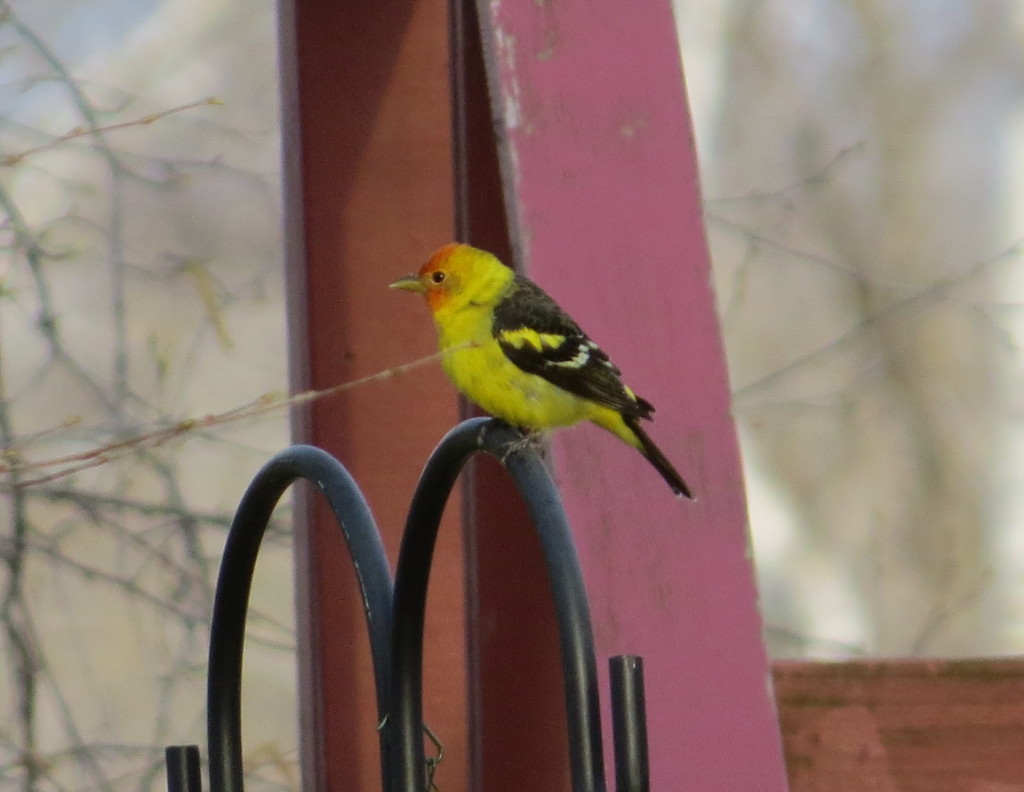
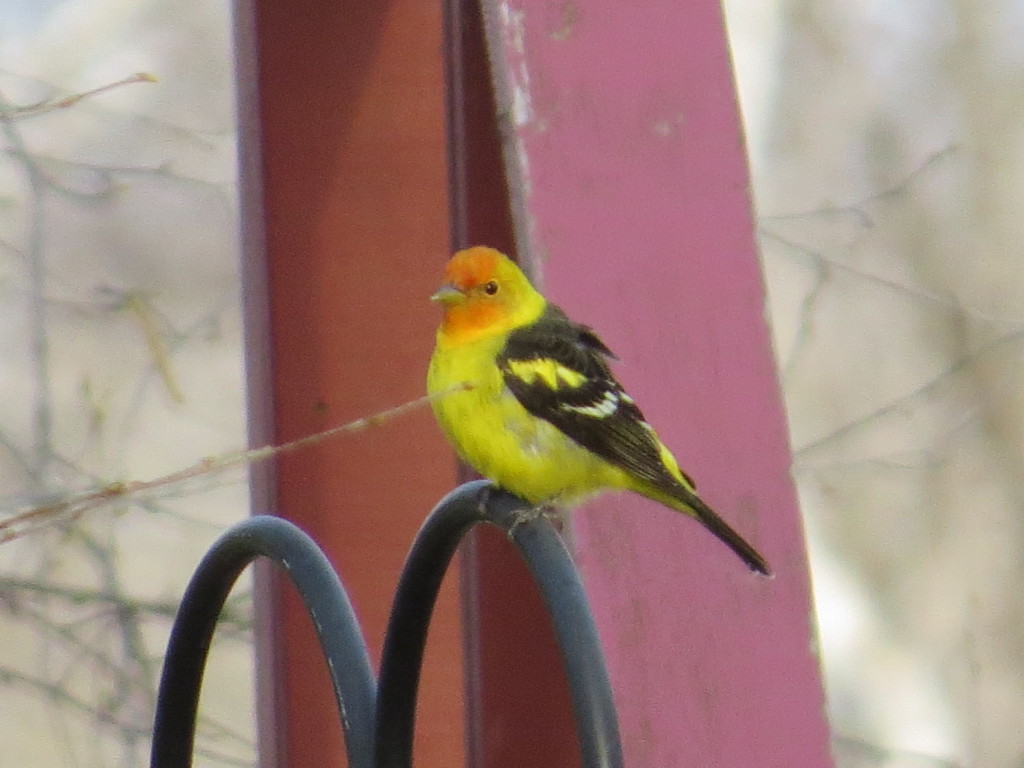
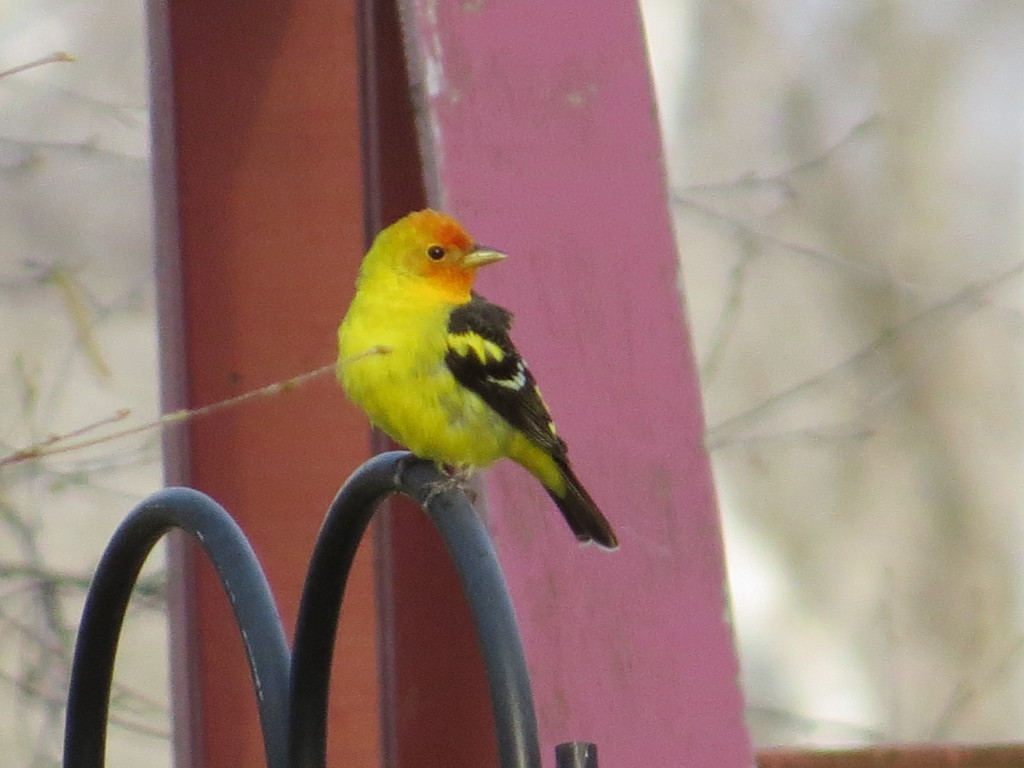
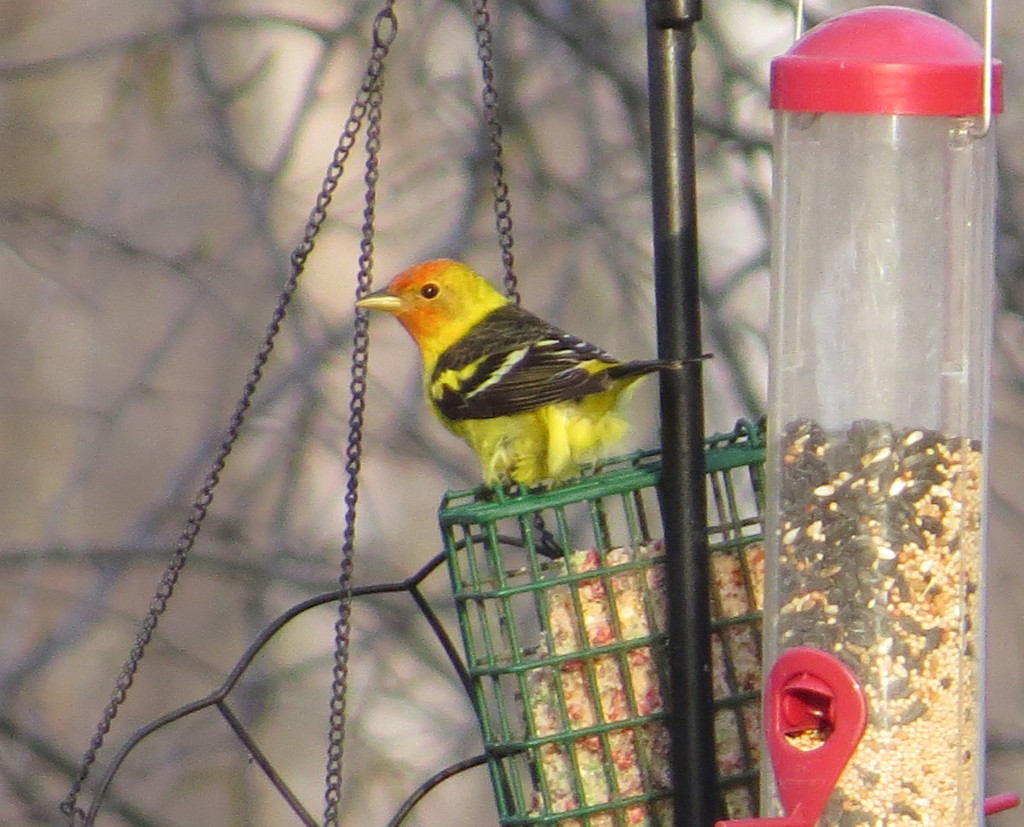
 What are a couple of birders to do when they are kicked out of the house for a bonafide girls-only, princess birthday tea-party? Hmmmm…
What are a couple of birders to do when they are kicked out of the house for a bonafide girls-only, princess birthday tea-party? Hmmmm…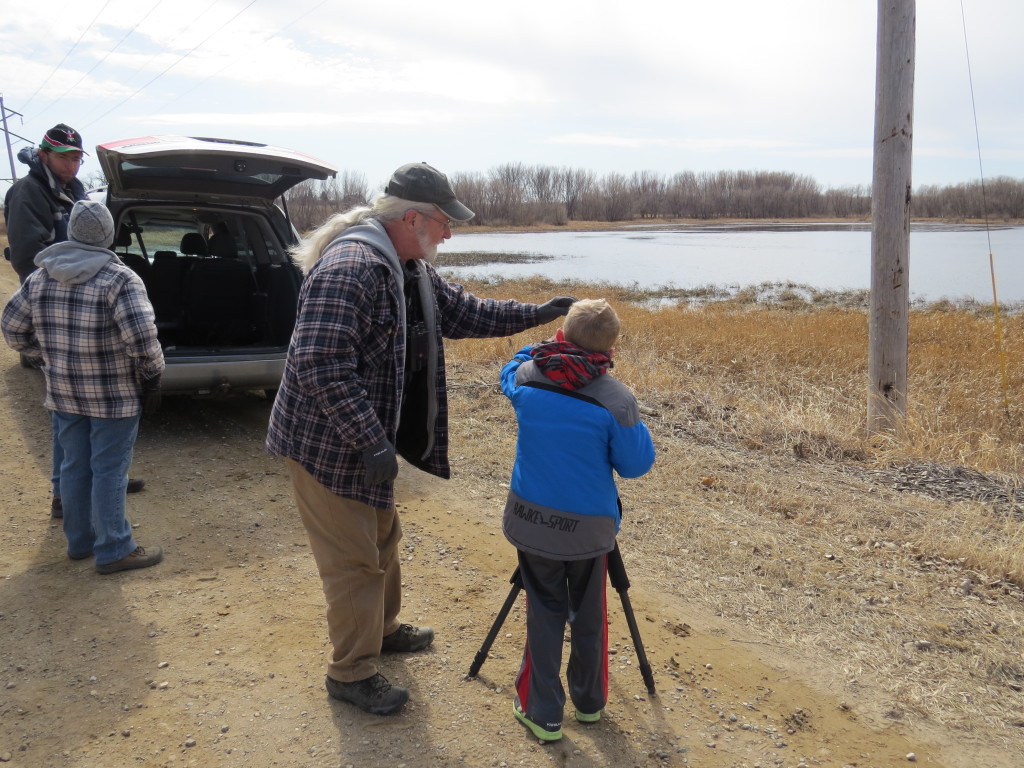
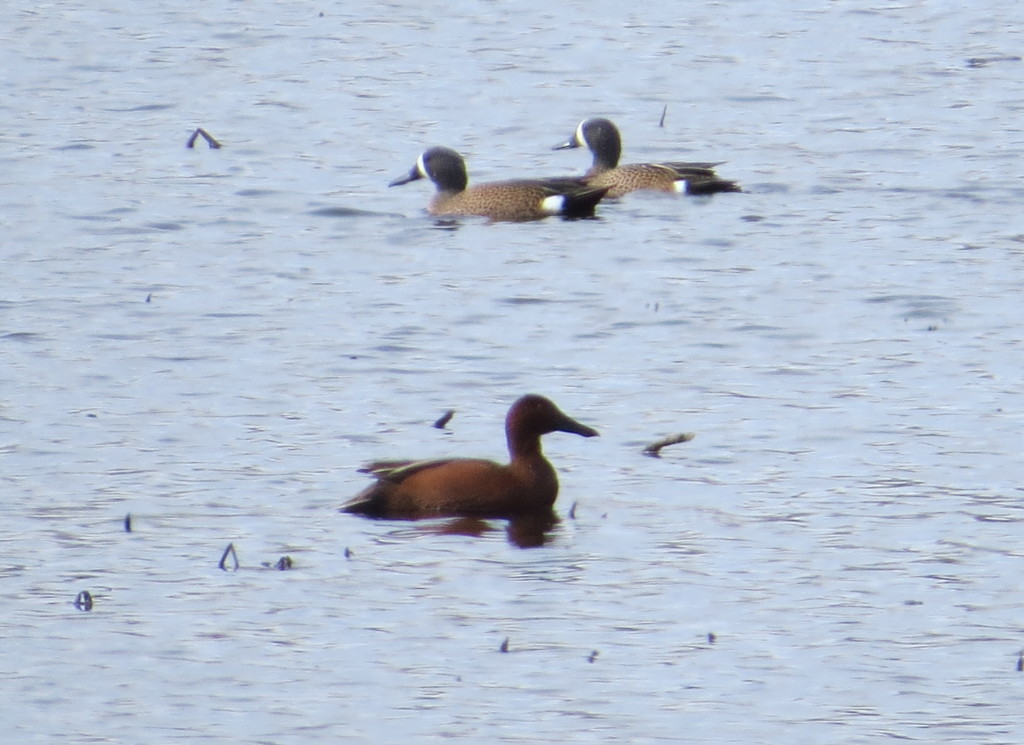
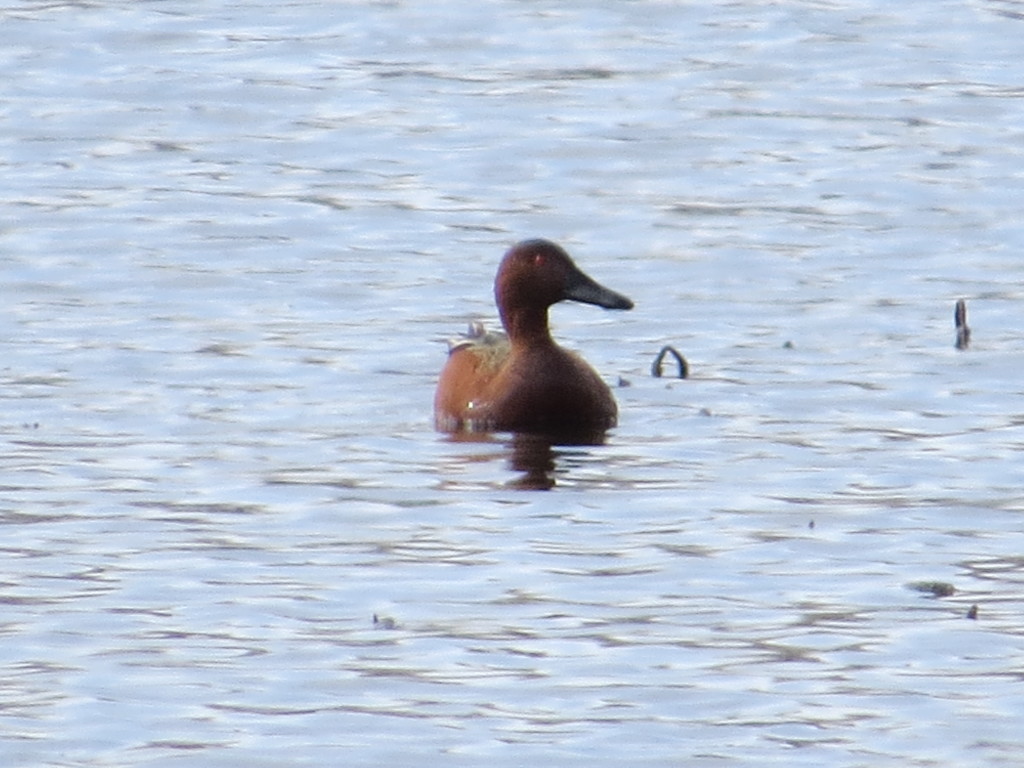
 This sighting at a birding-rave may be the rarest thing I’ve seen yet. Just how special is a Cinnamon Teal in Minnesota? It’s drive-your-Porsche-on-gravel special.
This sighting at a birding-rave may be the rarest thing I’ve seen yet. Just how special is a Cinnamon Teal in Minnesota? It’s drive-your-Porsche-on-gravel special.
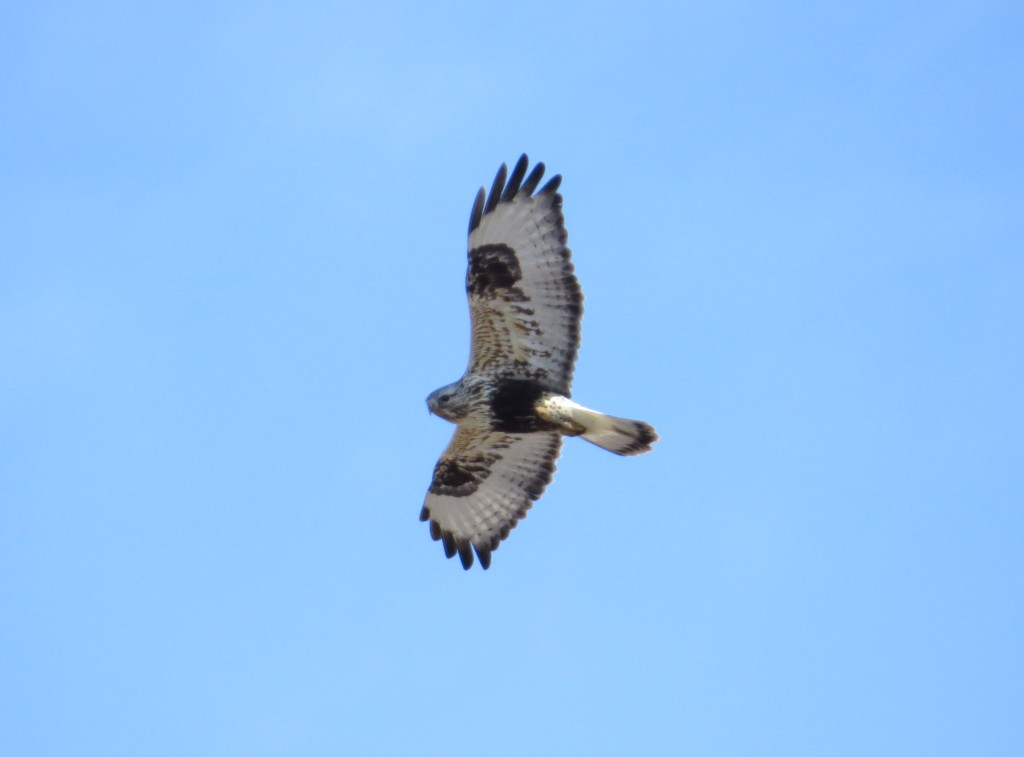


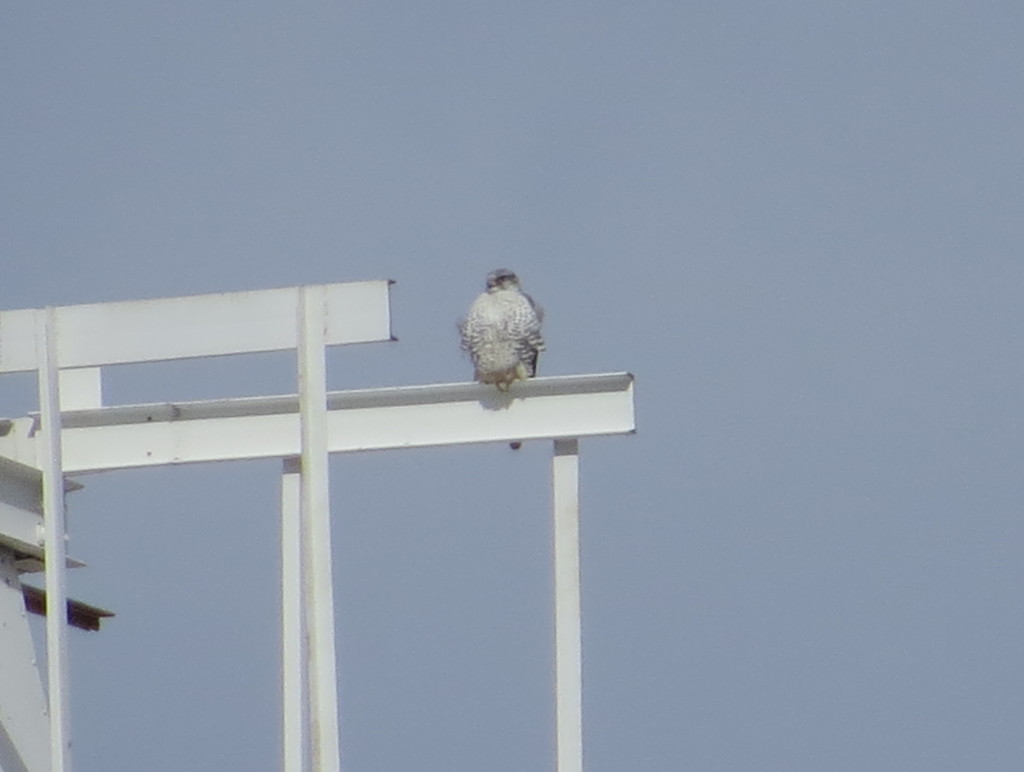
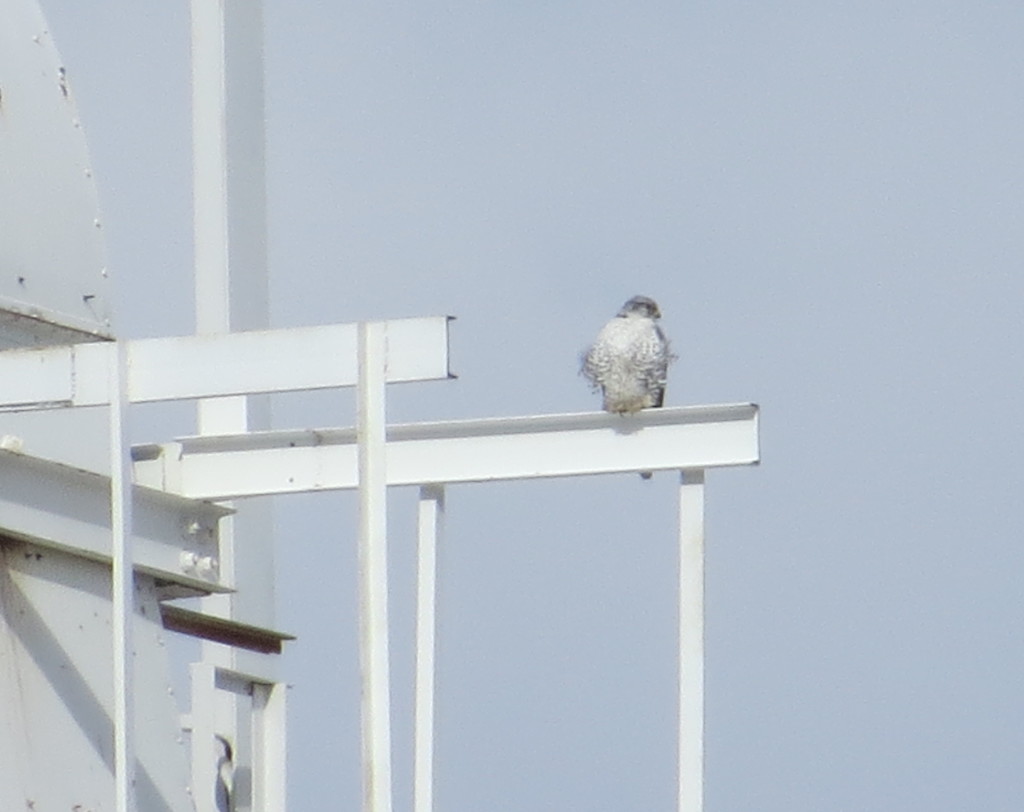 Some fun history on Gyr is that this same individual was caught and banded in 2003 in the Duluth/Superior area. At the time it was a third-year bird. It ended up returning every winter for four years and then did not return until this year! Given when it was banded, the age of this male Gyrfalcon is estimated to be 14 years 8 months–the oldest Gyrfalcon on record!
Some fun history on Gyr is that this same individual was caught and banded in 2003 in the Duluth/Superior area. At the time it was a third-year bird. It ended up returning every winter for four years and then did not return until this year! Given when it was banded, the age of this male Gyrfalcon is estimated to be 14 years 8 months–the oldest Gyrfalcon on record!